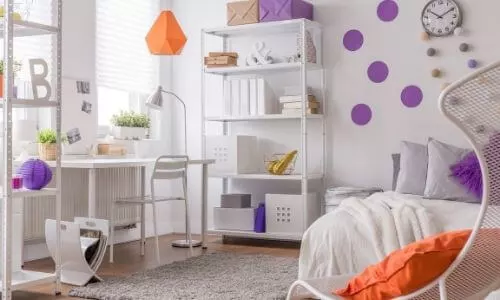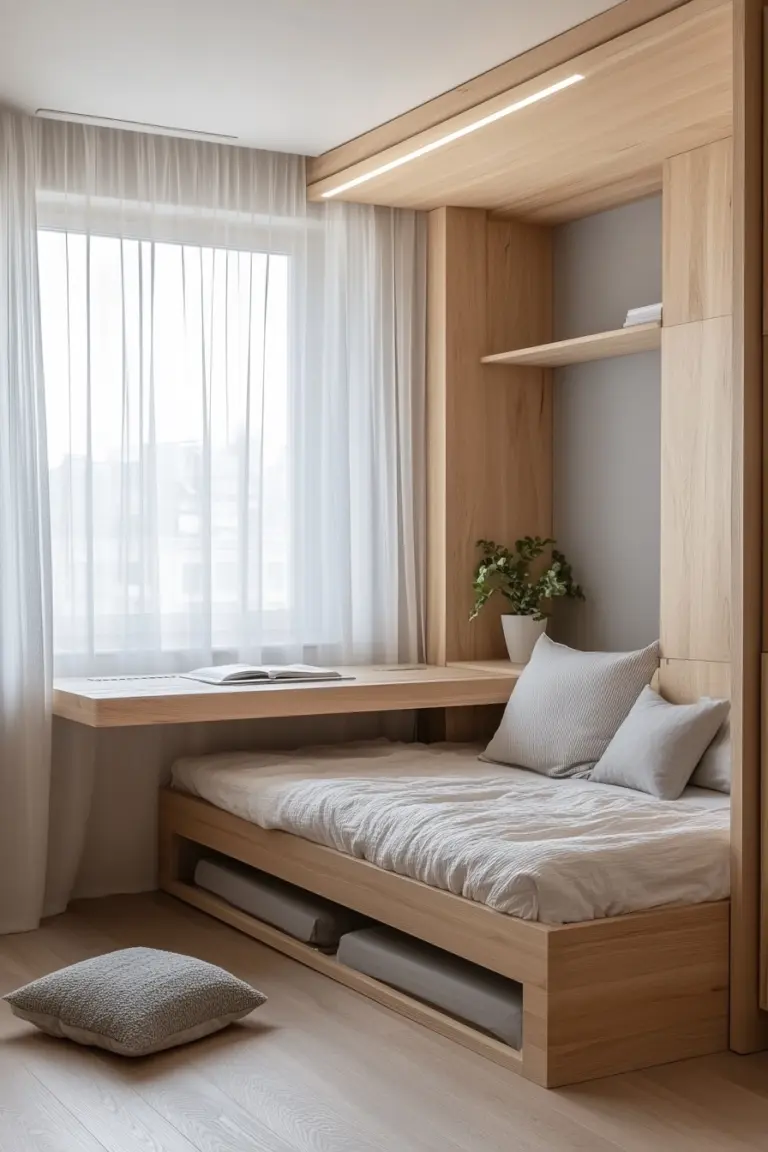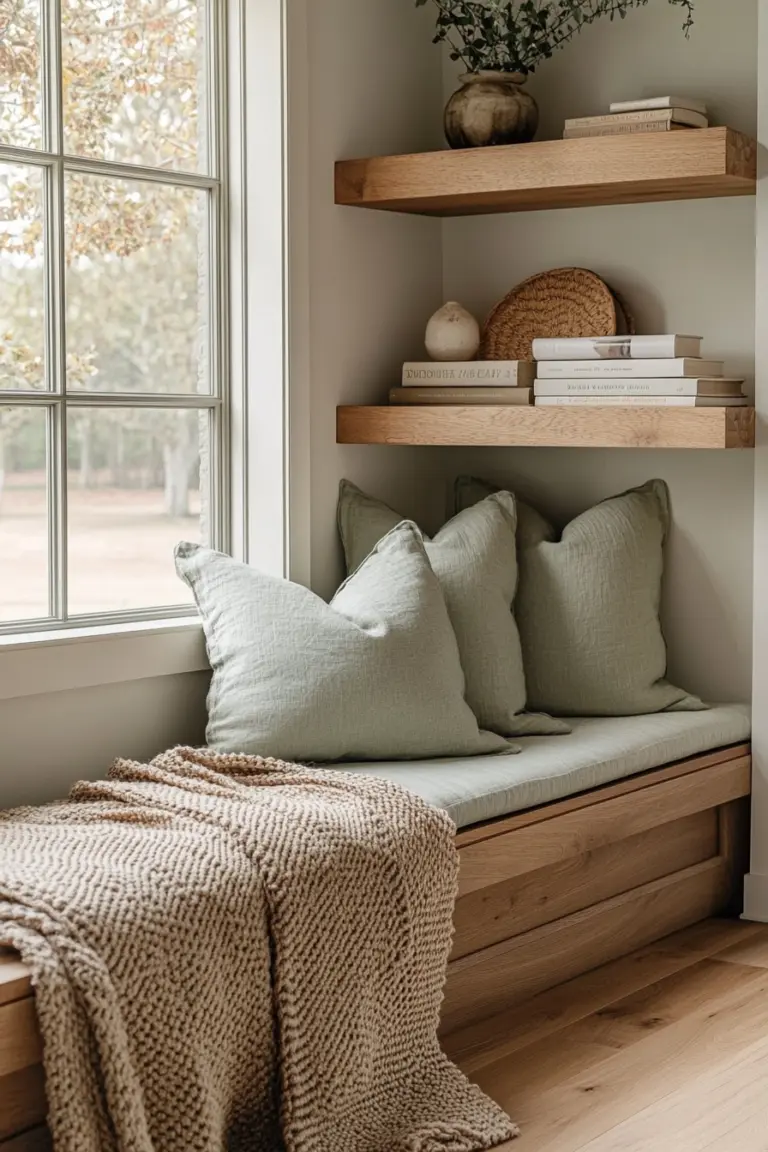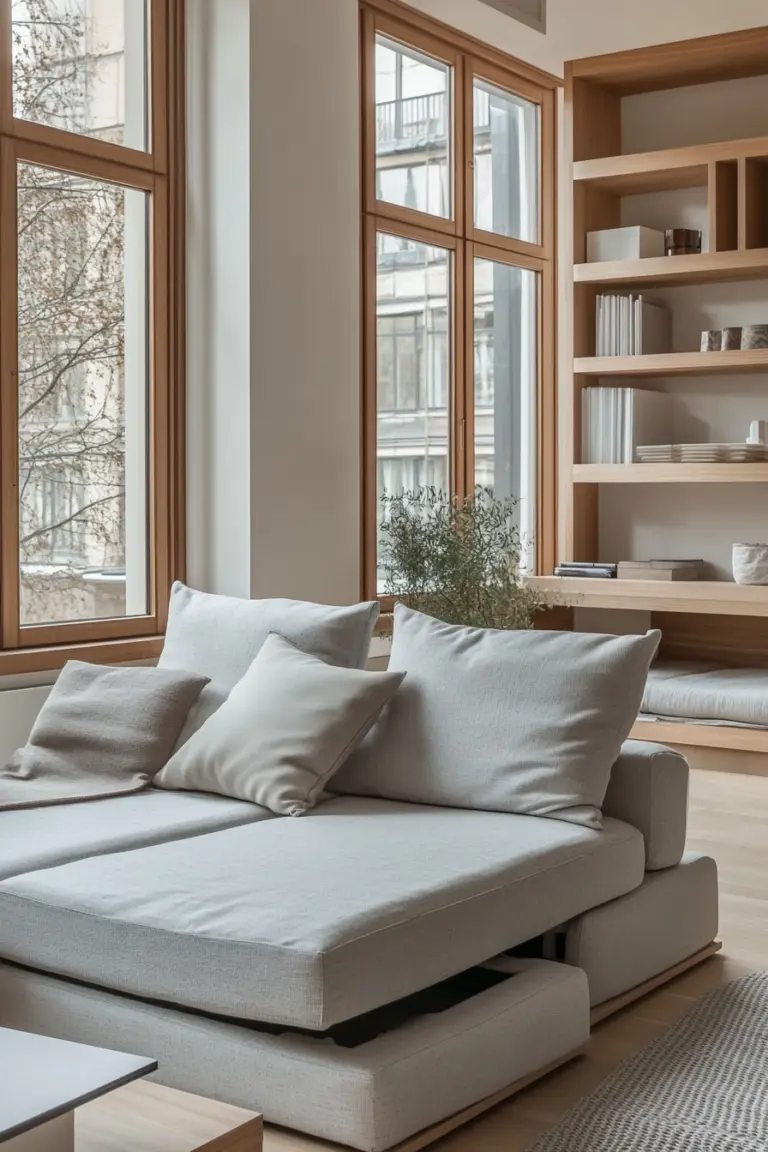Small Children Room Ideas: Creating Functional and Inspiring Spaces
Designing a room for small children is a delightful yet challenging endeavor. The right interior design not only enhances the aesthetics of a space but also fosters creativity, learning, and comfort for your little ones.
A thoughtful approach to decor can transform a simple room into a nurturing environment that reflects a child’s personality and interests, while also being practical for parents. In this article, we explore a variety of unique design concepts tailored specifically for children’s rooms, each with its own theme and character.
From vibrant Montessori-inspired spaces to serene minimalist designs, the ideas presented here cater to diverse personalities and lifestyles. Each concept embraces functionality and creativity, ensuring that children have the freedom to express themselves while also enjoying a safe and organized environment.
Let’s dive into these 20 enchanting small children room ideas that promise to inspire and delight both kids and parents alike.
1. Colorful Montessori-Inspired Room
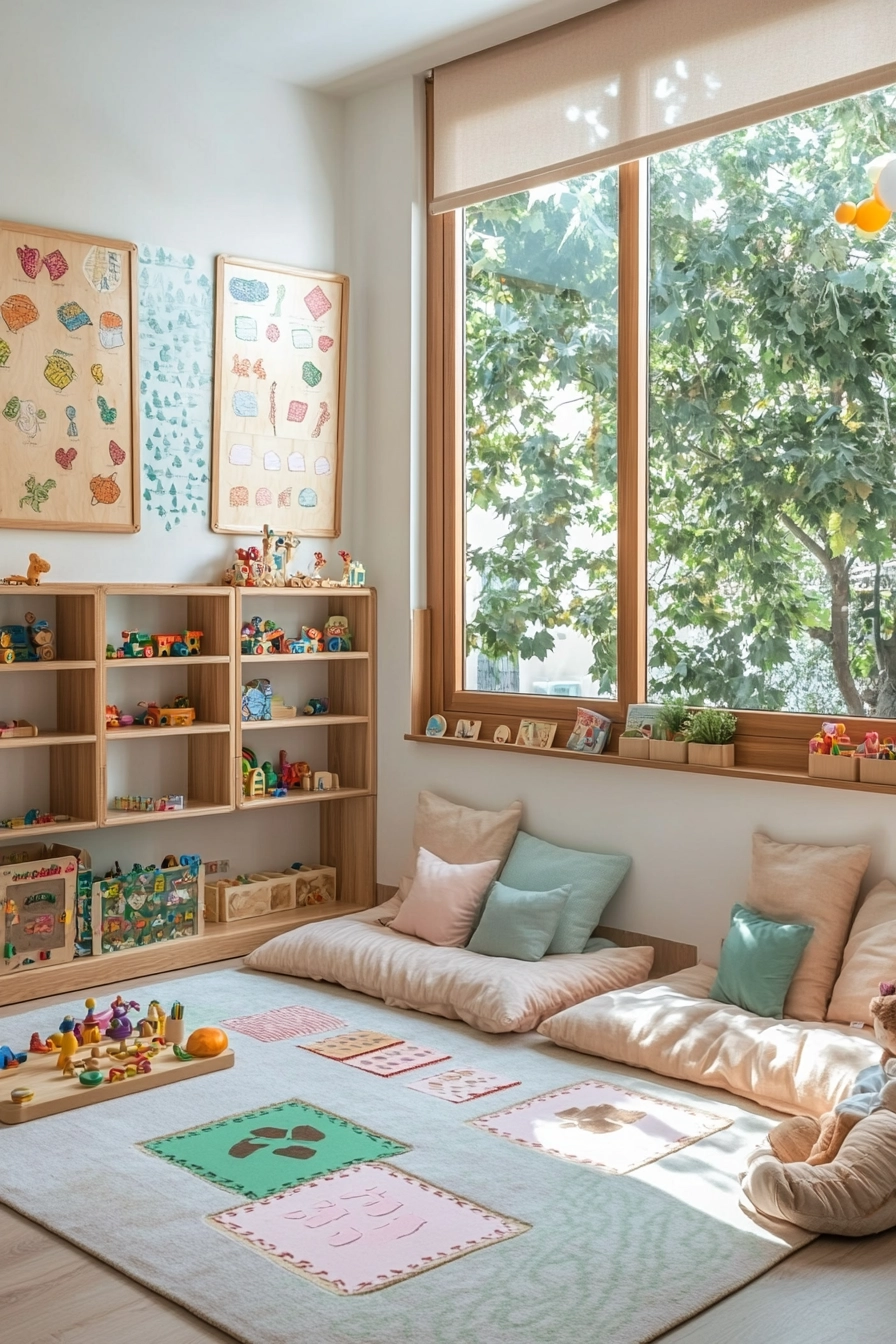
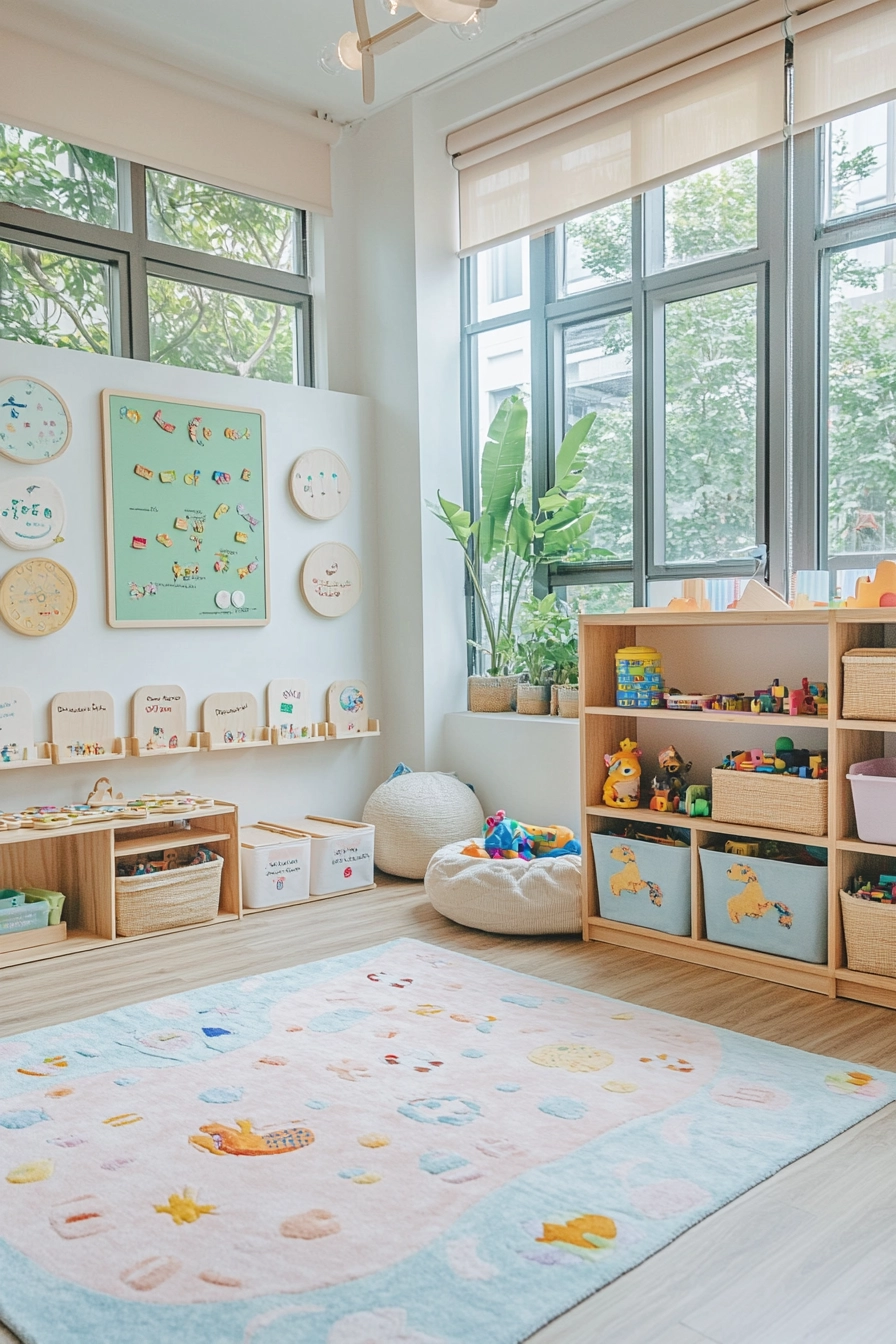
This colorful Montessori-inspired room is designed to stimulate young minds and promote independence. Featuring low-profile wooden furniture that is accessible for children, this space encourages exploration and creativity.
The walls are adorned with wall-mounted activity boards that invite interactive play, while a soft pastel area rug adds warmth underfoot. Natural wood shelving provides organized toy storage, ensuring that everything has its place and promoting tidiness.
The large windows flood the room with soft, diffused light, creating a serene atmosphere perfect for learning and play. The overall mood is one of joyful engagement, as each element is carefully chosen to support a child’s development.
Incorporating bright colors alongside natural materials creates a harmonious environment that is both lively and calming.
- Use low-profile furniture to promote independence.
- Incorporate wall-mounted activity boards to enhance play.
- Choose a soft pastel color palette for a calming effect.
- Utilize natural wood for shelving to encourage organization.
- Ensure ample natural light to support a healthy environment.
Pro Design Tip: Include open shelving units to allow children to easily access their toys and books, fostering a sense of ownership and responsibility.
Budget Consideration: If custom furniture is beyond reach, consider DIY options using affordable materials to create low-profile pieces that fit the Montessori philosophy.
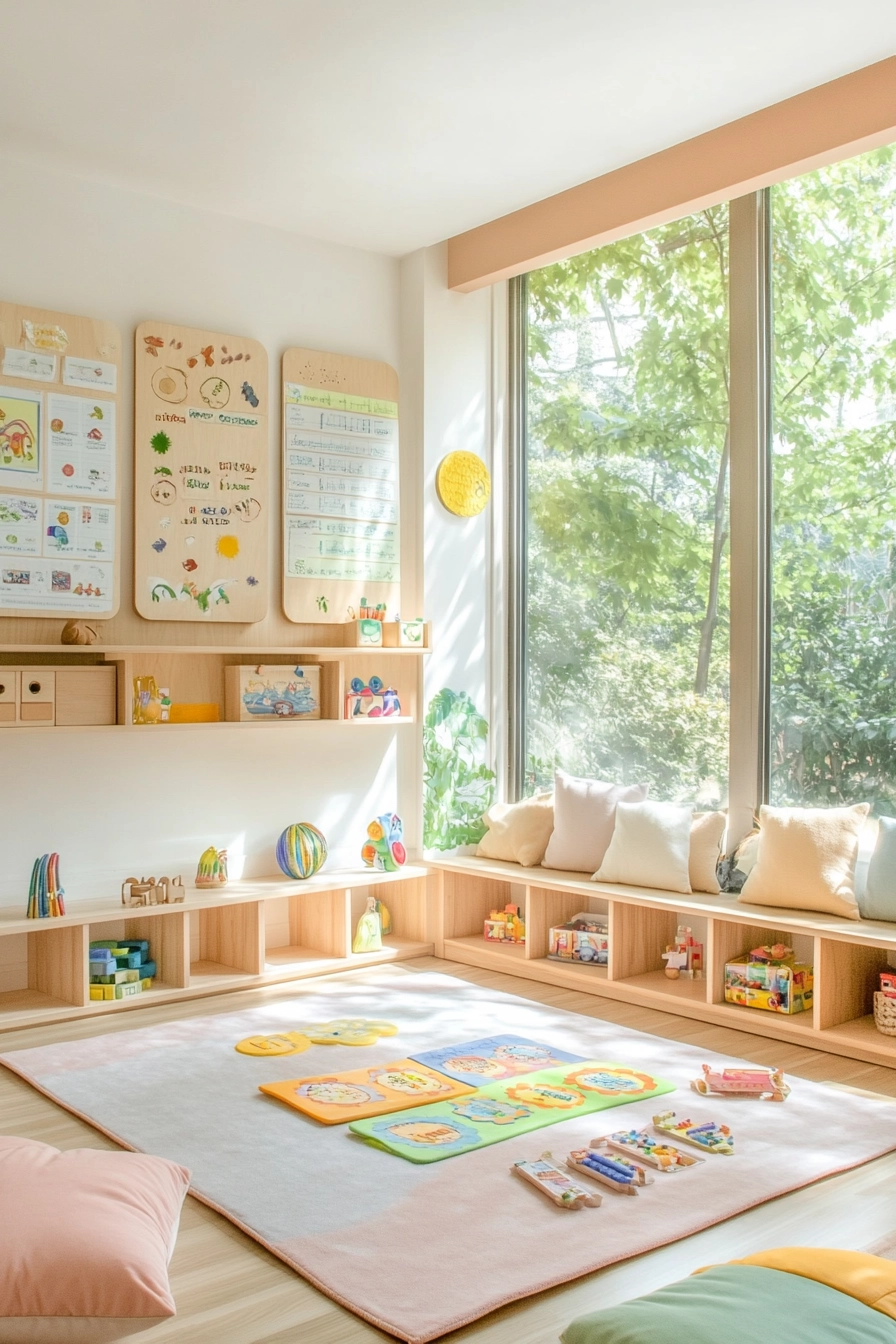
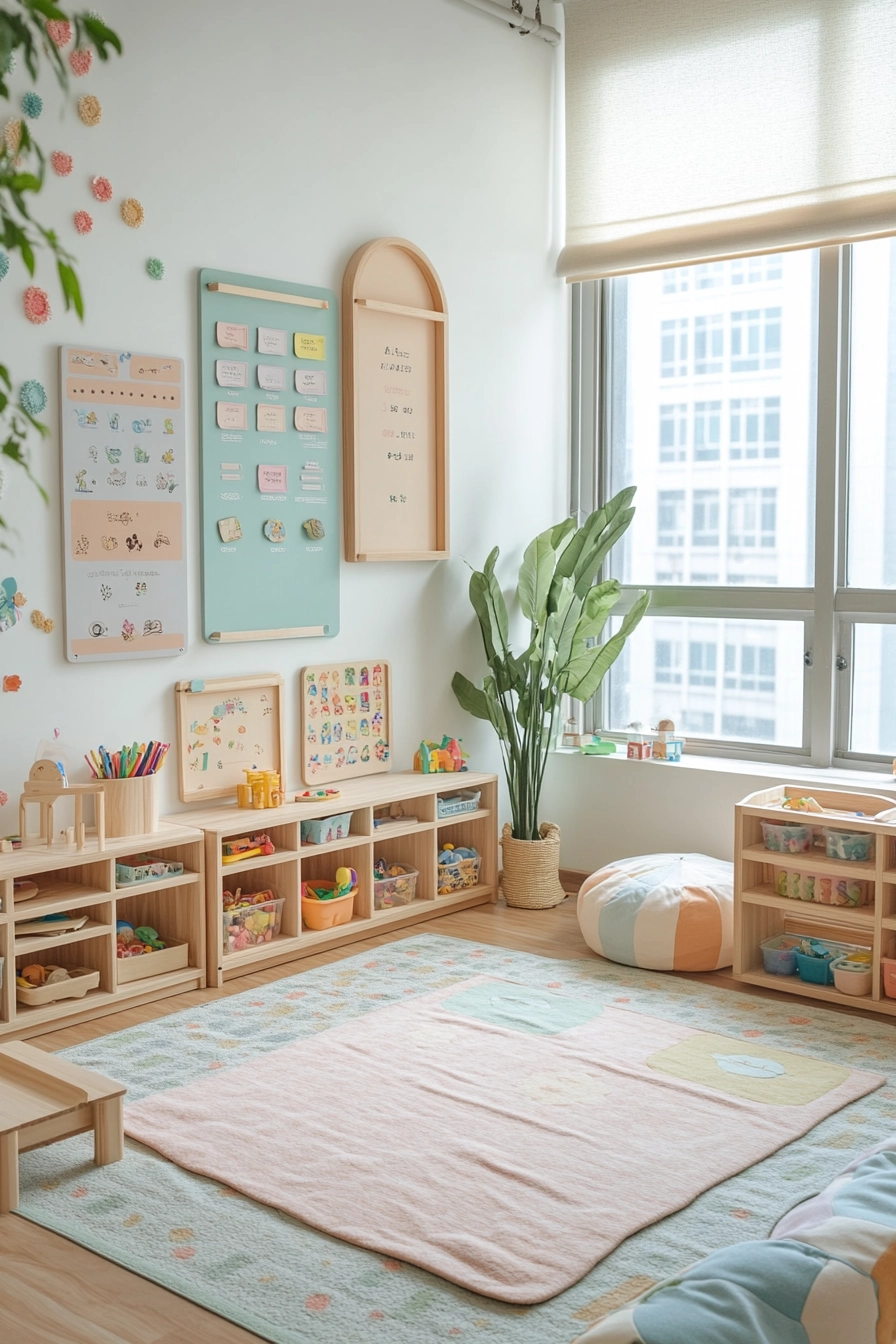
2. Scandinavian Minimalist Room
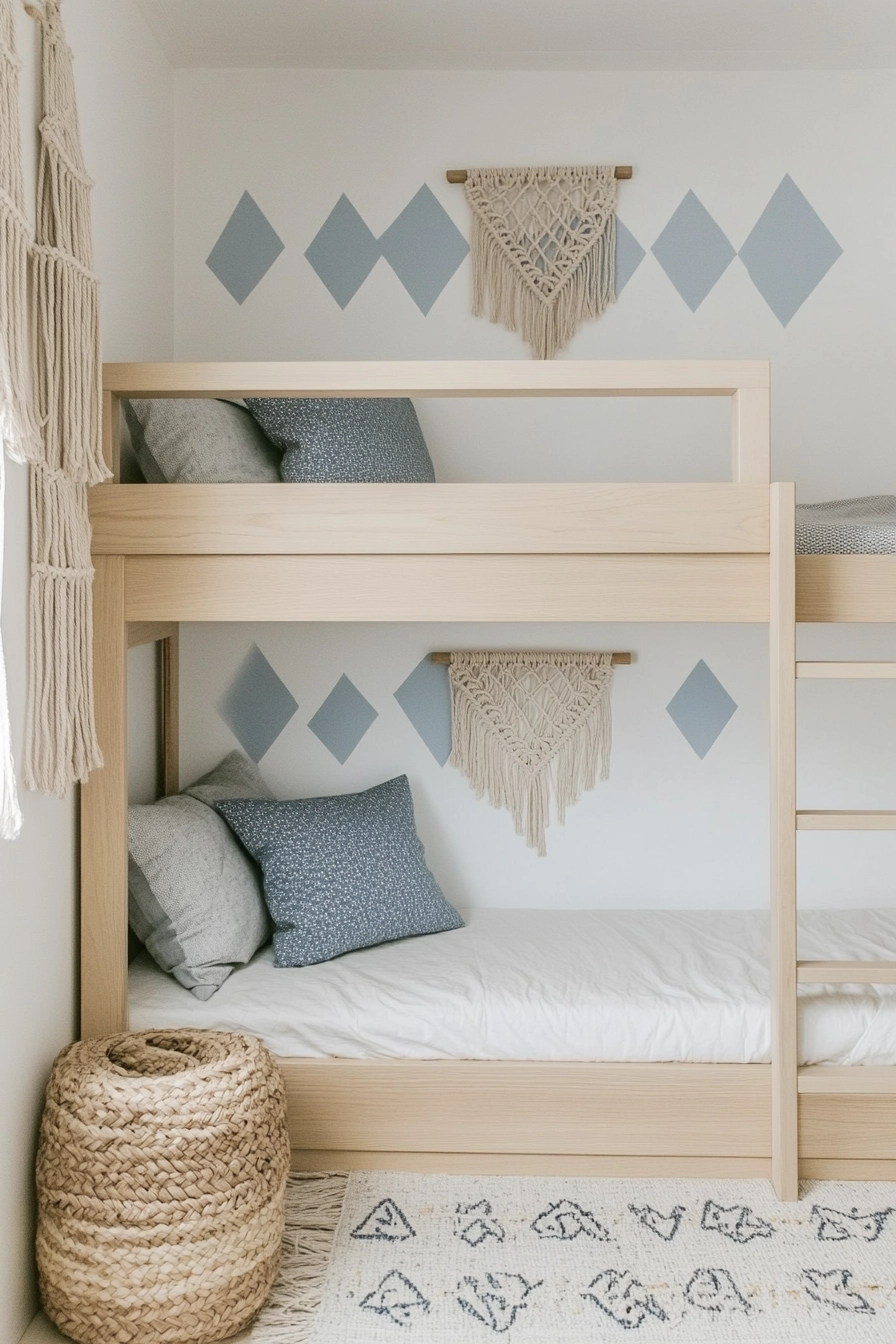
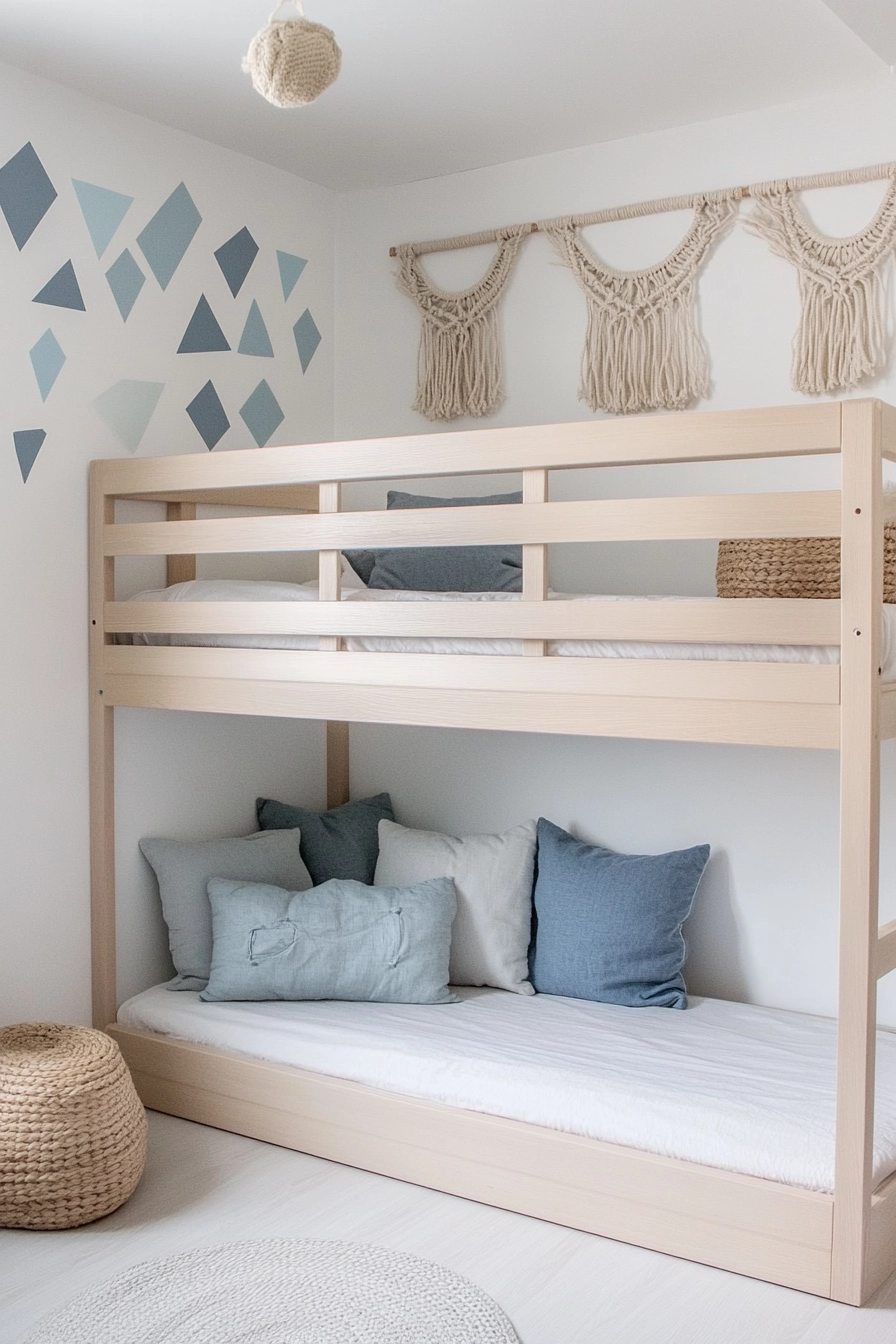
This Scandinavian minimalist room embodies simplicity and functionality with its clean lines and neutral color palette. The white walls create an airy feel, while light oak bunk beds with integrated safety rails provide a safe sleeping area for kids.
Geometric wall decals in muted blue and grey tones add a touch of playfulness without overwhelming the space.
A built-in reading nook with soft cushions invites cozy moments, encouraging a love for books and storytelling. Hanging macramé storage baskets add a bohemian flair, perfect for keeping toys and art supplies within reach yet beautifully organized.
The room is bathed in soft natural light, enhancing the minimalist aesthetic while creating a warm and inviting environment.
- Opt for light colors and natural materials for a serene look.
- Incorporate geometric patterns for visual interest.
- Design a cozy reading nook to promote literacy.
- Use macramé baskets for stylish storage solutions.
- Maximize natural light for a bright atmosphere.
Pro Design Tip: Select multi-functional furniture, such as bunk beds with storage underneath, to save space and reduce clutter.
Budget Consideration: Invest in high-quality foundational pieces like beds and desks, while using budget-friendly decor elements to maintain an appealing look.
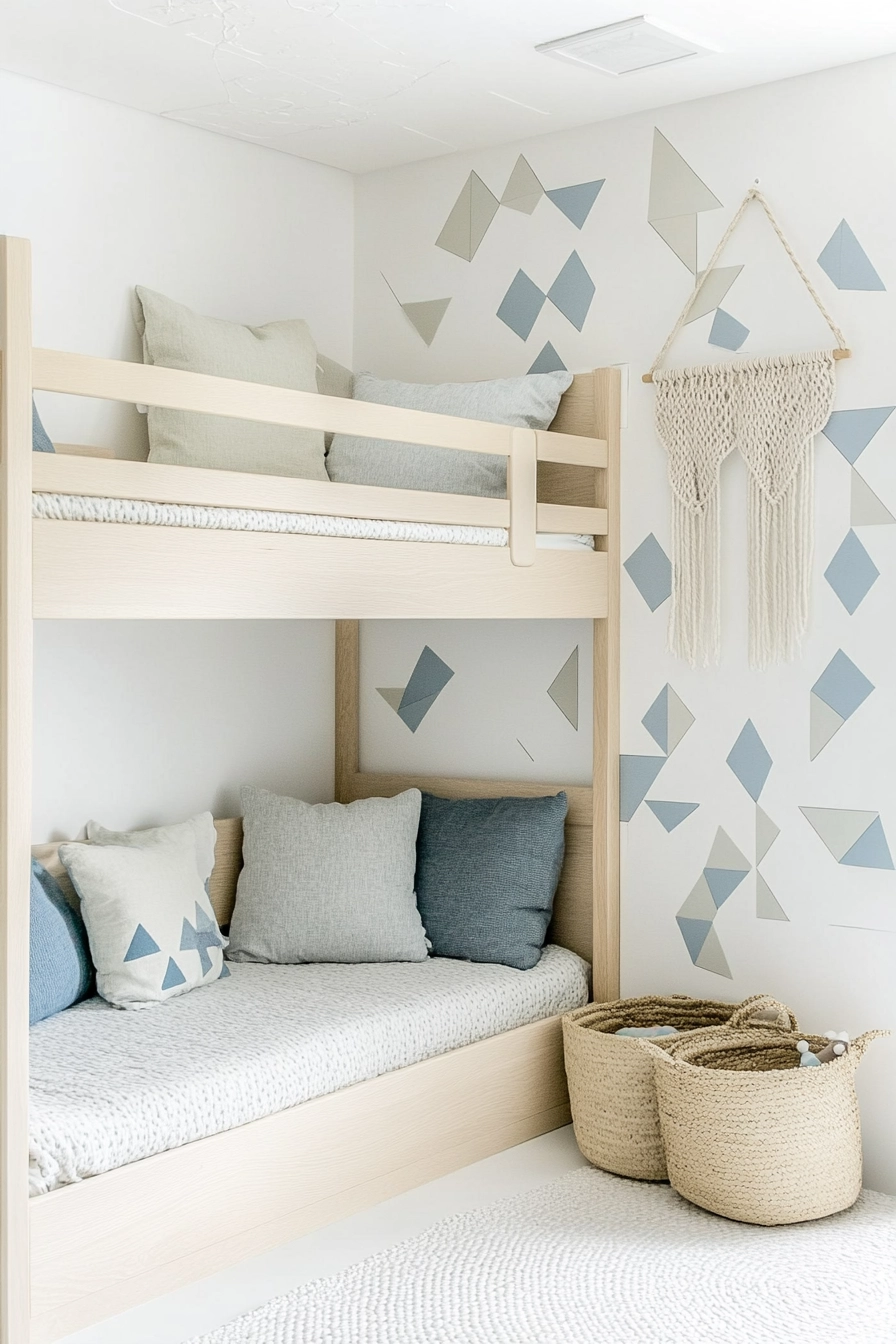
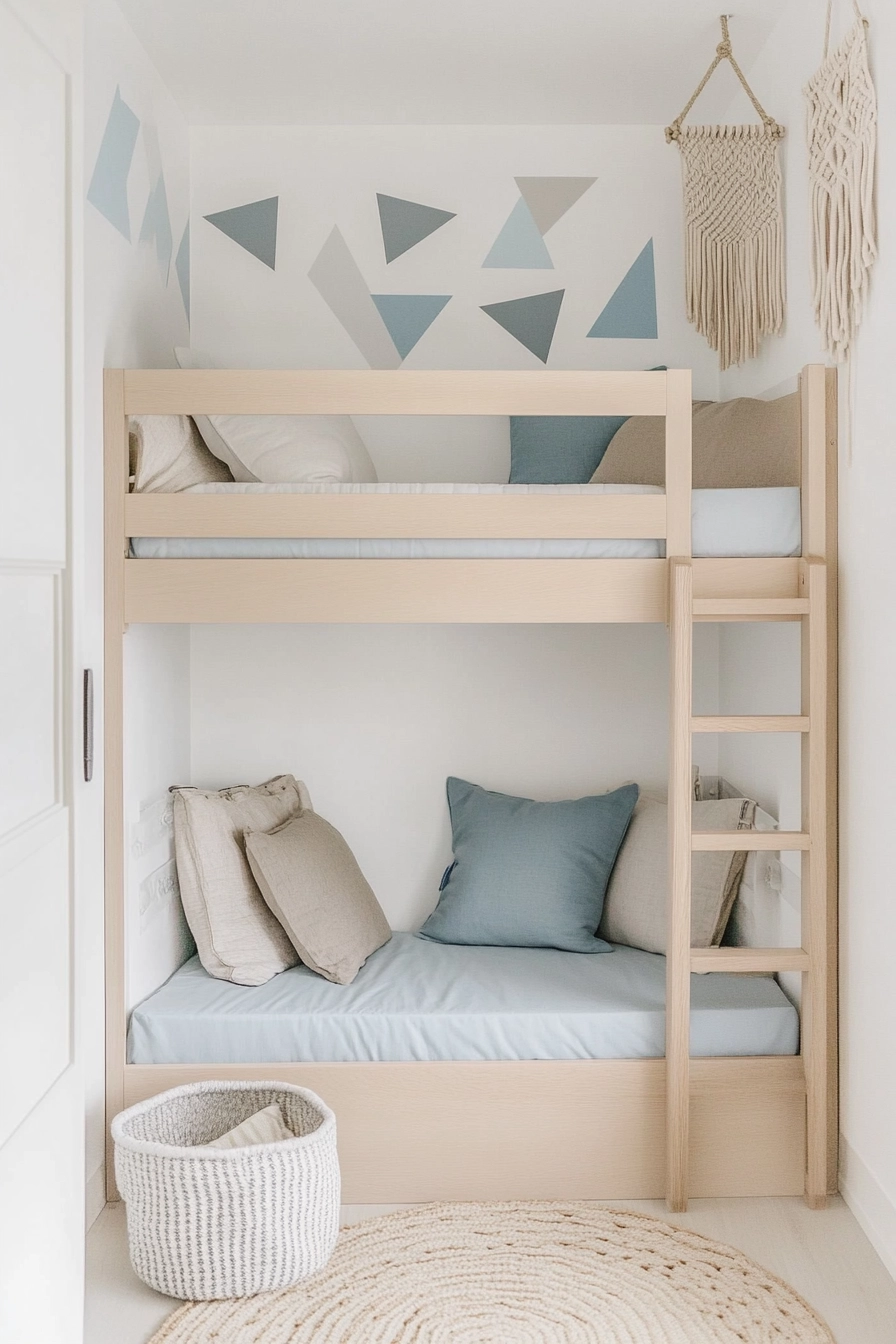
3. Whimsical Woodland-Themed Room
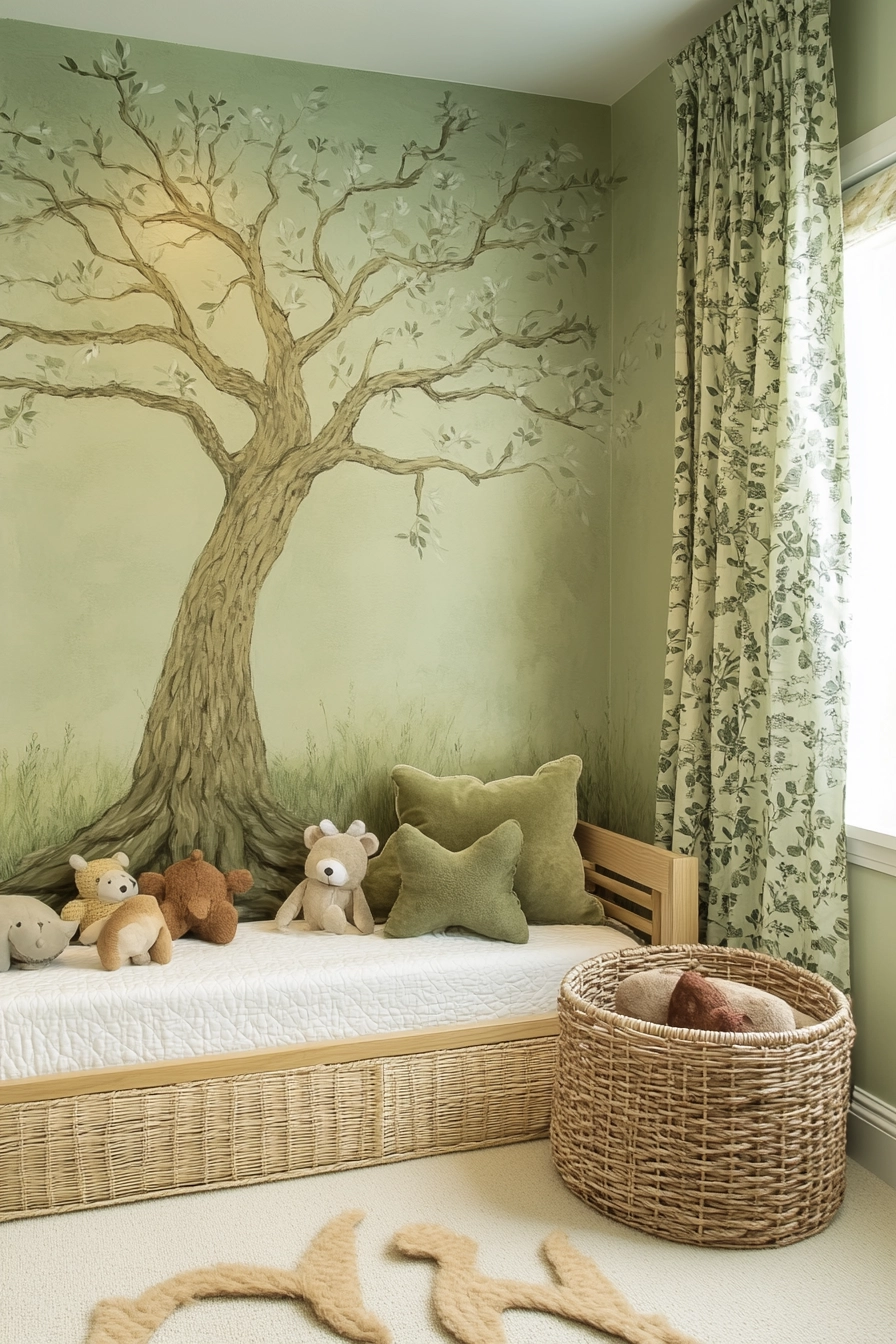
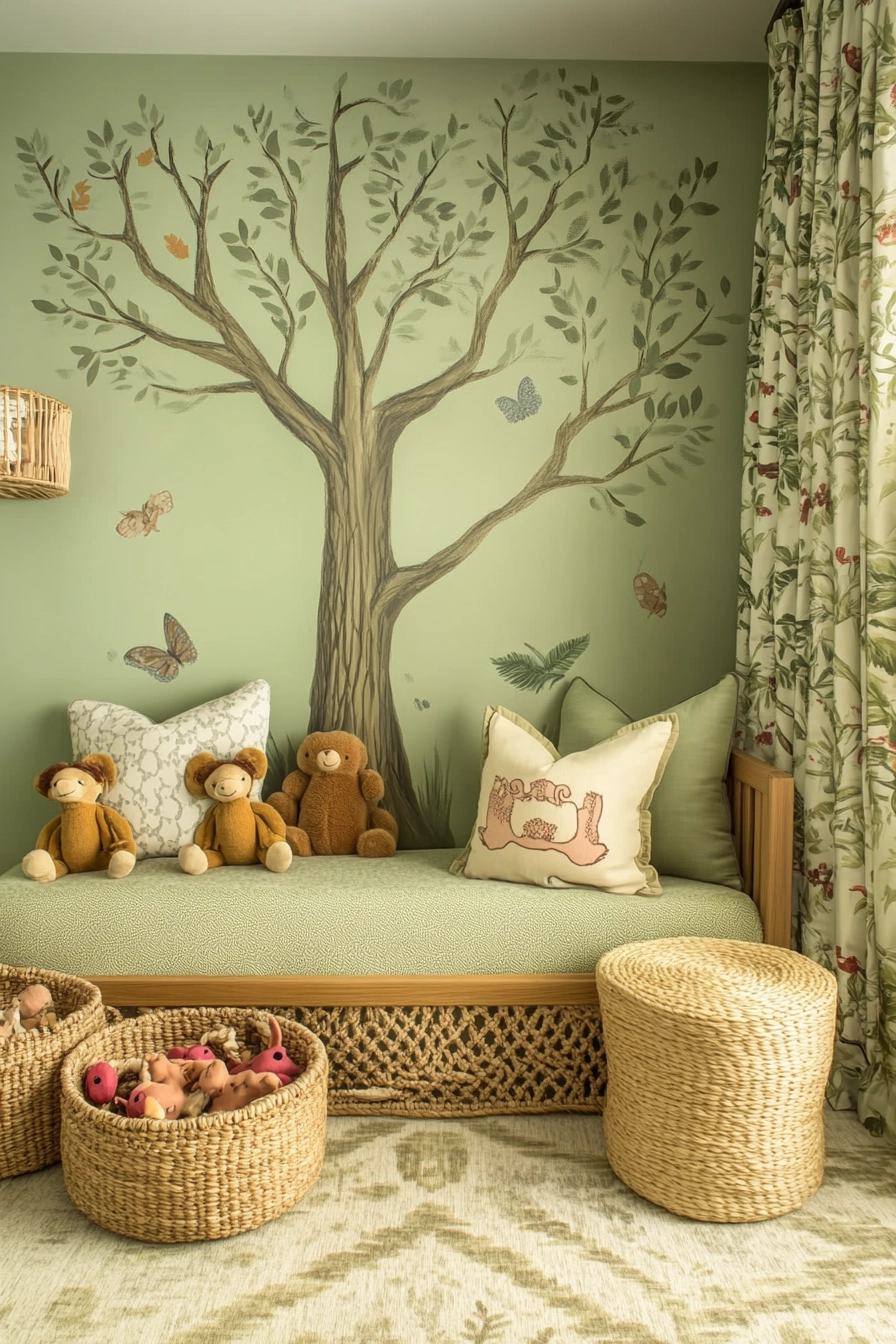
Step into a whimsical woodland-themed room where imagination runs wild. The sage green accent wall creates a calming backdrop, while a hand-painted tree mural brings nature indoors, sparking a child’s creativity.
A natural wood bed frame complements the theme, and plush animal-shaped throw pillows provide comfort and a playful touch.
Woven rattan storage baskets are both functional and stylish, perfect for keeping toys organized. Botanical print curtains frame the windows, allowing soft ambient lighting to filter through, further enhancing the nurturing environment.
This design encourages children to explore their love for nature and storytelling, making it an ideal retreat for play and rest.
- Choose nature-inspired colors for a tranquil atmosphere.
- Incorporate hand-painted murals for a personal touch.
- Use plush pillows to create a cozy reading corner.
- Opt for woven baskets for a stylish storage solution.
- Maximize natural light with sheer curtains.
Pro Design Tip: Consider adding a small indoor garden or a few potted plants to enhance the woodland theme and teach children about nature.
Budget Consideration: Use removable wall decals for murals to save costs while still achieving a whimsical look.
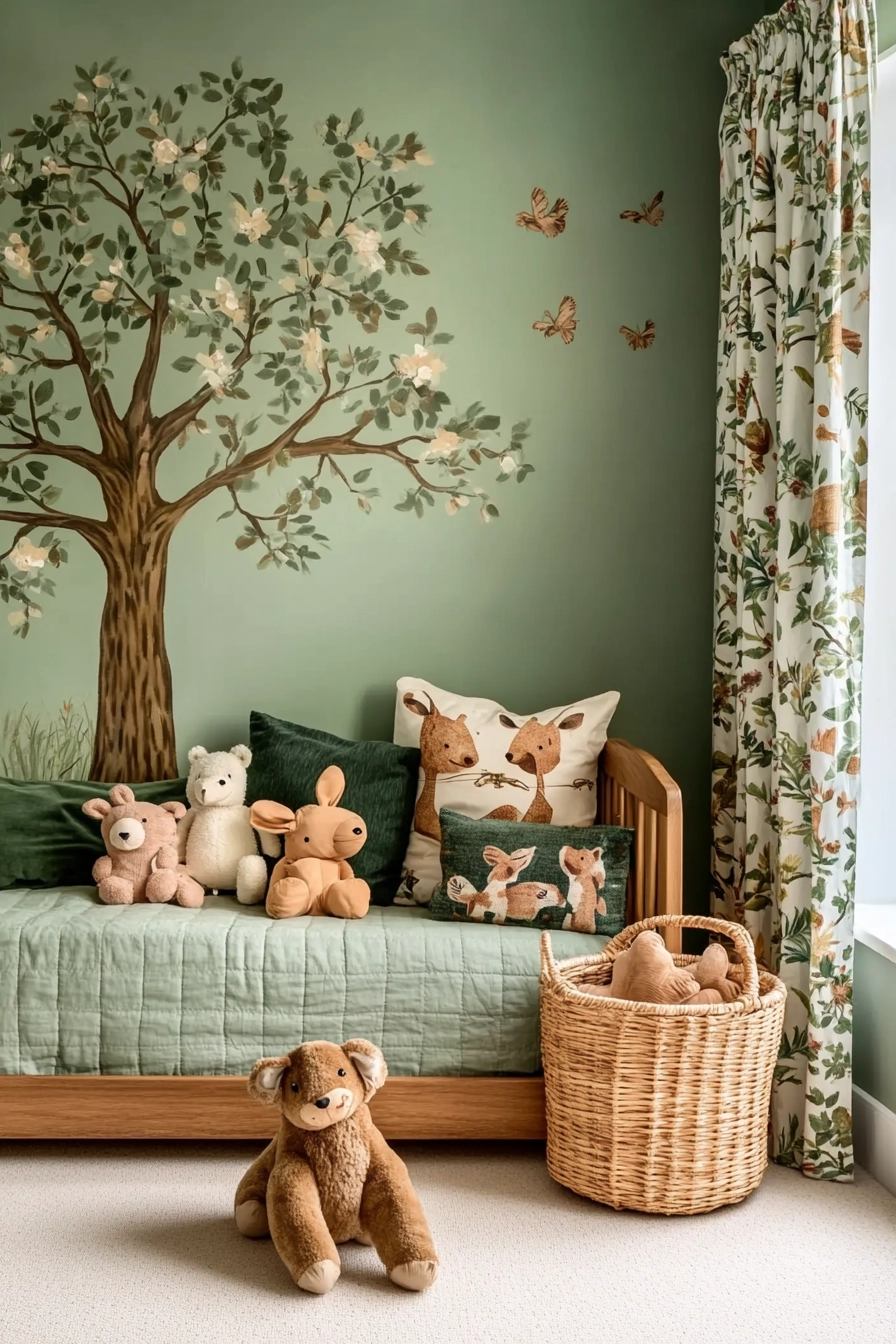

4. Space Exploration-Themed Room

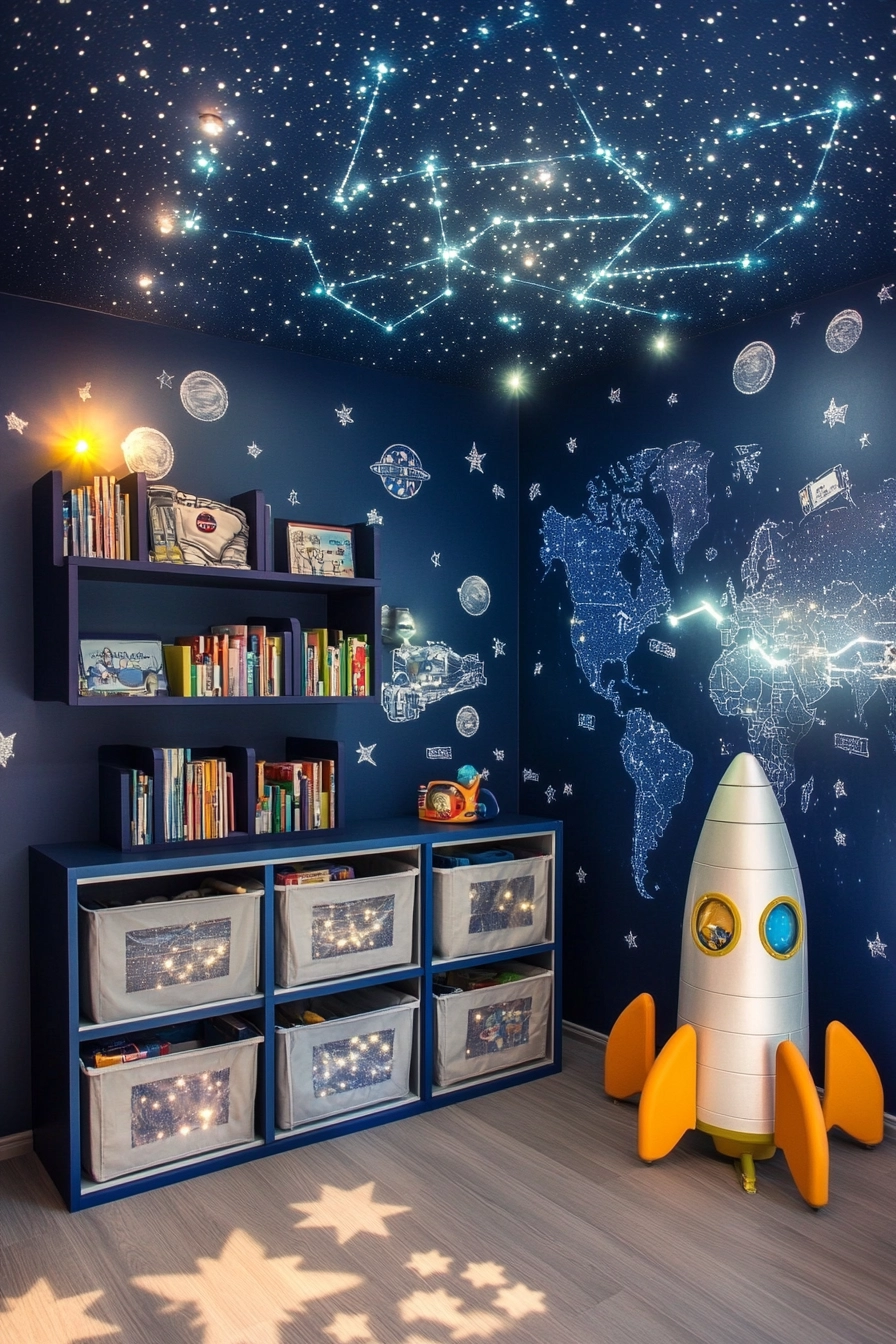
For the little astronaut in your life, this space exploration-themed room is a dream come true. The navy blue and silver color palette creates a cosmic feel, perfect for a budding space enthusiast.
Astronaut wall murals make a bold statement, while modular storage cubes provide practical solutions for toys and books.
The glow-in-the-dark star ceiling adds an element of magic, transforming the room into a starry night sky once the sun goes down. A rocket-shaped bookshelf invites children to explore their imaginations, and an interactive educational wall map sparks curiosity about the universe.
This design encourages learning through play while making bedtime an exciting adventure.
- Incorporate celestial elements for a space-themed atmosphere.
- Use modular storage for easy organization.
- Incorporate glow-in-the-dark features for nighttime fun.
- Design a fun bookshelf to inspire reading.
- Include educational wall elements to encourage curiosity.
Pro Design Tip: Use themed bedding and accessories to enhance the space exploration vibe without overwhelming the room.
Budget Consideration: Use affordable paint to create a starry ceiling, keeping expenses low while achieving a stunning effect.
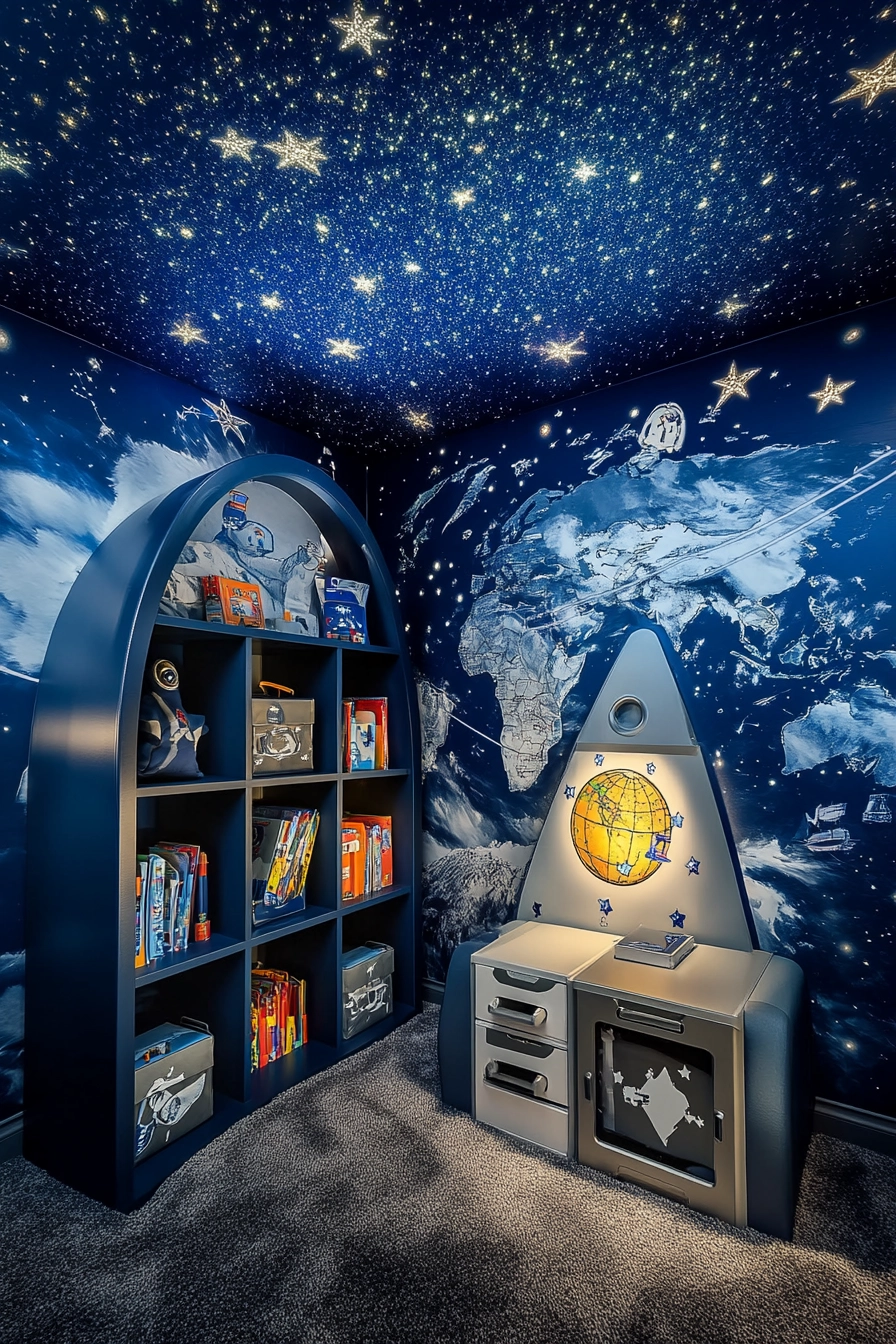
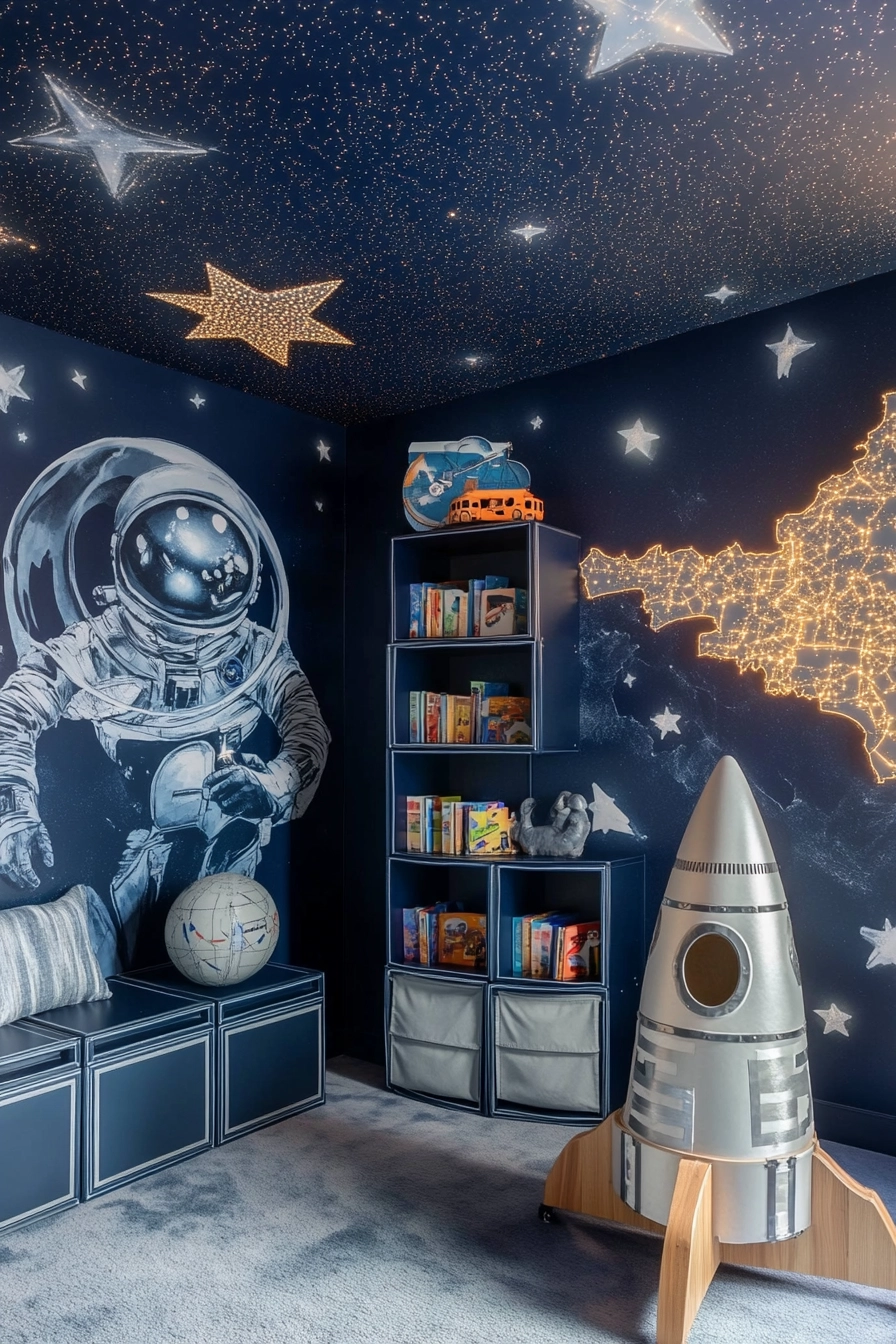
5. Eco-Friendly Montessori Room
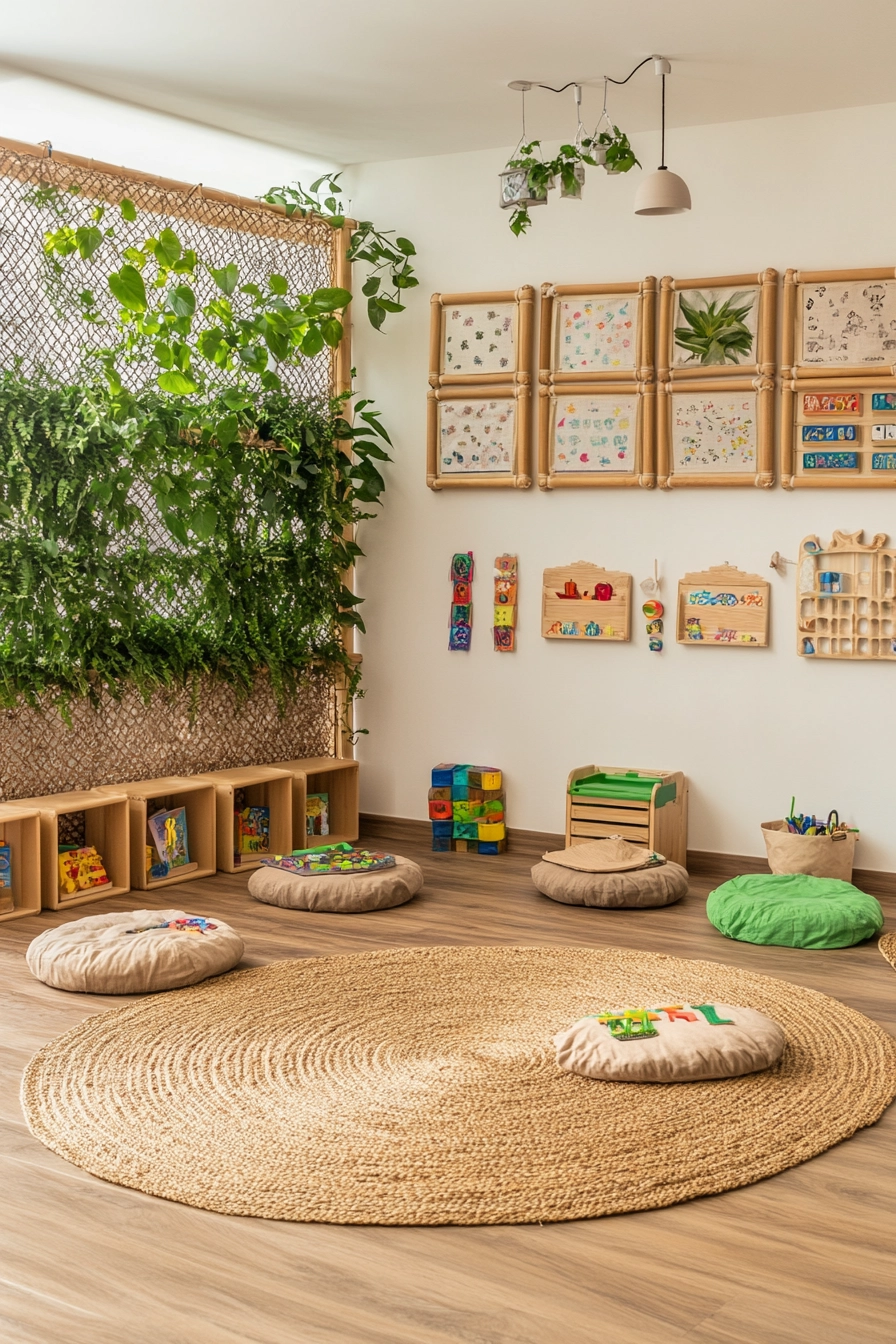
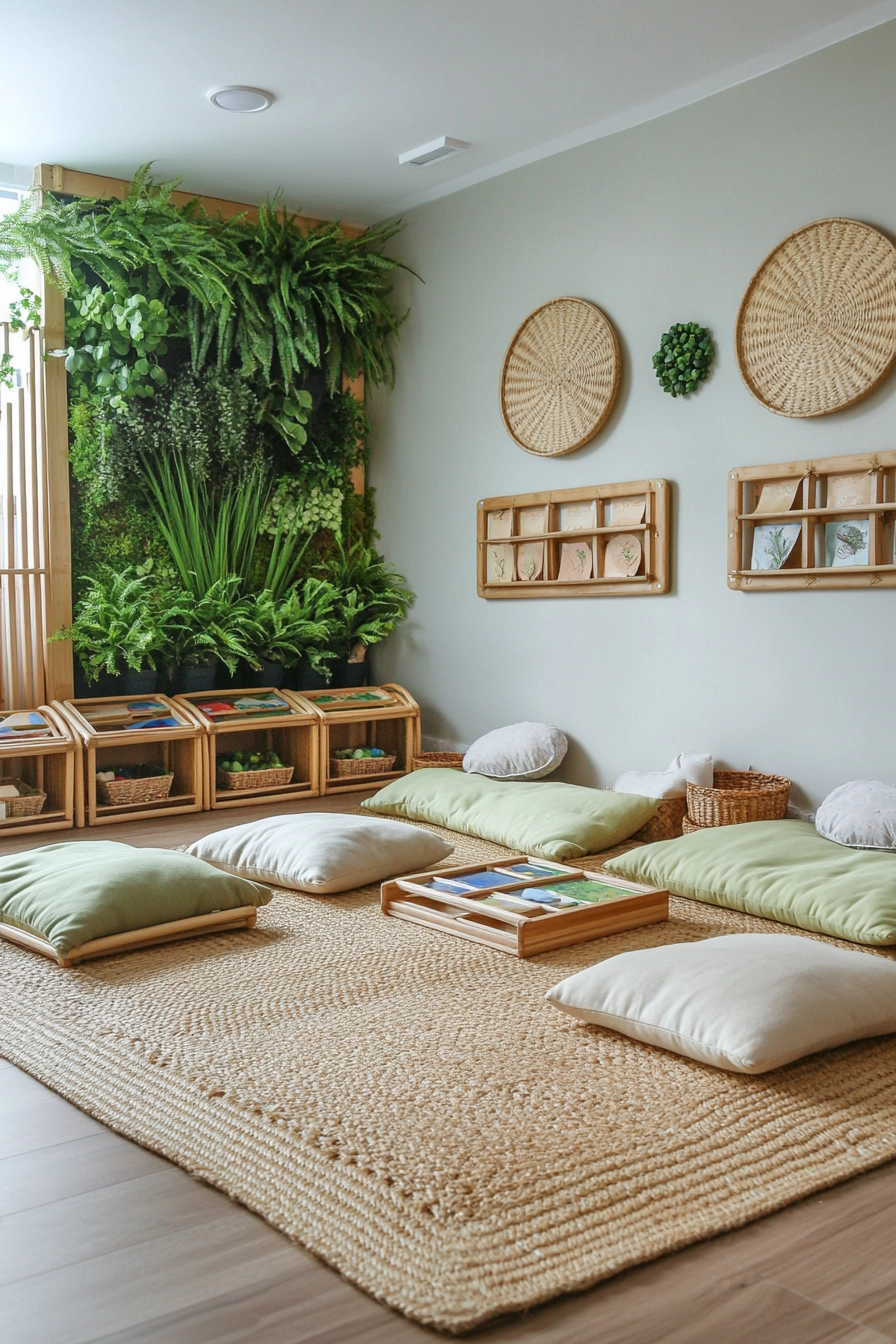
This eco-friendly Montessori room exemplifies sustainability and natural living. Featuring sustainable bamboo furniture, the space is both stylish and environmentally conscious.
A living plant wall not only serves as a focal point but also purifies the air and connects children with nature. Recycled fabric floor cushions offer comfortable seating options, promoting relaxation and play.
The natural jute area rug adds texture underfoot, while wall-mounted educational activity centers provide engaging learning opportunities. The soft earth-tone color scheme creates a calming atmosphere, making it an ideal environment for growth and exploration.
This design embodies a holistic approach to children’s spaces, encouraging eco-awareness from a young age.
- Choose sustainable materials for furniture and decor.
- Incorporate plants for a fresh and healthy environment.
- Use recycled fabrics for cushions and textiles.
- Opt for earth-tone colors for a soothing palette.
- Design activity centers to promote hands-on learning.
Pro Design Tip: Use DIY decor ideas to incorporate natural elements, such as driftwood or stones, into the design for a personal touch.
Budget Consideration: Look for second-hand or upcycled furniture to create a unique look without breaking the bank.
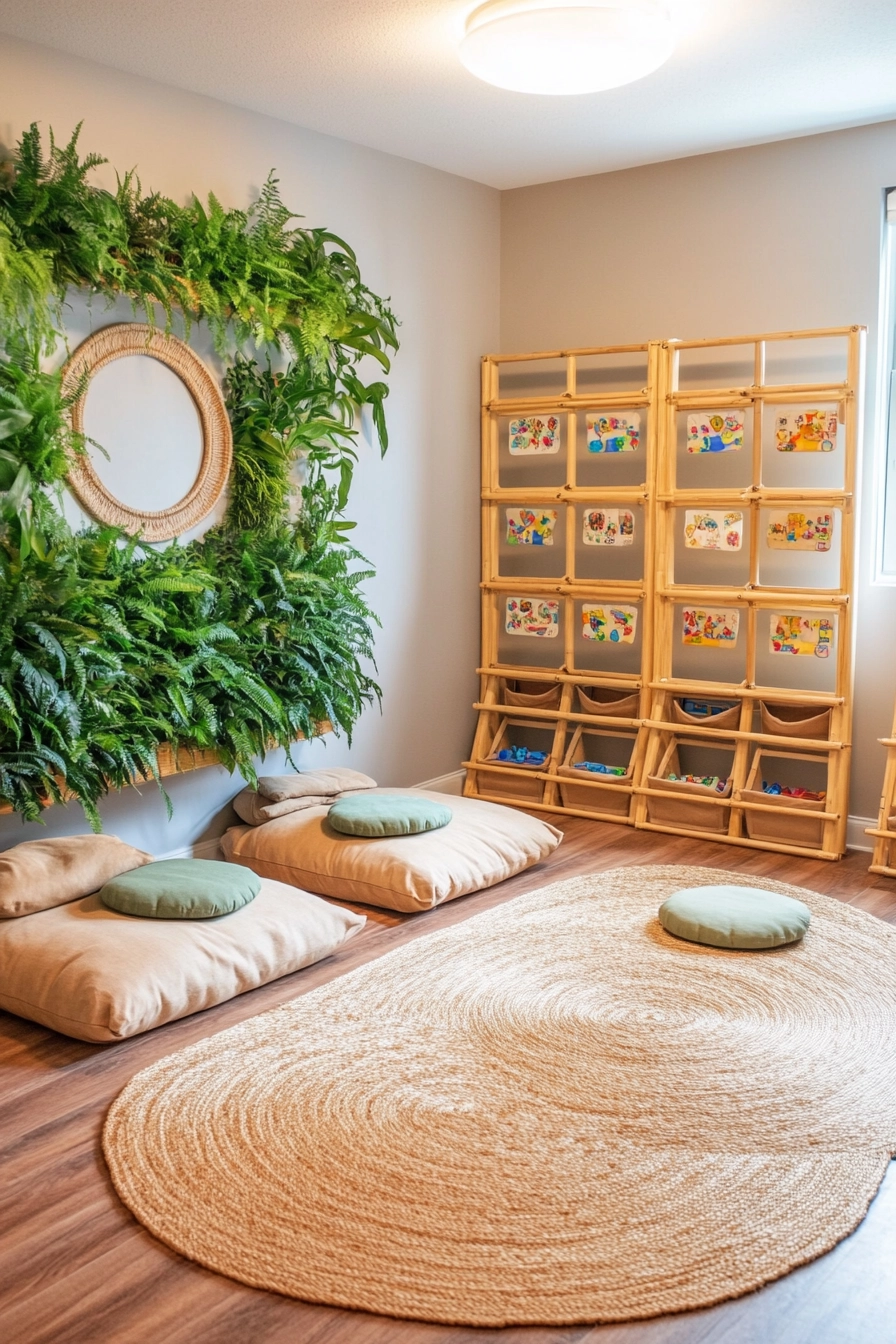
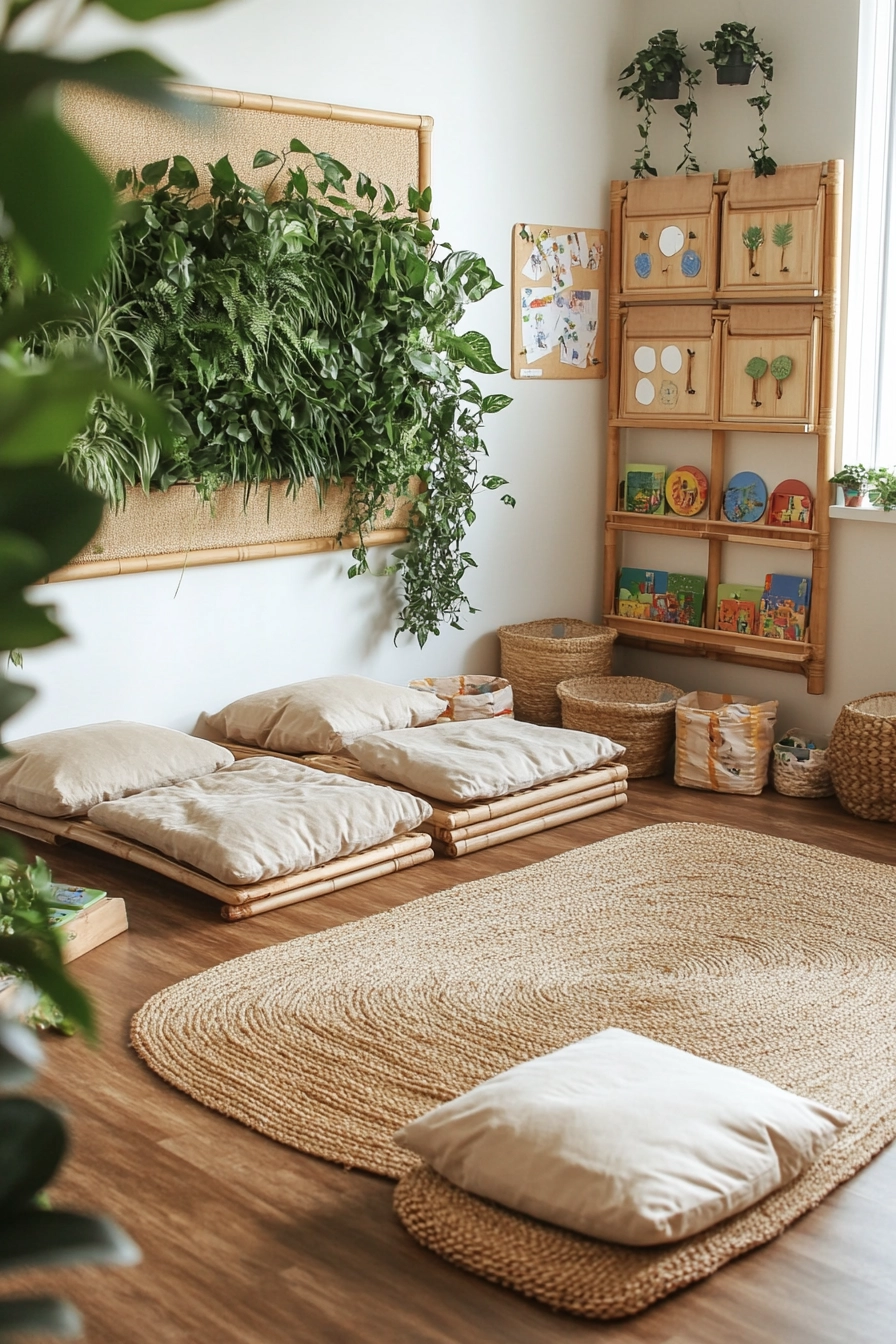
6. Modern Gender-Neutral Room
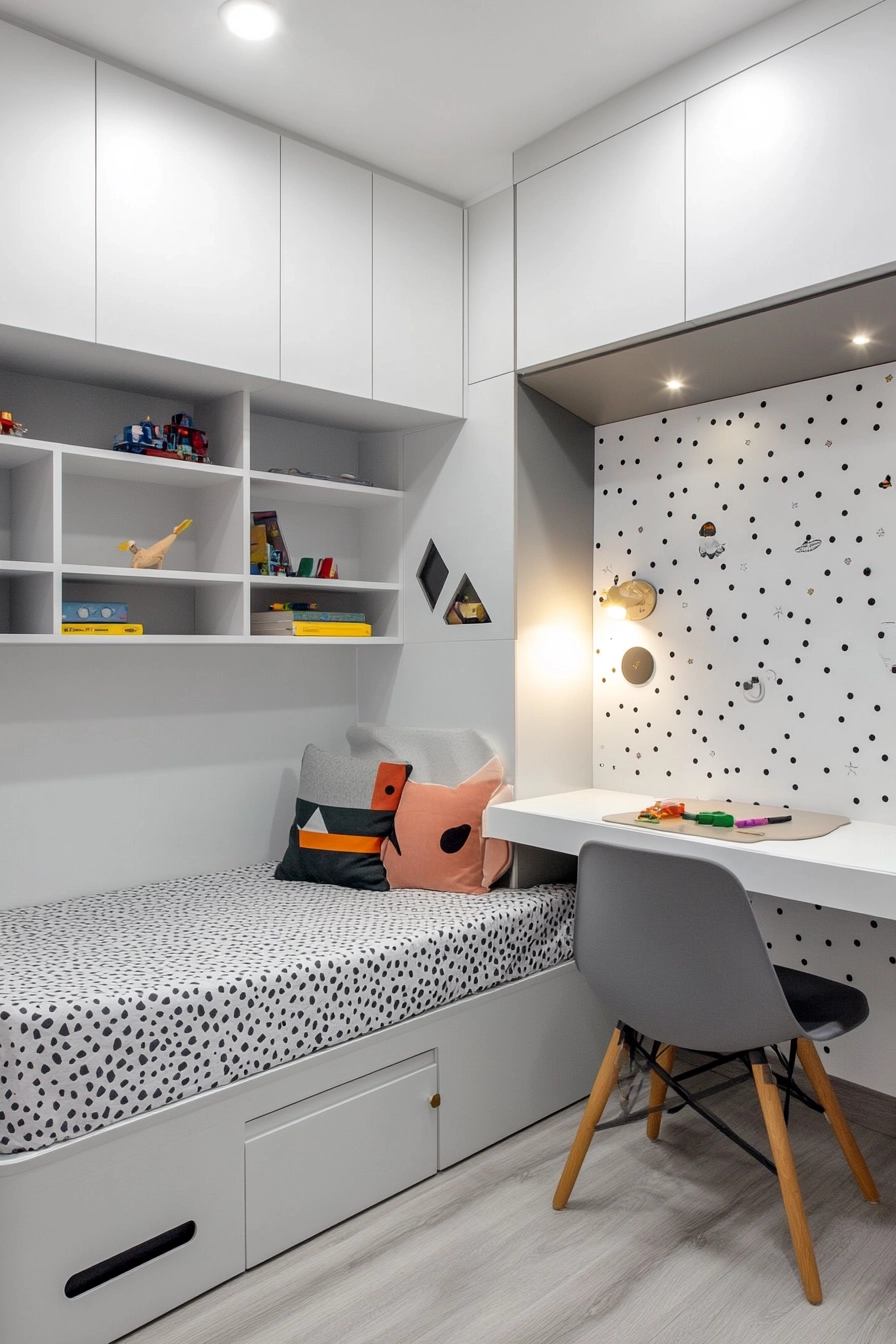
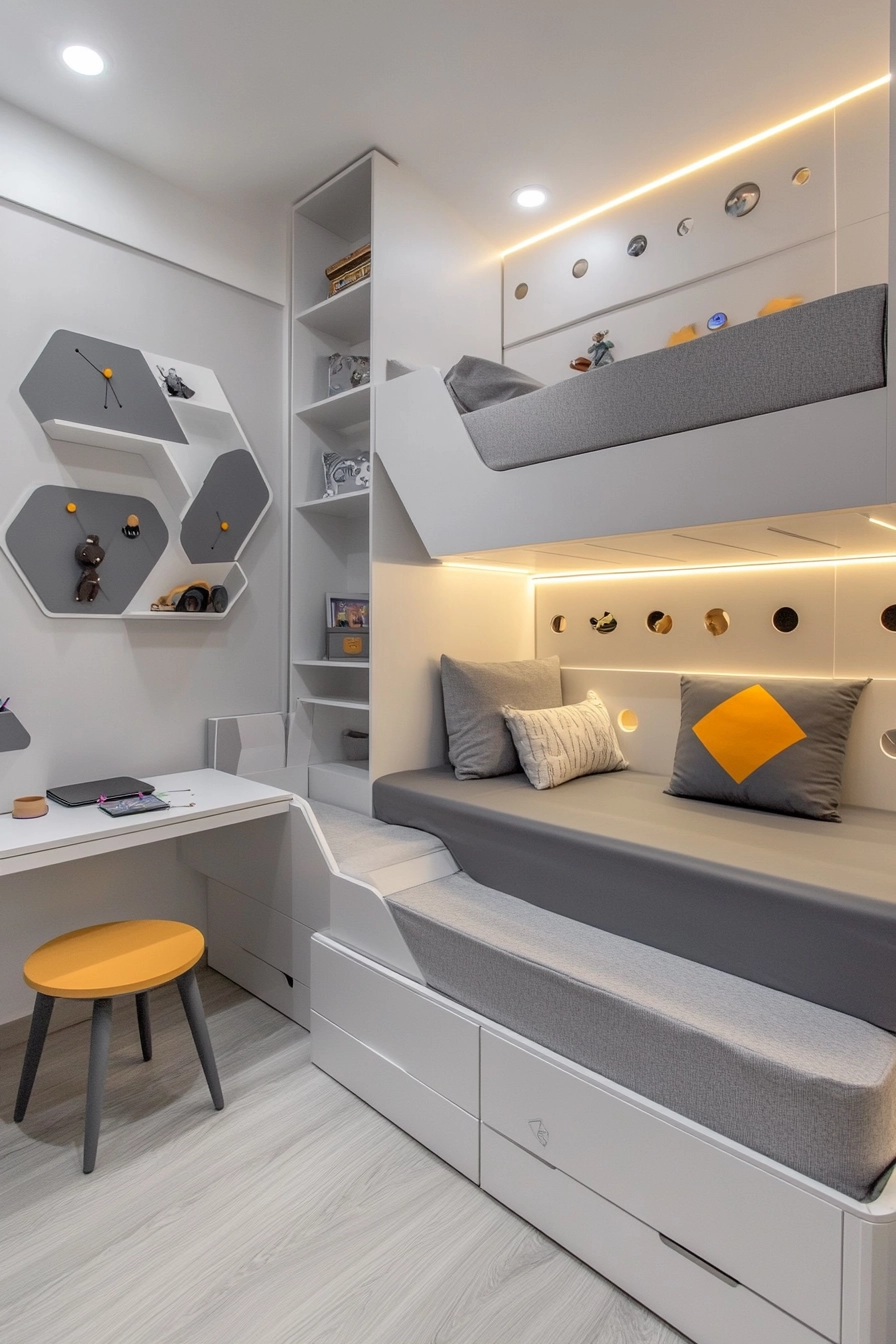
This modern gender-neutral room showcases a sophisticated geometric white and grey color palette, making it versatile for any child. A convertible modular bed allows for adjustments as the child grows, fostering longevity in the design.
A built-in study desk is perfect for homework and creative projects, while floating geometric shelves provide stylish storage for books and toys.
An interactive magnetic wall invites creativity and play, allowing children to engage with their surroundings in a dynamic way. The minimalist storage solutions keep the space tidy, ensuring that everything is easily accessible yet organized.
This design prioritizes functionality without sacrificing style, making it ideal for modern families.
- Use a neutral color palette for versatility.
- Incorporate convertible furniture for long-term use.
- Create a dedicated study area for learning and creativity.
- Incorporate interactive elements to encourage play.
- Opt for minimalist storage to maintain a clutter-free space.
Pro Design Tip: Select furniture pieces that can grow with your child, such as adjustable desks and beds.
Budget Consideration: Look for modular furniture options that can be reconfigured for different uses over time.
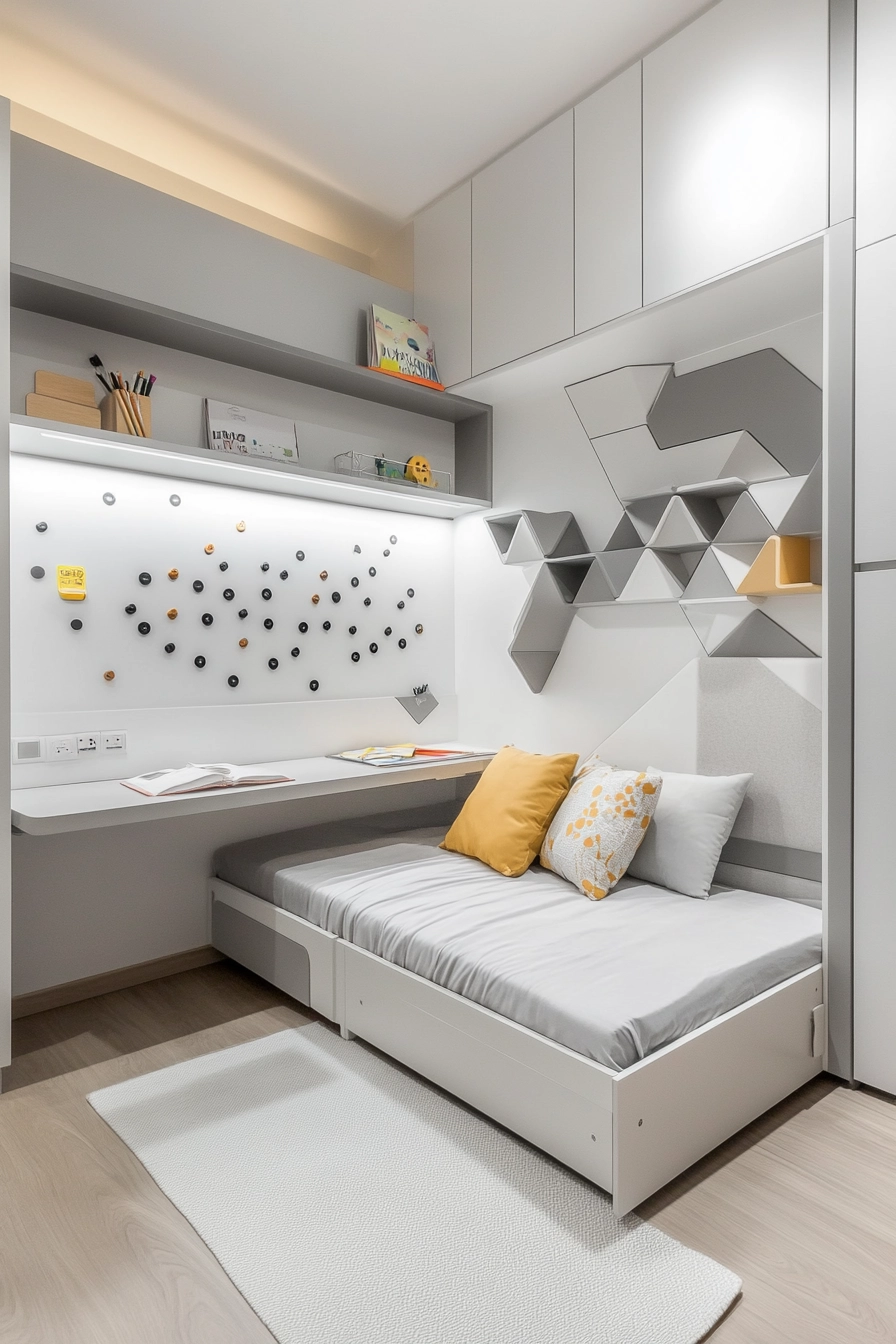
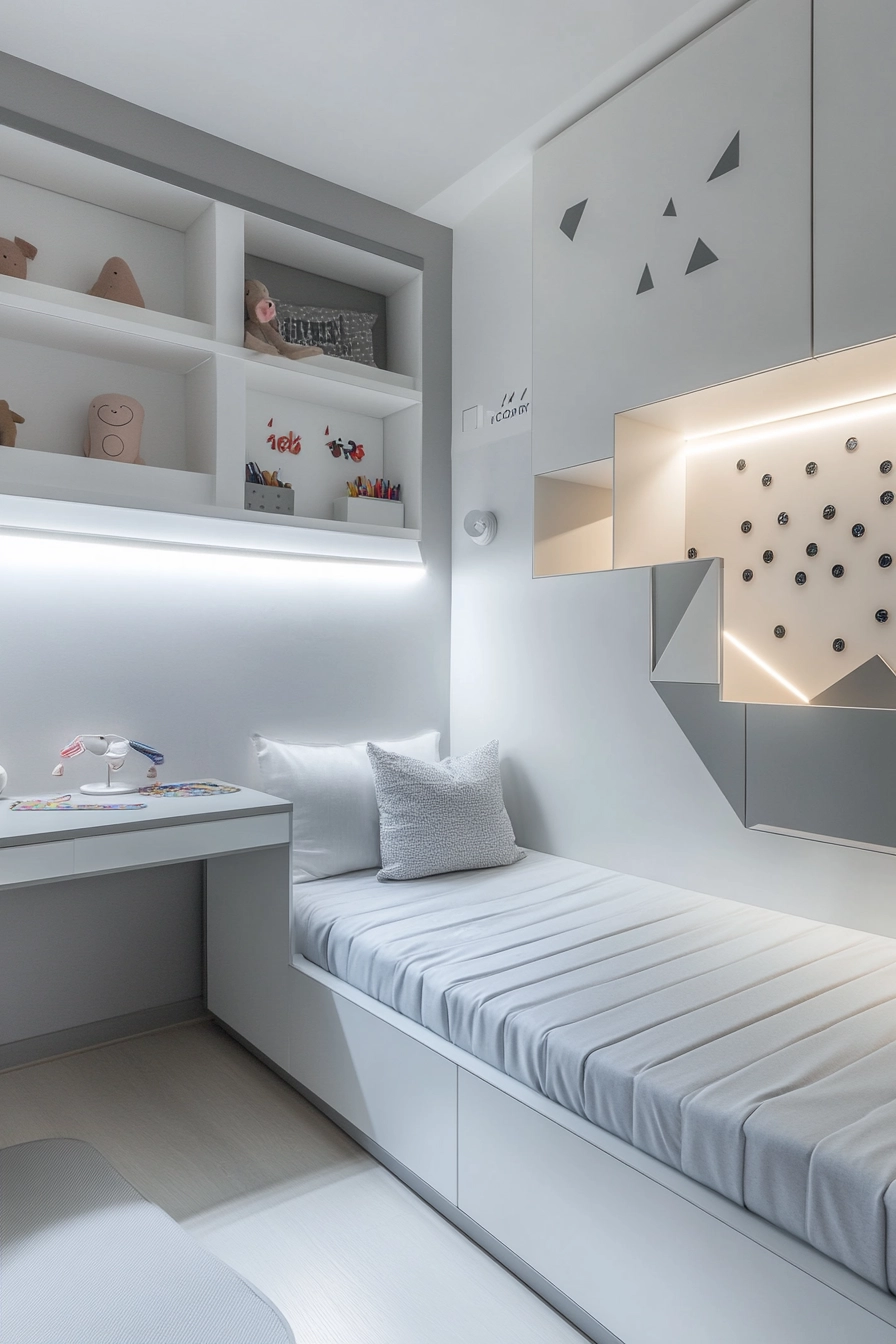
7. Tropical Adventure Room
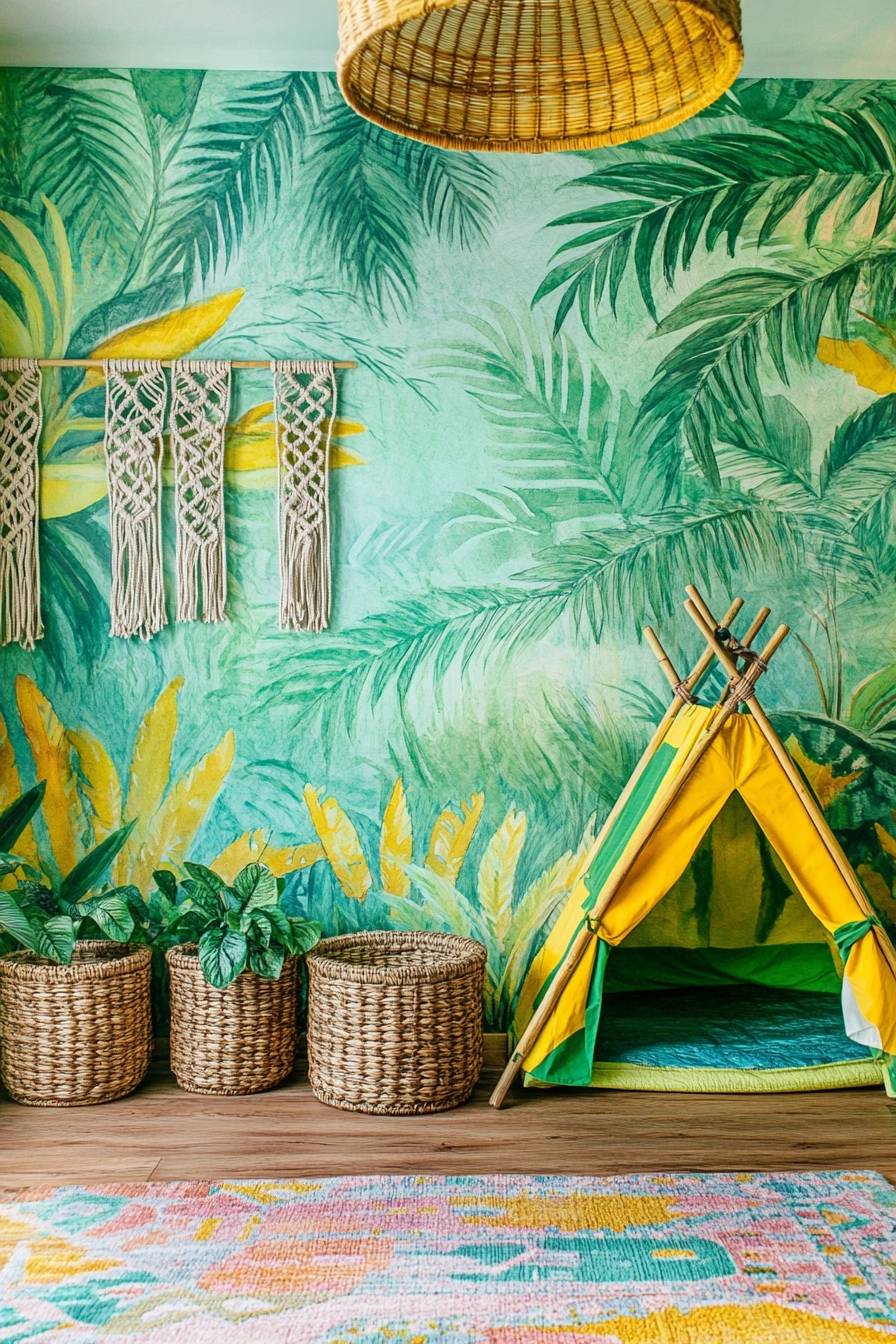
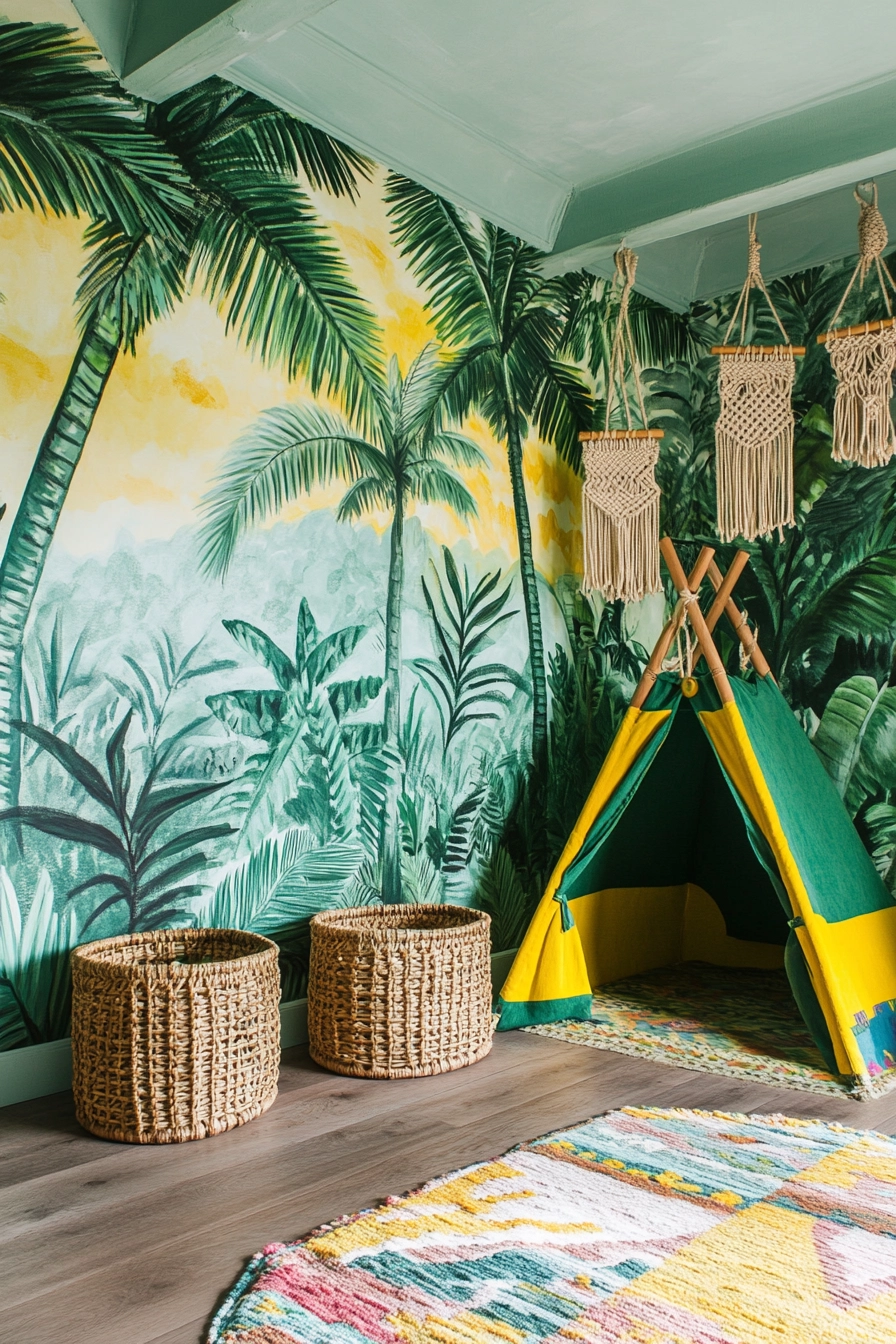
Welcome to a tropical adventure room bursting with vibrant green and yellow accents. A hand-painted jungle mural sets a lively backdrop, while a rattan play tent creates an inviting nook for imaginative play.
The wooden floor is adorned with a colorful area rug, providing a comfortable space for children to explore and play.
Hanging macramé plant holders add a bohemian touch, enhancing the tropical theme while bringing life into the room. Natural light pours in, emphasizing the playful exploration theme and creating a cheerful atmosphere.
This design encourages children to embrace their adventurous spirit and engage with their environment creatively.
- Use vibrant colors to create a lively atmosphere.
- Incorporate playful murals for a sense of adventure.
- Create cozy play areas with tents or cushions.
- Include hanging plants for a natural touch.
- Maximize natural light to enhance the mood.
Pro Design Tip: Add sensory elements like textured fabrics and natural materials to enrich the tactile experience in the room.
Budget Consideration: Use paint and stencils to create a mural instead of hiring an artist to save on costs.
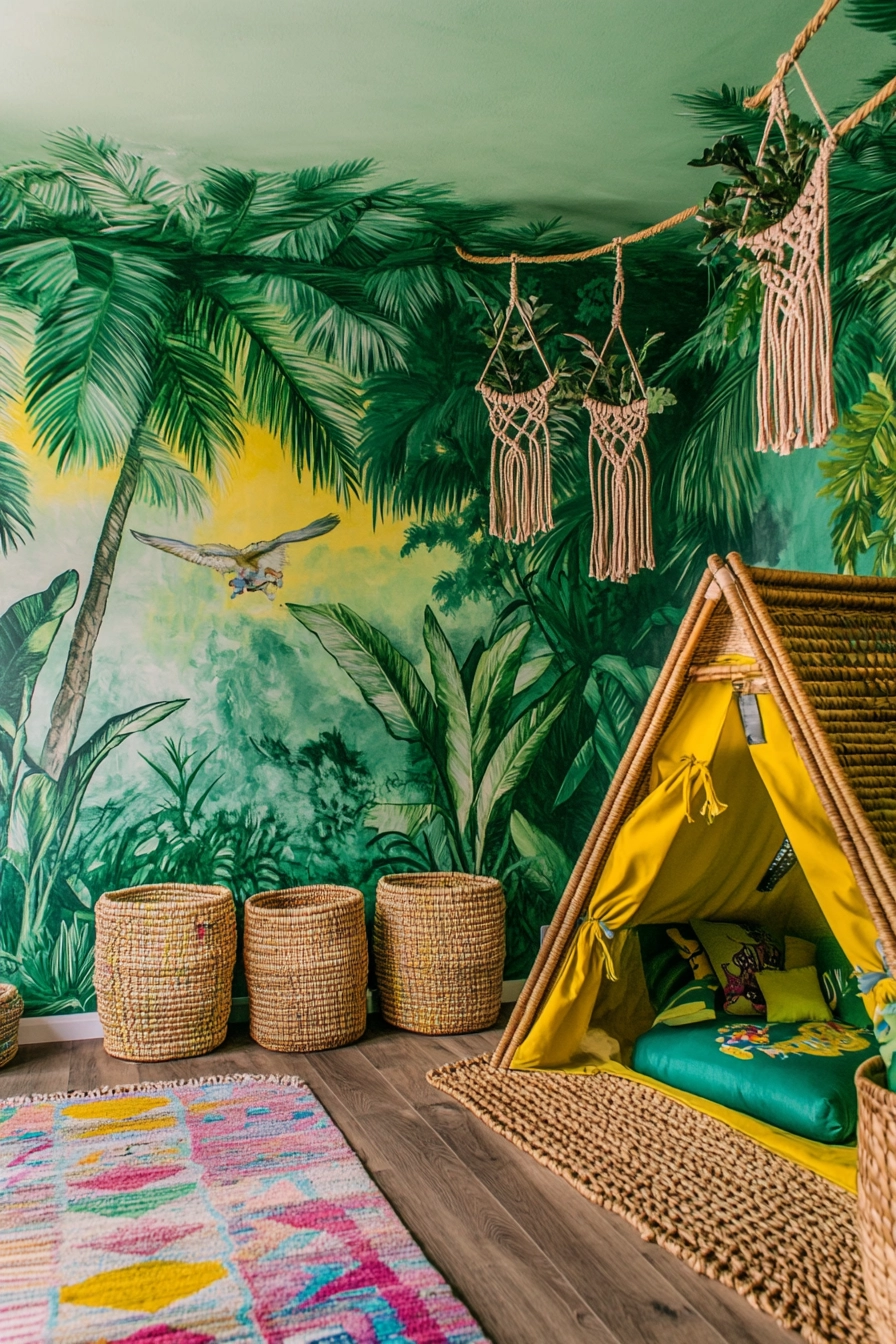
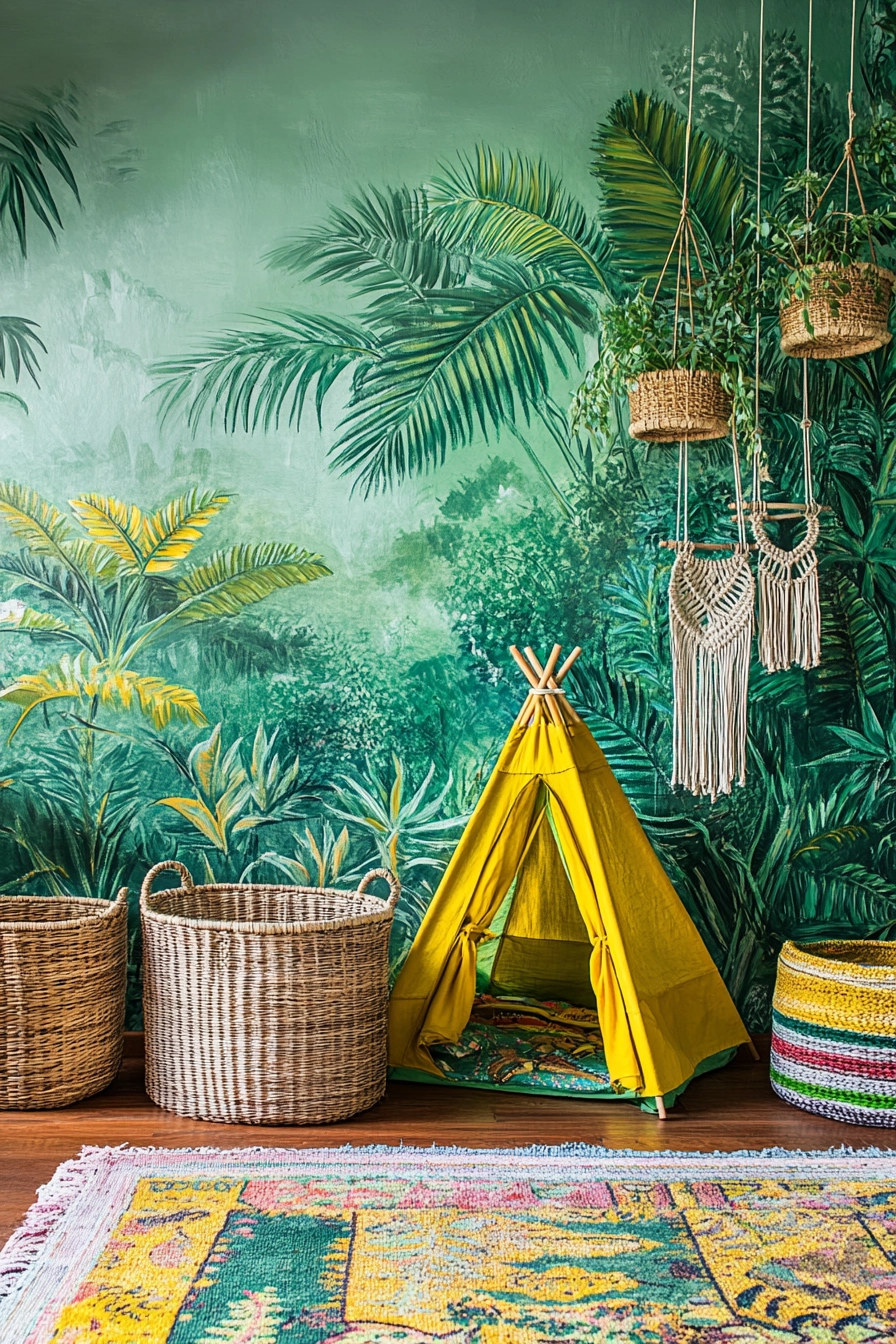
8. Artistic Creative Room

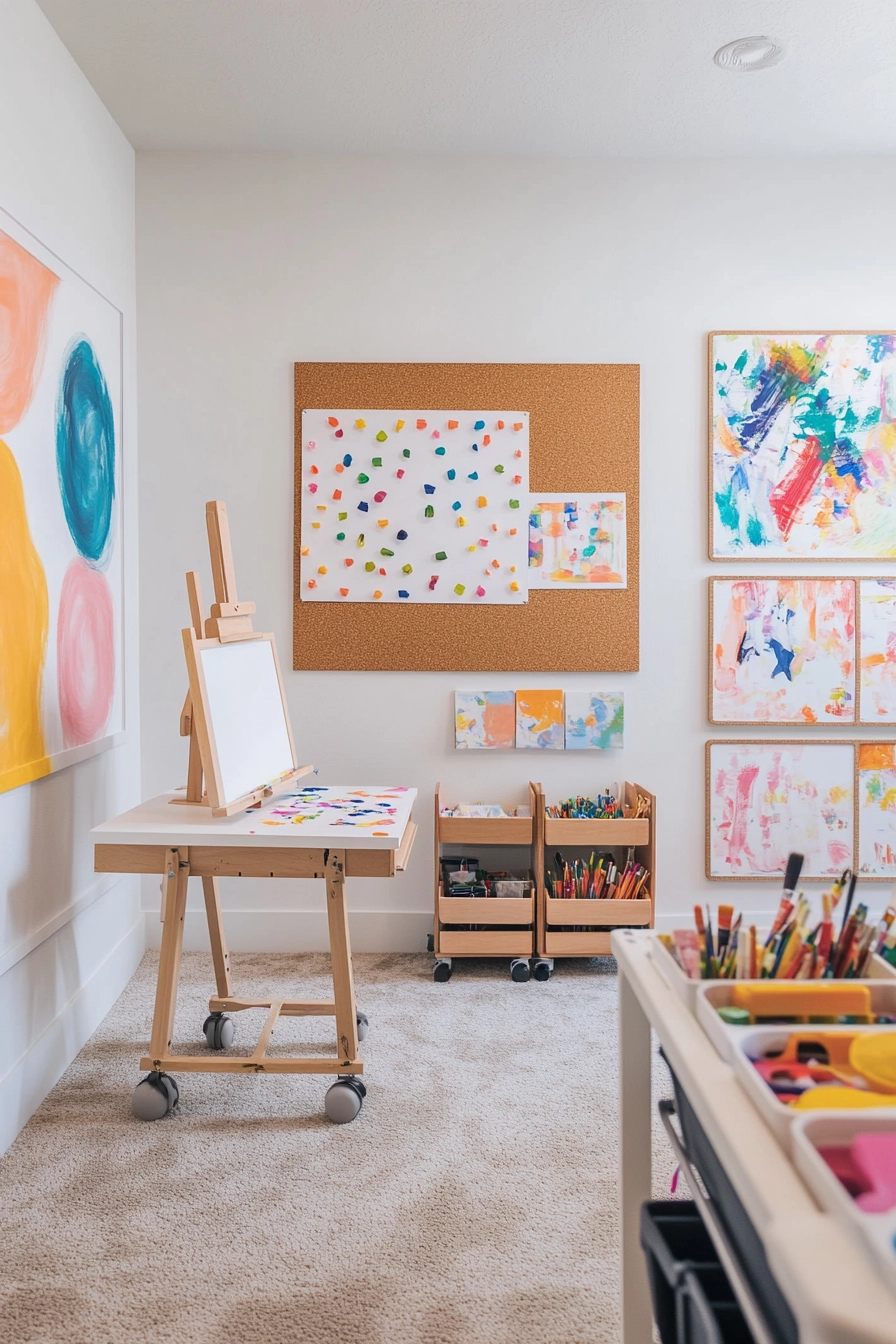
This artistic creative room is a haven for budding artists. With white walls serving as a blank canvas, colorful abstract art installations bring vibrancy and inspiration.
An adjustable art easel encourages creativity, while a modular cork board display wall allows for showcasing masterpieces and ideas.
A low-profile craft table is perfect for hands-on projects, and rolling art supply storage keeps materials organized and easily accessible. Soft natural lighting captures the essence of this imaginative learning space, inviting children to explore their artistic abilities freely.
- Provide a blank canvas to inspire creativity.
- Incorporate colorful art installations for vibrancy.
- Designate a craft area for hands-on activities.
- Use modular boards for showcasing artwork.
- Maximize natural light to enhance the creative atmosphere.
Pro Design Tip: Rotate art displays regularly to keep the space fresh and engaging for your child.
Budget Consideration: Utilize inexpensive materials such as cardboard and recycled items for craft projects to minimize costs.


9. Nautical Adventure Room
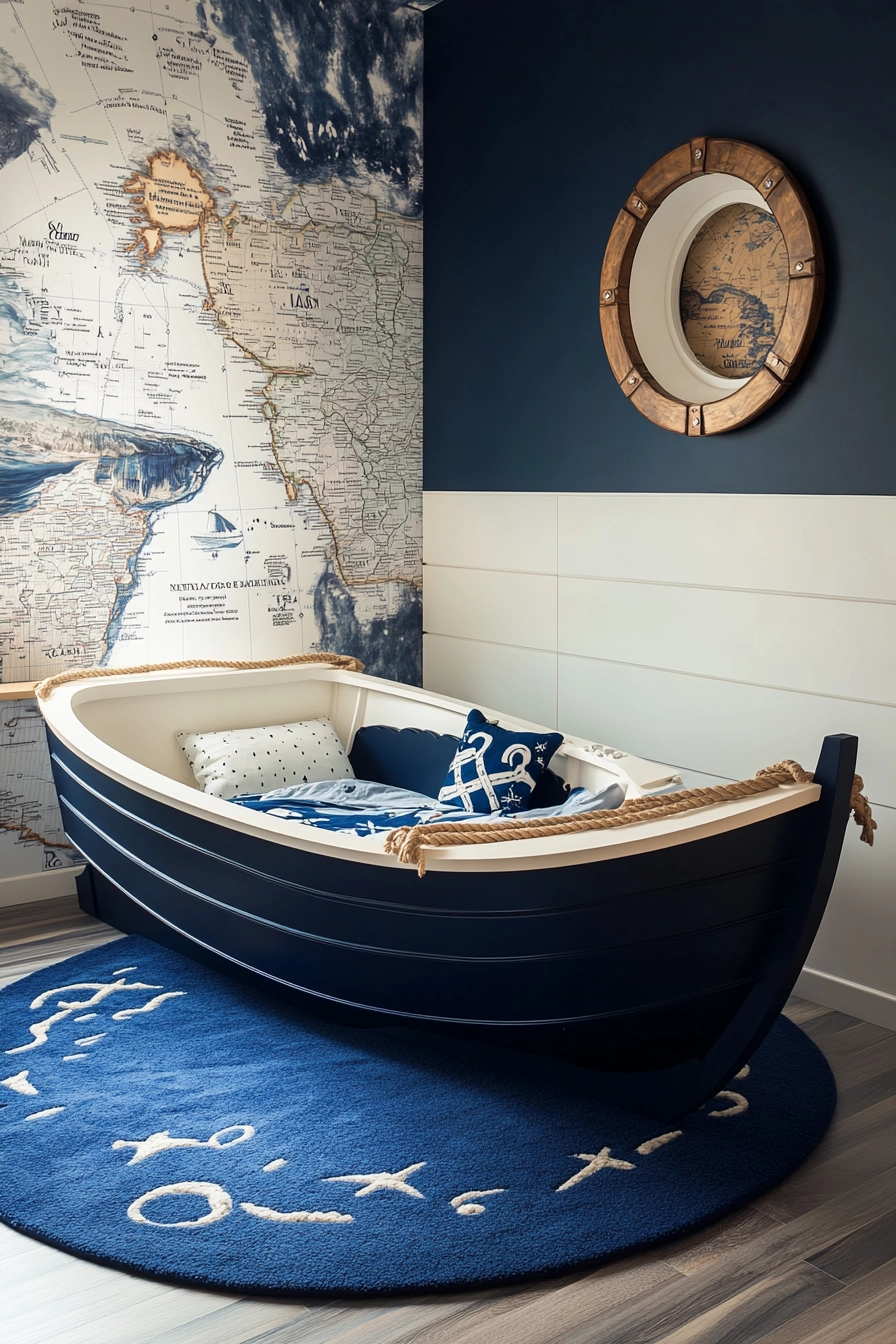

Set sail in this nautical adventure room, where a navy blue and white color scheme evokes the essence of the sea. The boat-shaped bed frame is the centerpiece, capturing the imagination of any young sailor.
Rope accent details and maritime wall maps add character, enhancing the overall theme.
Porthole-style window treatments and a wooden floor with a blue area rug complete the look, creating a cohesive nautical experience. This design invites children to dream of oceanic adventures while providing a cozy and playful environment for rest and play.
- Incorporate nautical colors for a cohesive theme.
- Use themed furniture to enhance the adventure feel.
- Add maritime decor for visual interest.
- Maximize natural light with playful window treatments.
- Create a cozy area with rugs for comfort.
Pro Design Tip: Use themed bedding and decor that can be easily updated as your child grows.
Budget Consideration: Thrift stores often have nautical-themed decor that can be repurposed for a unique look.
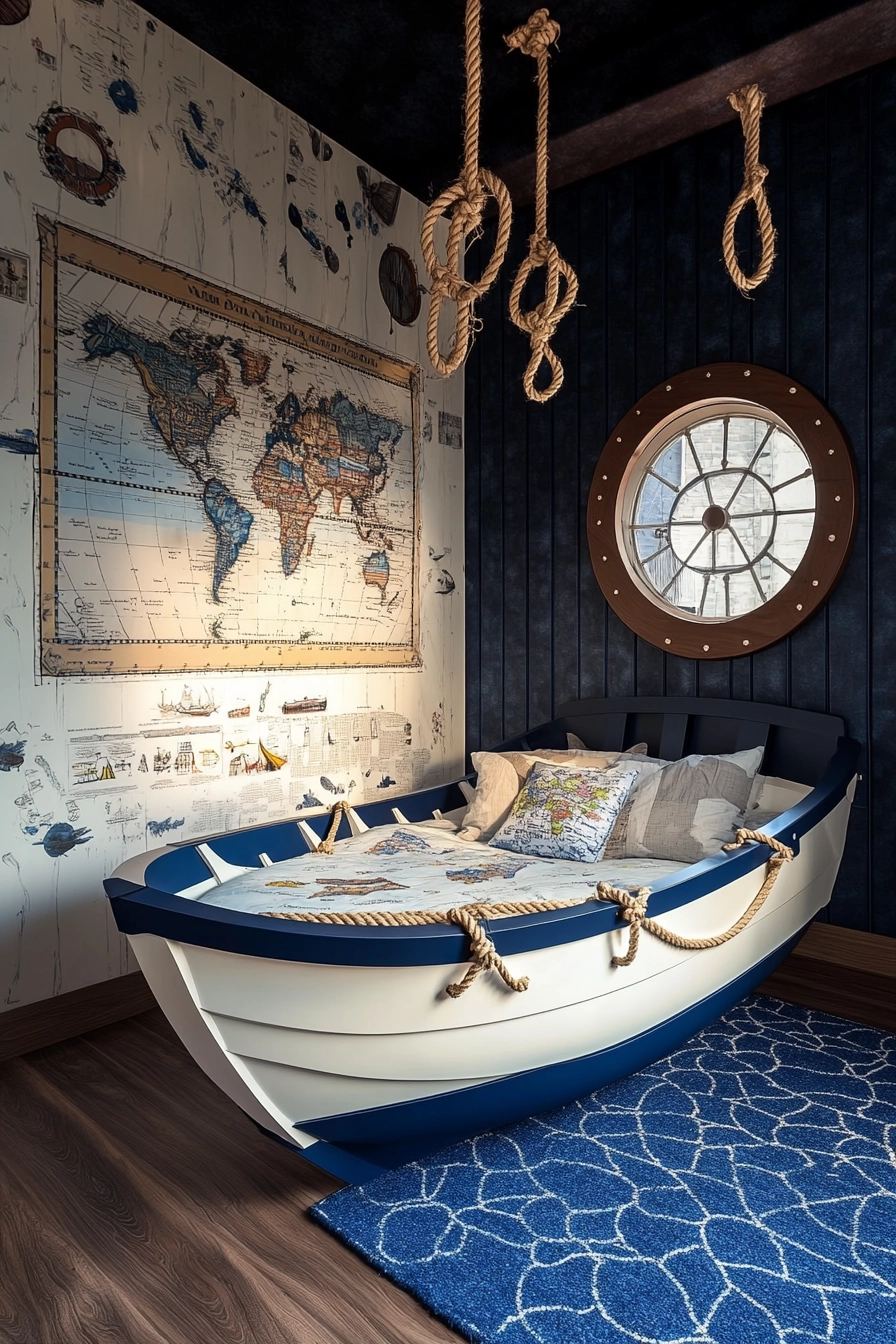
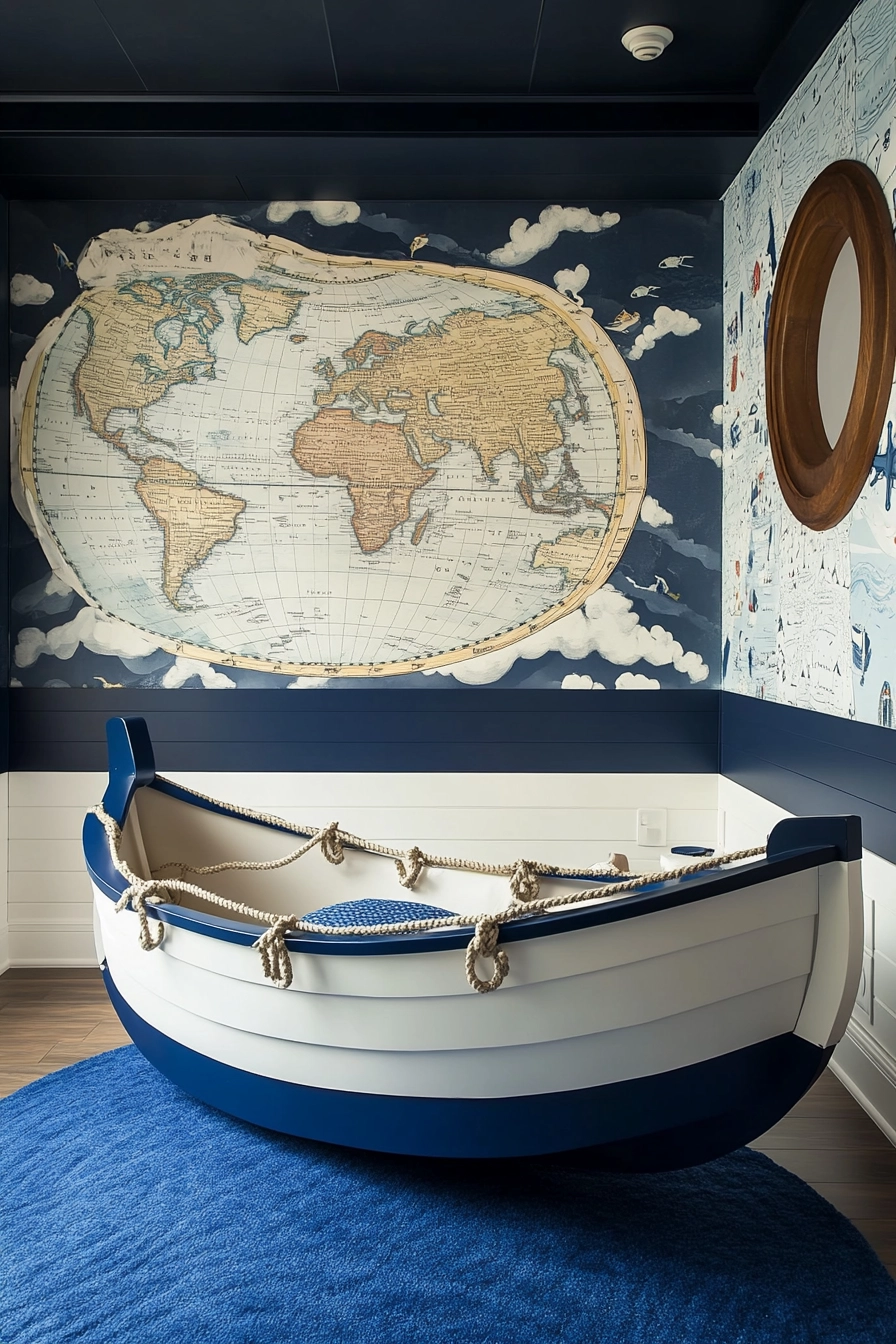
10. Sensory-Friendly Room
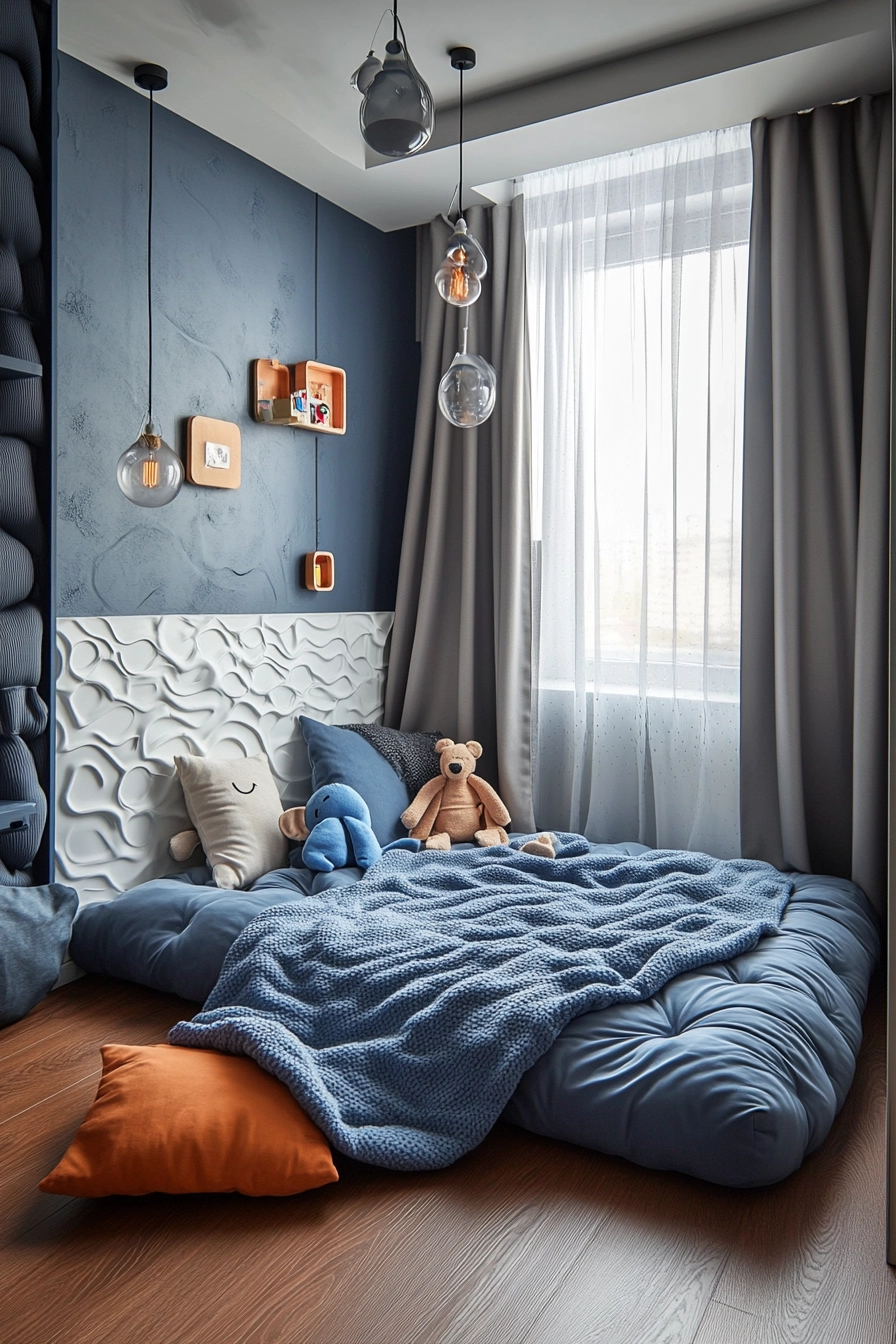

This sensory-friendly room is designed to create a calming and inclusive environment. Soft textured walls in calming blue and grey tones help to reduce sensory overload, while a weighted blanket provides comfort and security for children.
Noise-reducing curtains ensure a peaceful atmosphere, while adjustable lighting allows for customization based on mood and activity.
Rounded furniture edges enhance safety, making the space suitable for children of all ages. Adaptive storage solutions provide ample organization, allowing for a tidy and stress-free environment.
This design prioritizes comfort and accessibility, making it an ideal retreat for all children.
- Choose soft colors to promote relaxation.
- Incorporate weighted items for comfort.
- Use noise-reducing elements to minimize distractions.
- Design with safety in mind using rounded edges.
- Utilize adaptive storage for easy organization.
Pro Design Tip: Create designated sensory zones with different textures and materials for exploration and comfort.
Budget Consideration: Use affordable textiles and materials that provide sensory experiences without high costs.
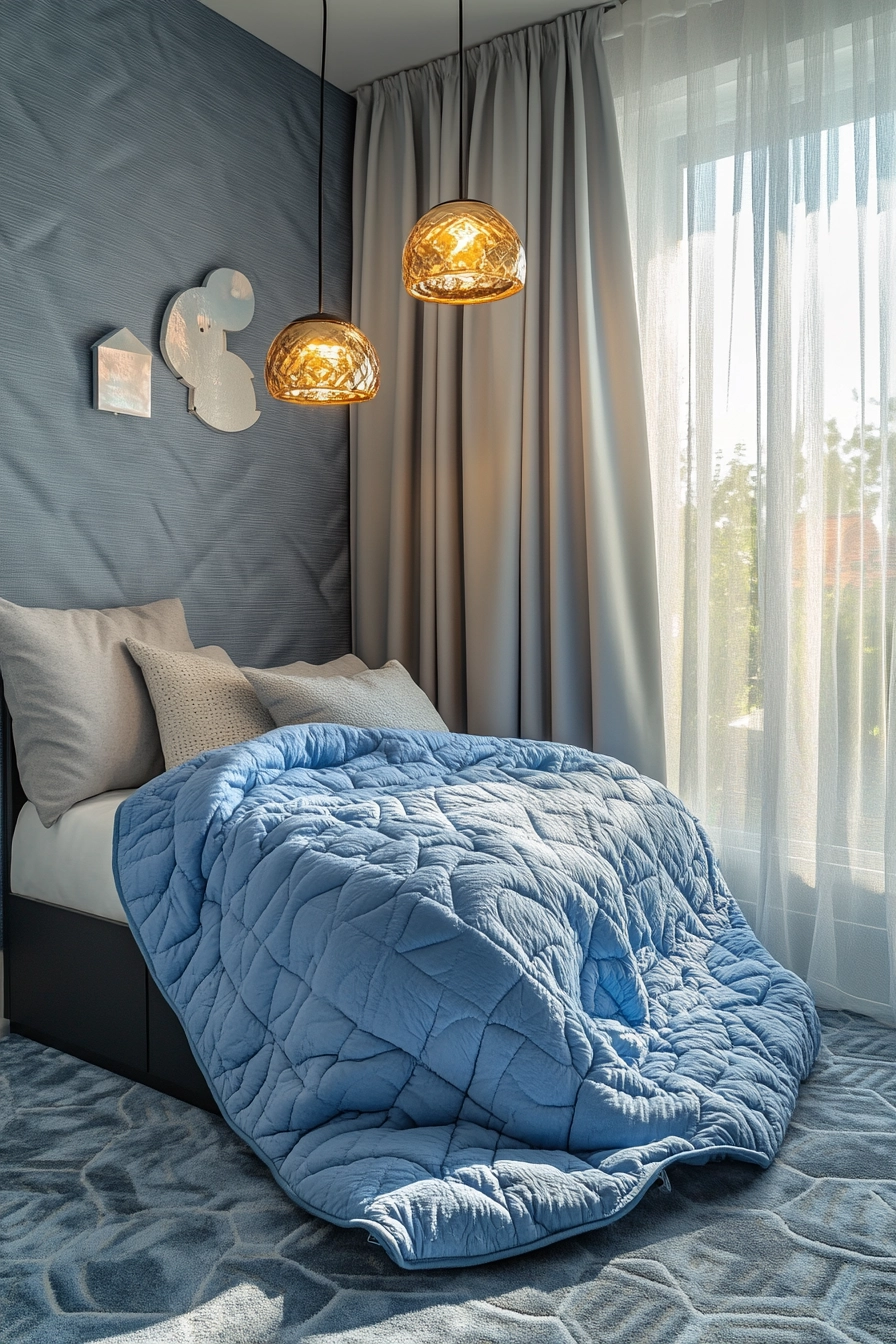
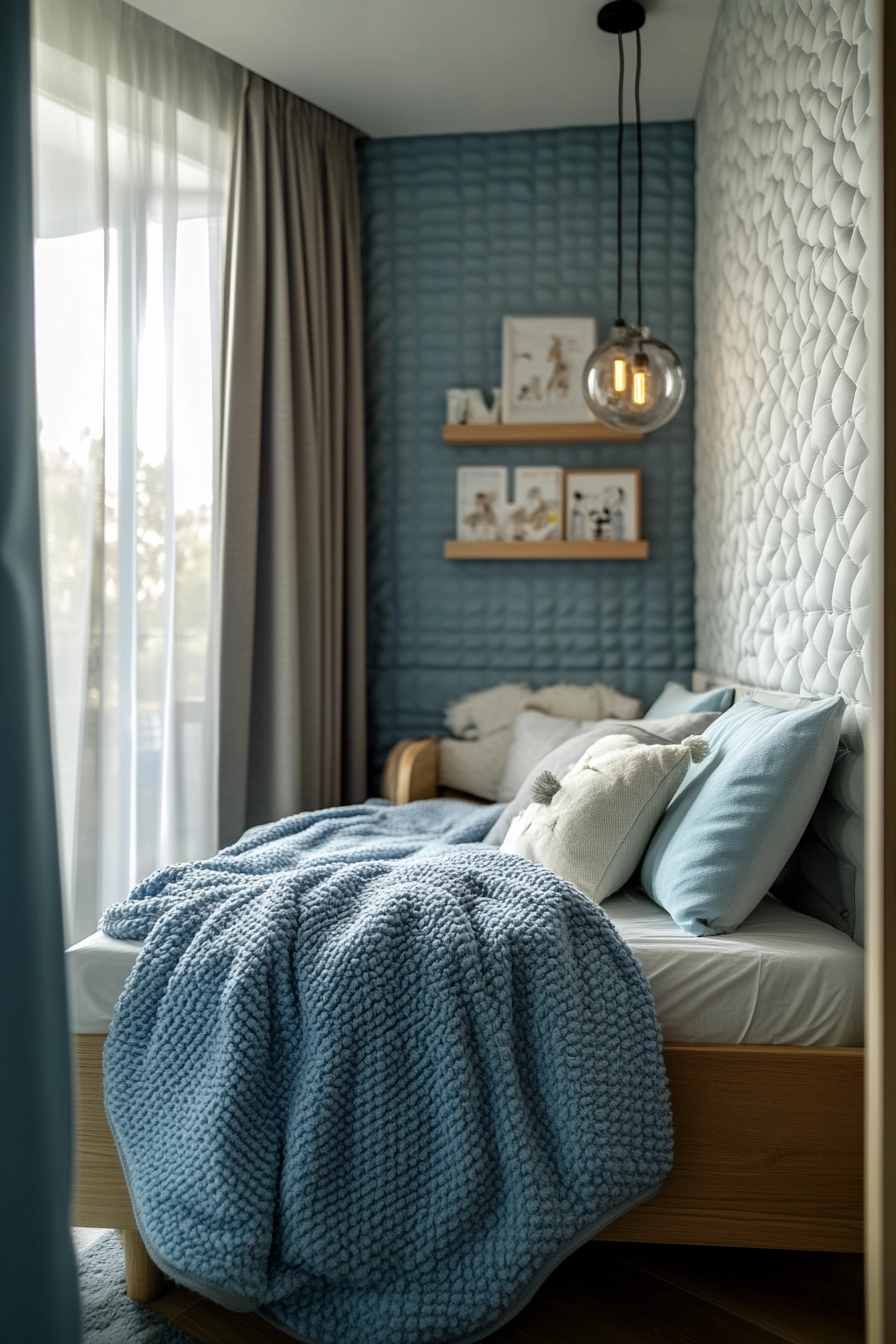
11. Musical Inspiration Room
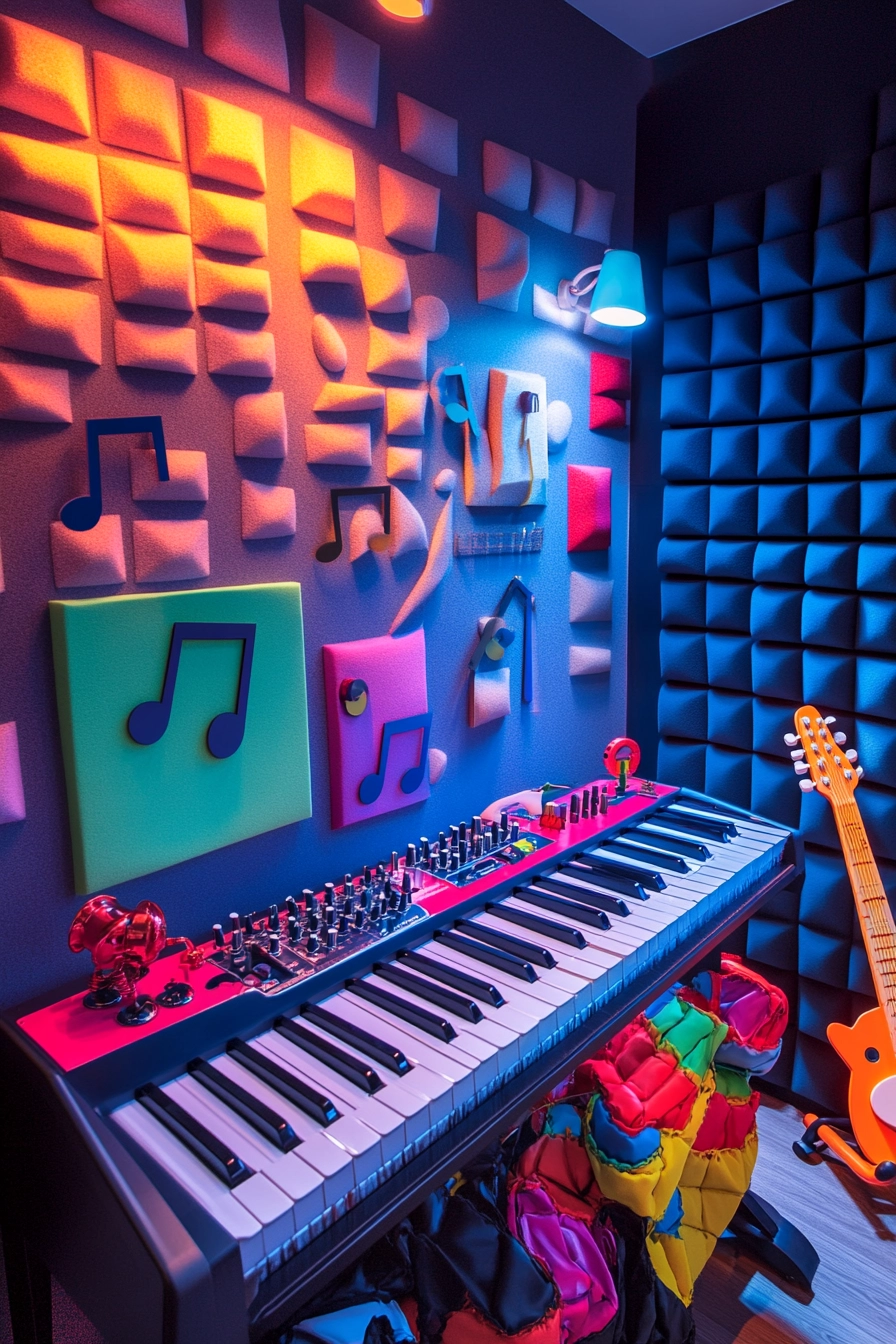
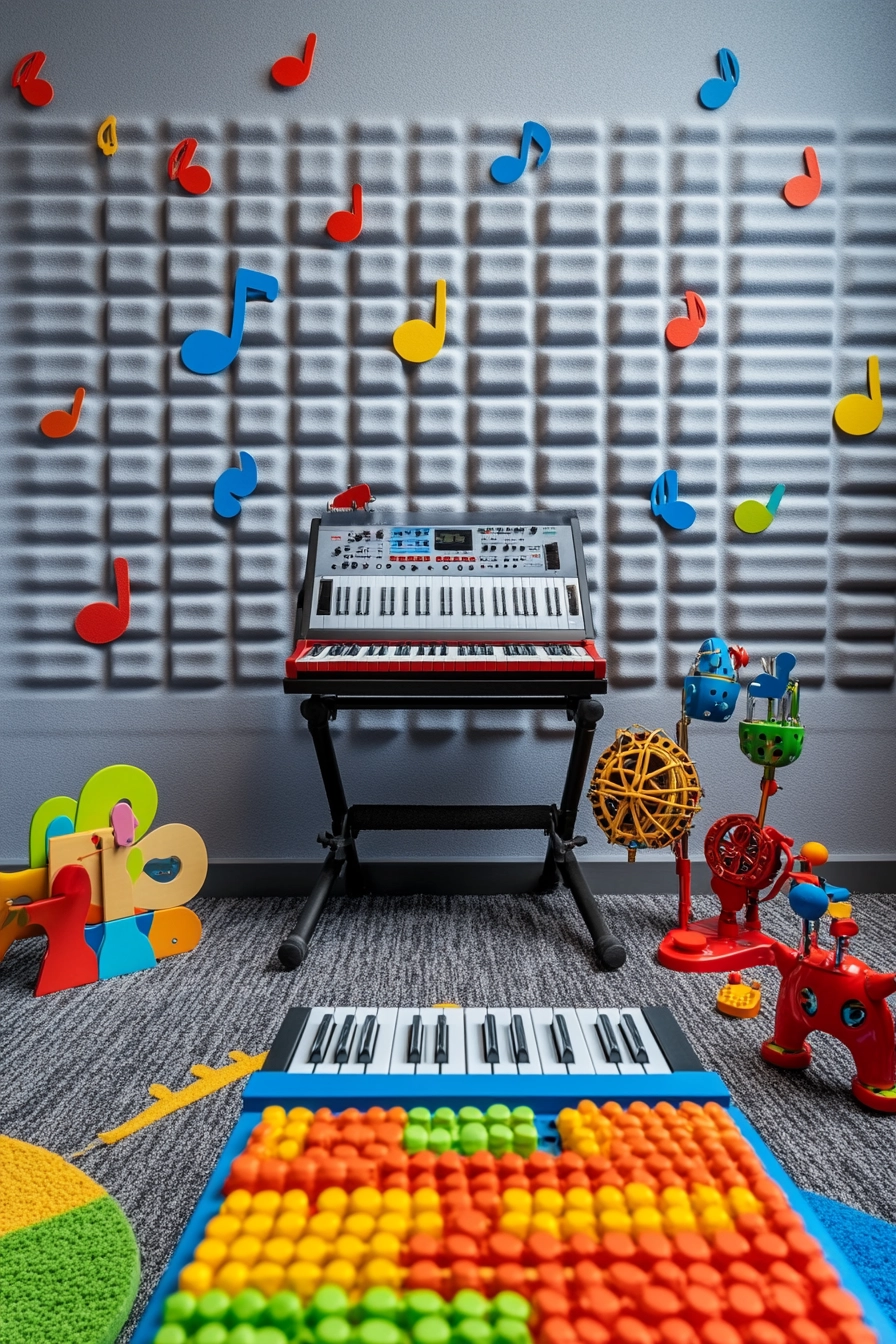
For the little musician, this musical inspiration room is a perfect fit. Soundproofed walls create a dedicated space for practice and creativity, while a mini instrument display showcases their musical journey.
Musical note wall decals add a fun touch, transforming the room into a vibrant soundscape.
Acoustic foam panels enhance sound quality, making it an ideal environment for rehearsing. An adjustable keyboard stand accommodates growing musicians, while colorful rhythm-based learning toys encourage interactive play.
This design fosters a love for music while providing a stimulating environment for creativity.
- Incorporate soundproofing for a focused environment.
- Showcase instruments as decor to inspire creativity.
- Add playful musical accents for fun.
- Use adjustable stands for accommodating growth.
- Include interactive toys to support musical learning.
Pro Design Tip: Create a performance space within the room for mini-concerts and family jam sessions.
Budget Consideration: Look for second-hand instruments or DIY options to save on music-related costs.

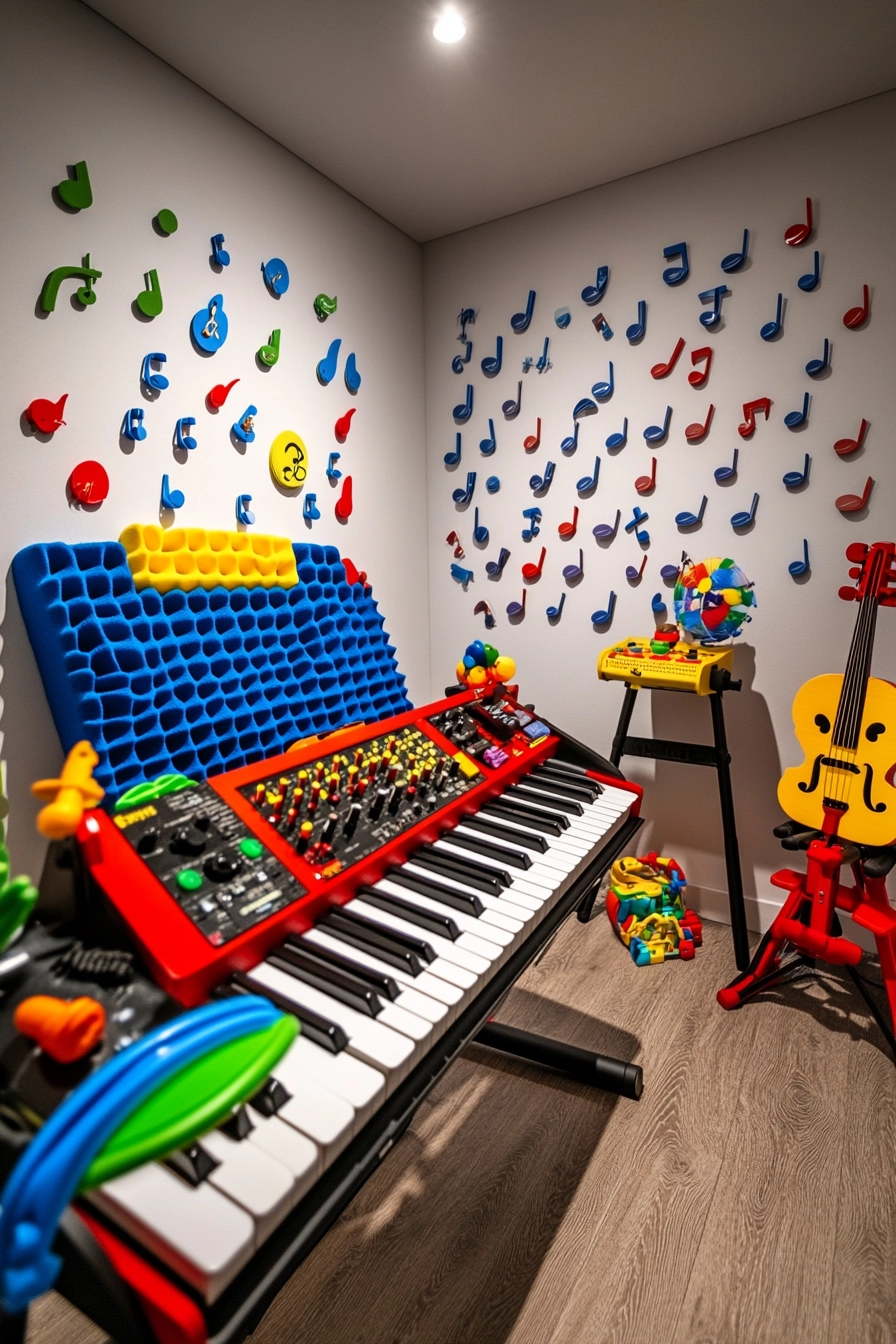
12. Multicultural Learning Room
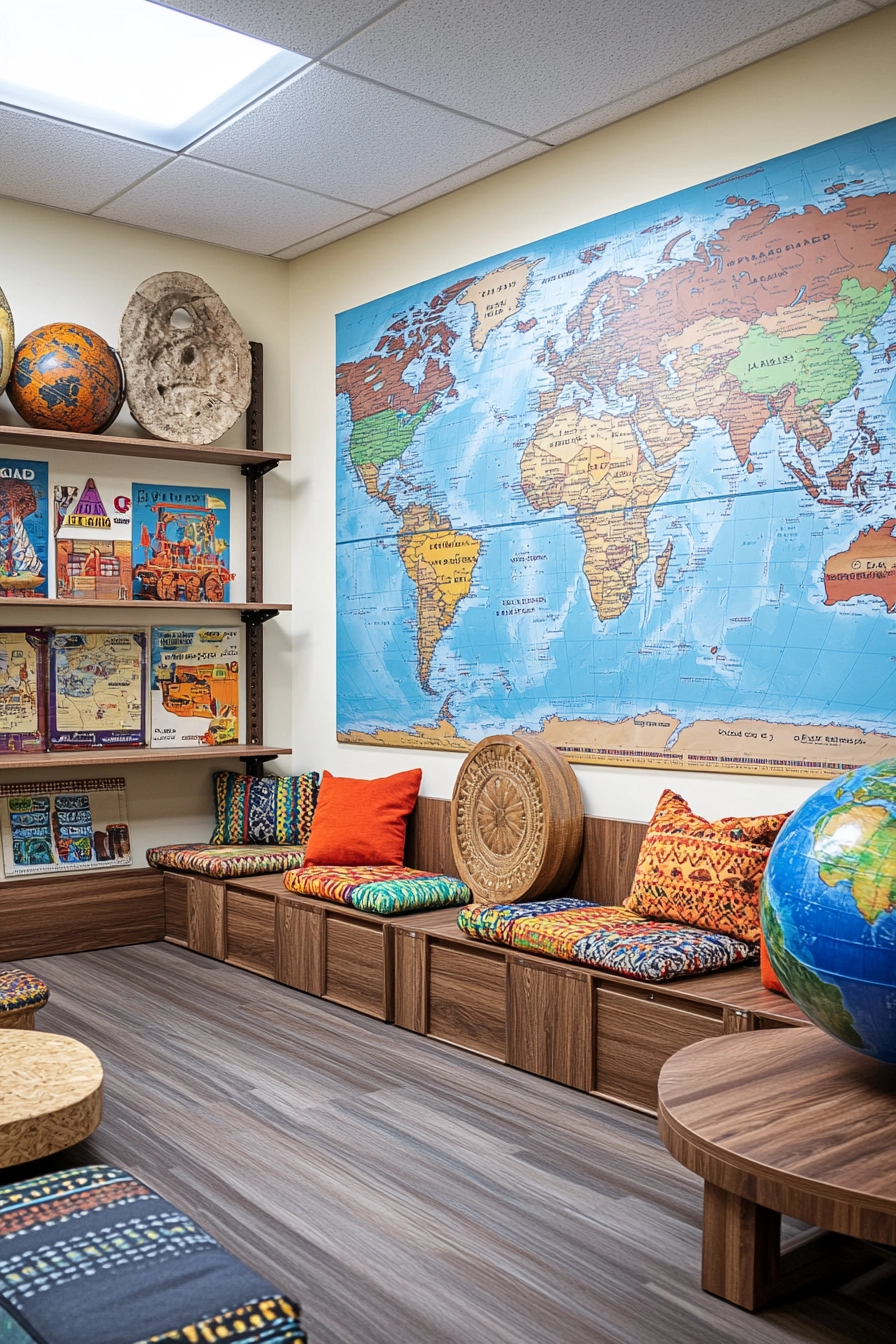
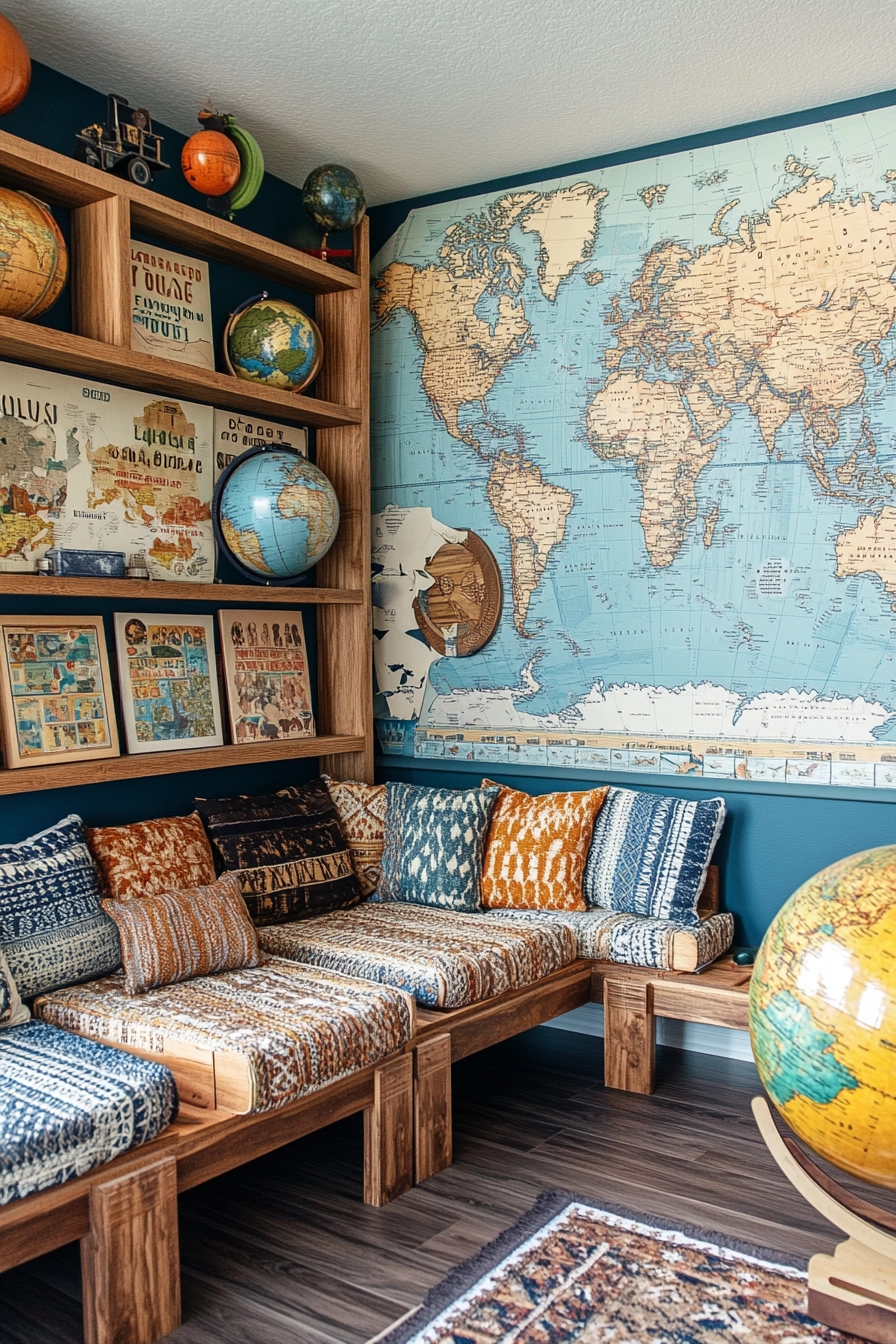
This multicultural learning room celebrates diversity and global awareness. A world map wall mural sets the stage for exploration, while language learning posters spark interest in different cultures.
Global artifact display shelves showcase treasures from around the world, promoting curiosity and conversation.
Modular seating with global textile cushions provides comfort and invites children to gather for stories and activities. An interactive globe enhances learning opportunities, allowing for hands-on exploration of geography and cultures.
This design nurtures a sense of belonging and appreciation for the world around us.
- Use world maps and educational posters for visual learning.
- Incorporate artifacts to promote cultural awareness.
- Design comfortable seating areas for group activities.
- Add interactive tools like globes for hands-on learning.
- Celebrate diversity through decor and activities.
Pro Design Tip: Rotate the displayed artifacts periodically to keep the experience fresh and engaging.
Budget Consideration: Consider DIY projects for creating educational wall decor and using local resources for artifacts.
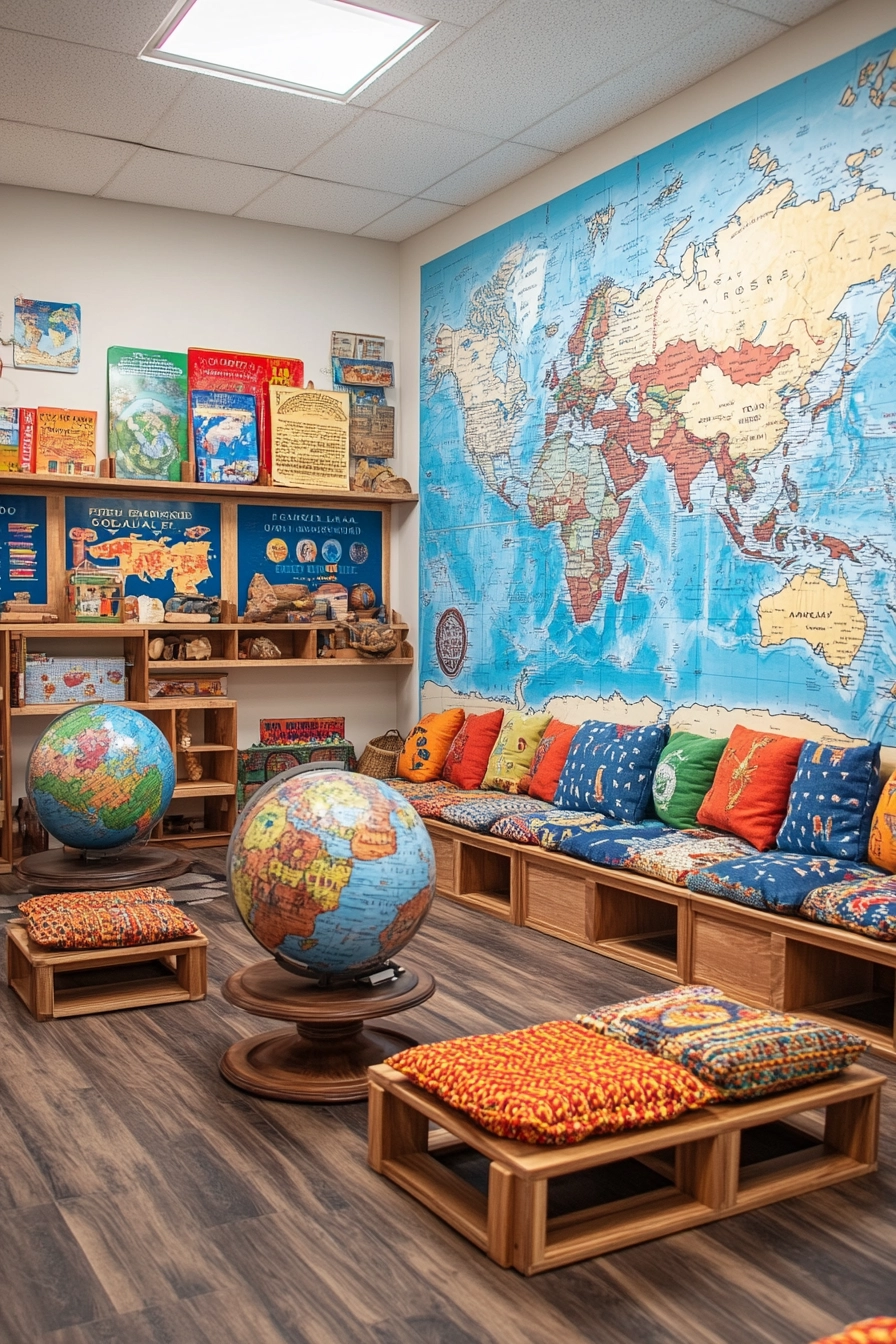
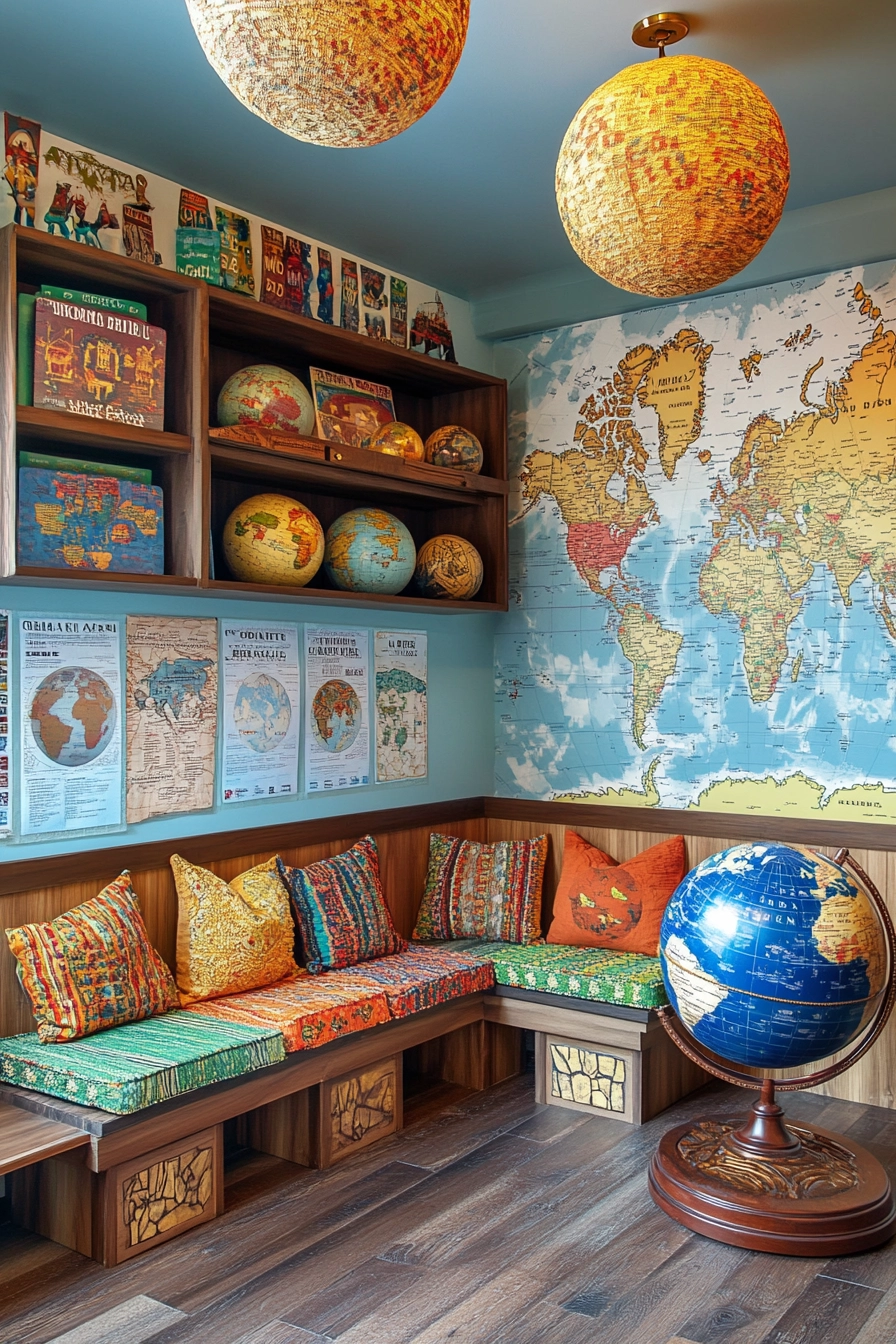
13. STEM-Focused Room
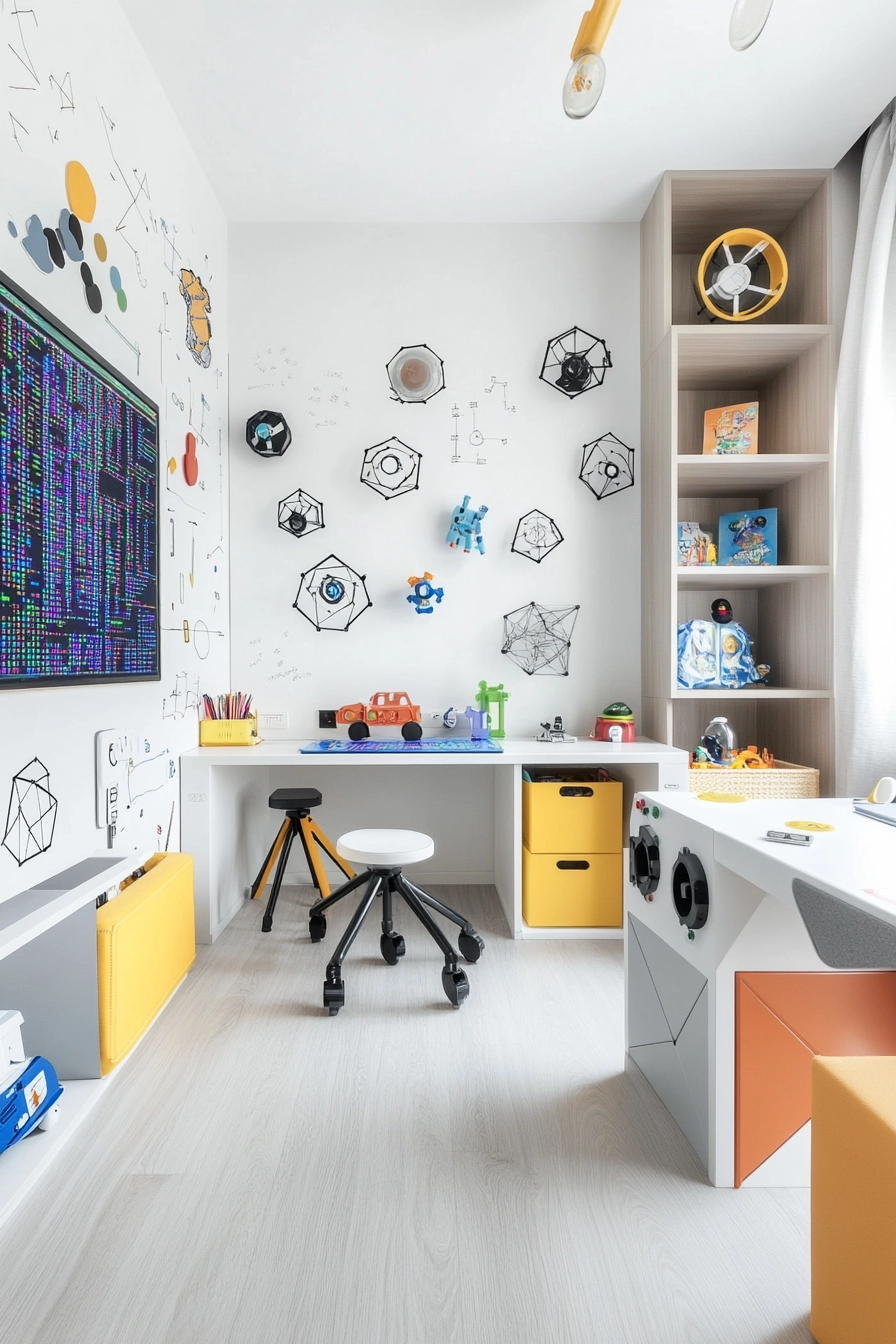
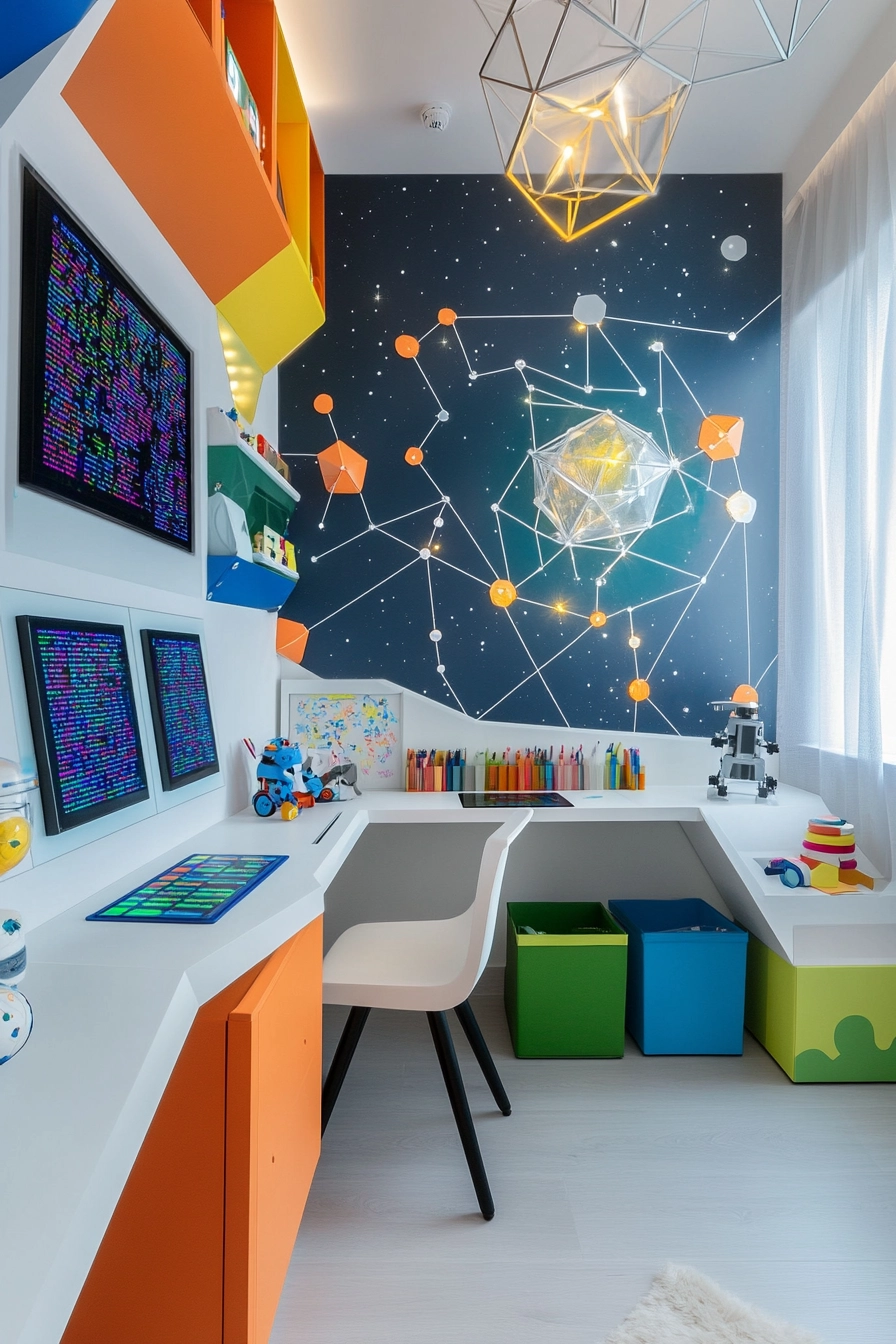
This STEM-focused room is designed to inspire the next generation of scientists and innovators. An interactive science wall engages children with experiments and activities, while a robotic learning station encourages technological exploration.
A modular coding desk provides a dedicated area for hands-on projects and learning.
The white and primary color palette creates a bright and stimulating environment, while geometric storage cubes offer functional solutions for organizing materials. This design integrates educational technology seamlessly, making learning fun and interactive.
- Incorporate interactive elements for hands-on learning.
- Use bright colors to create an engaging atmosphere.
- Design dedicated areas for different STEM activities.
- Utilize geometric storage for organization.
- Integrate technology in a fun way to enhance learning.
Pro Design Tip: Use chalkboard or whiteboard paint on one wall for endless creativity and learning opportunities.
Budget Consideration: Utilize inexpensive educational resources and DIY projects to create STEM activities without high costs.
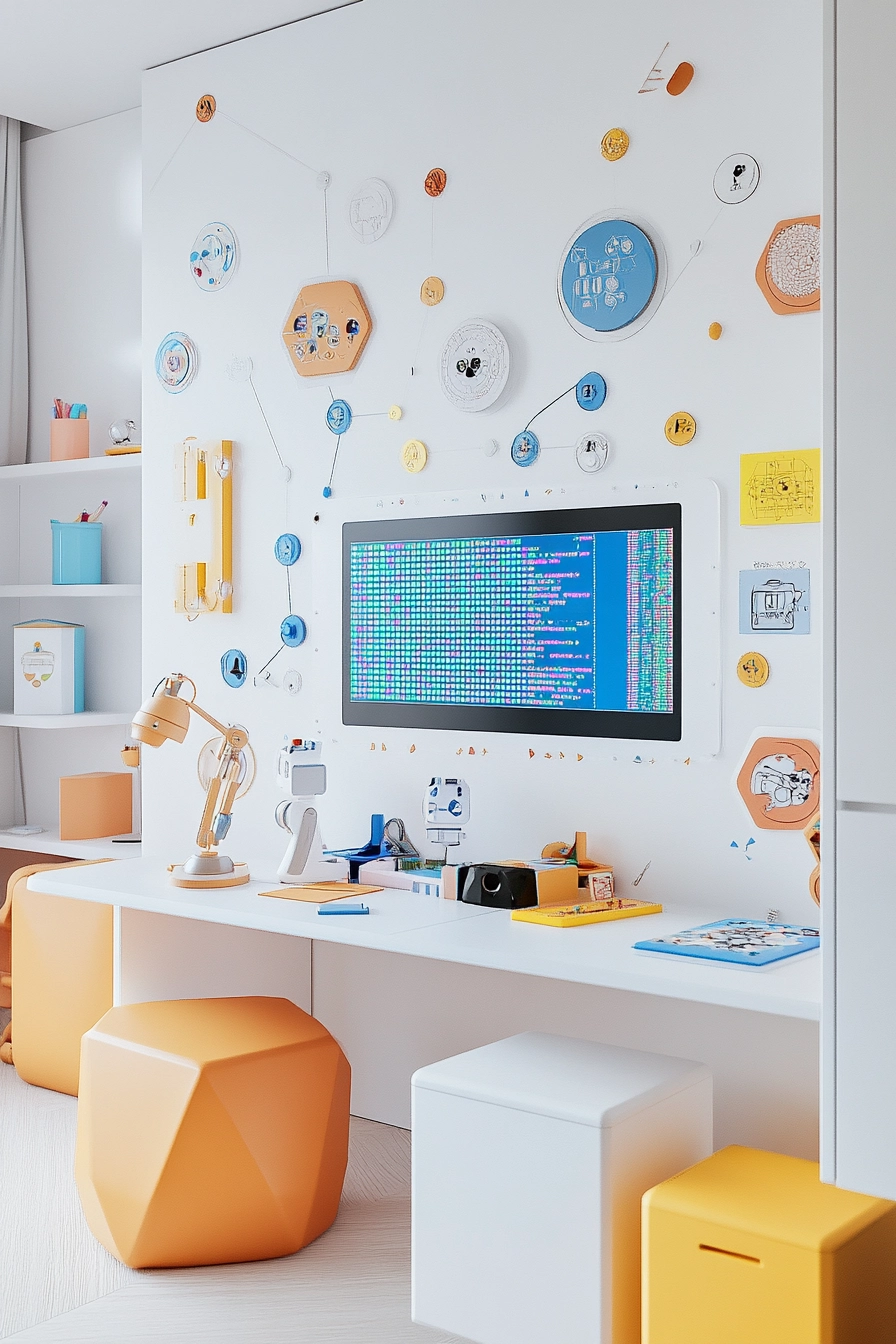

14. Fairy Tale Enchantment Room
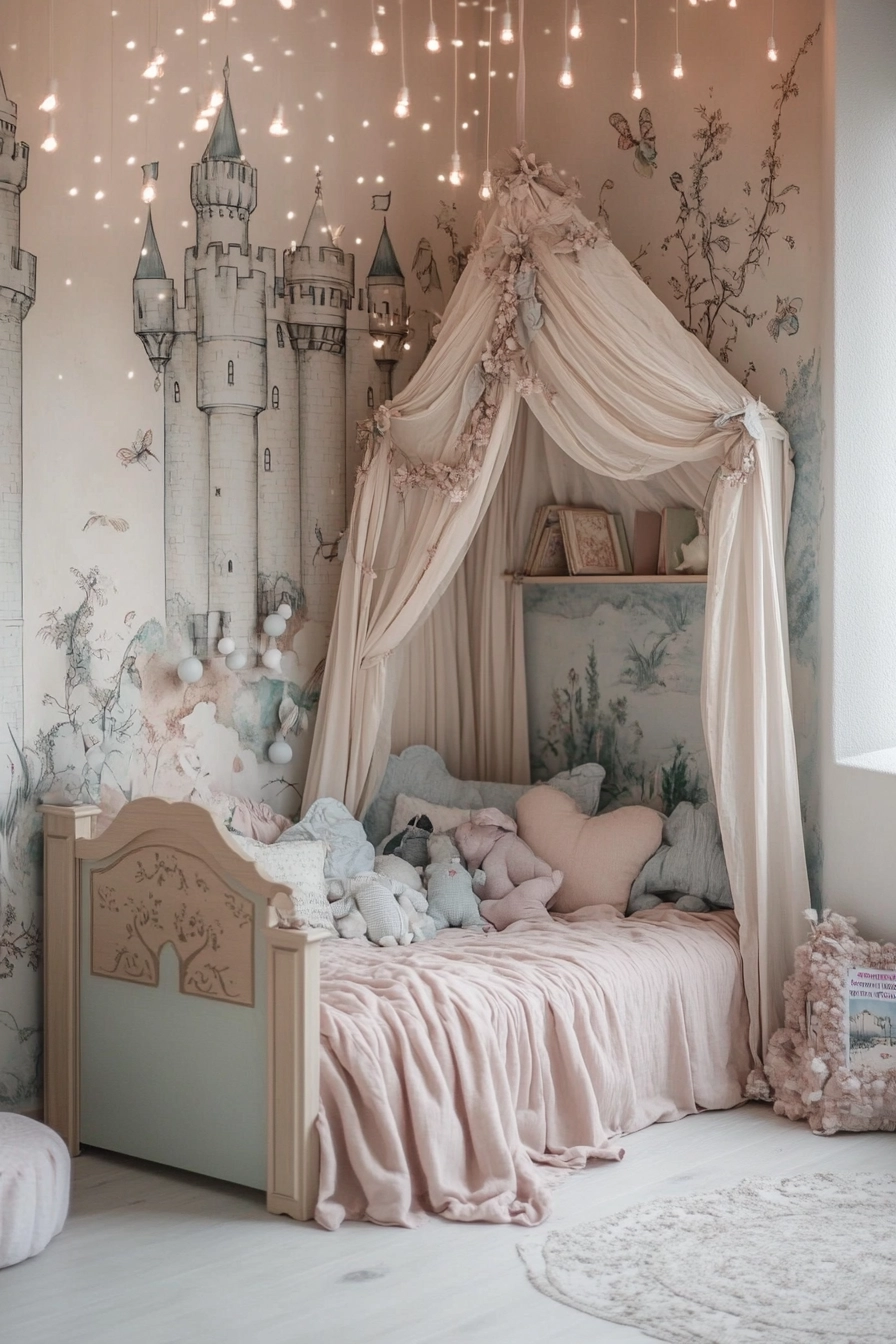
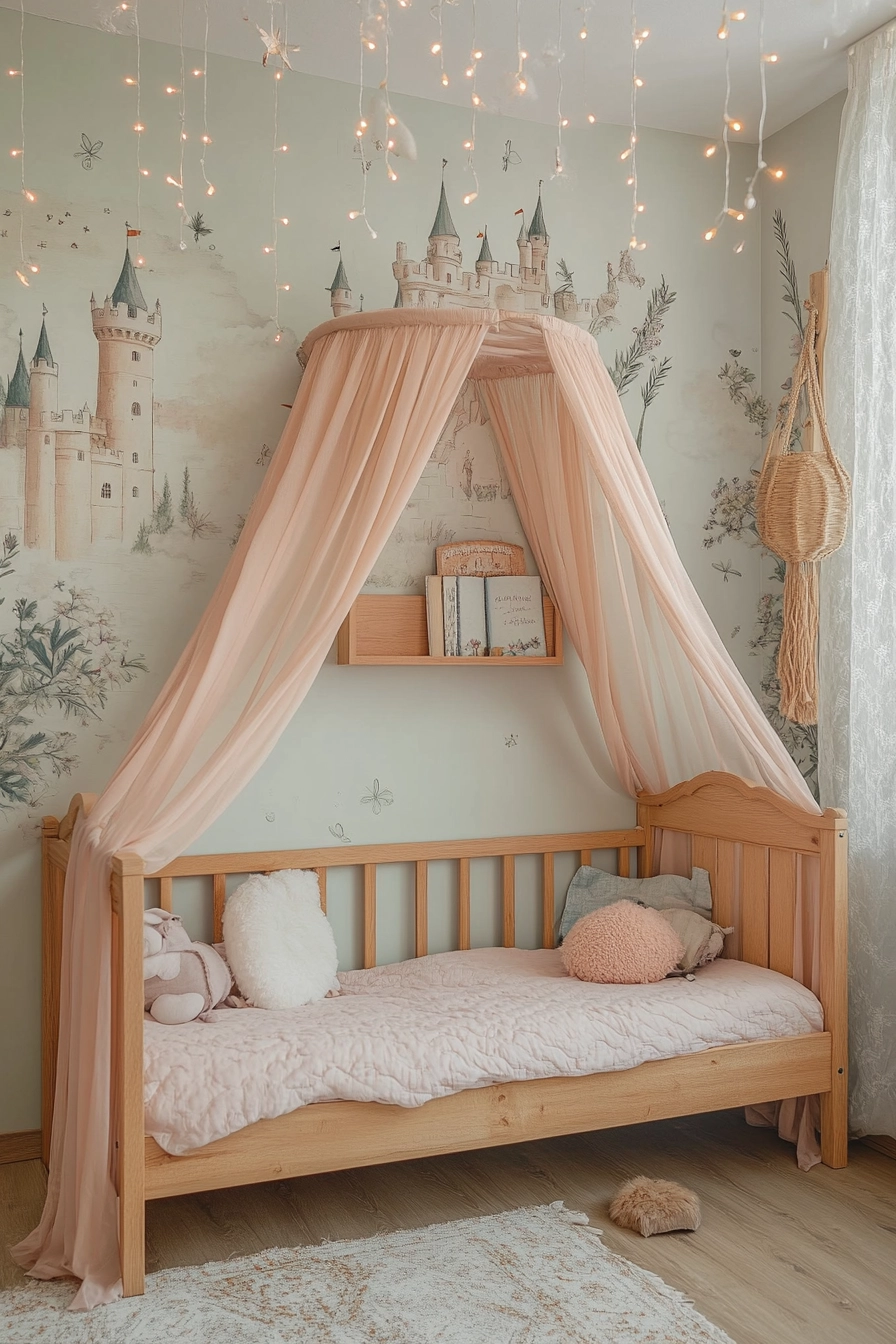
This fairy tale enchantment room is straight out of a storybook. Soft pastel walls create a dreamy backdrop, while a castle-themed bed frame sparks the imagination.
Twinkling ceiling lights add a magical touch, making bedtime feel special and enchanting.
Whimsical wall decals enhance the fairy tale theme, while a fabric canopy creates a cozy reading nook for storytime. Natural wood accents provide warmth and charm, while magical soft lighting creates a serene environment.
This design invites children to escape into their imaginations and dream big.
- Choose soft colors to create a dreamy feel.
- Incorporate themed furniture to enhance the enchanting atmosphere.
- Add magical lighting for an inviting ambiance.
- Design cozy reading nooks for storytime.
- Use whimsical decor to inspire creativity.
Pro Design Tip: Create a storybook corner with a selection of books that match the fairy tale theme for added immersion.
Budget Consideration: Use DIY projects for decor elements to achieve a fairy tale look without high costs.
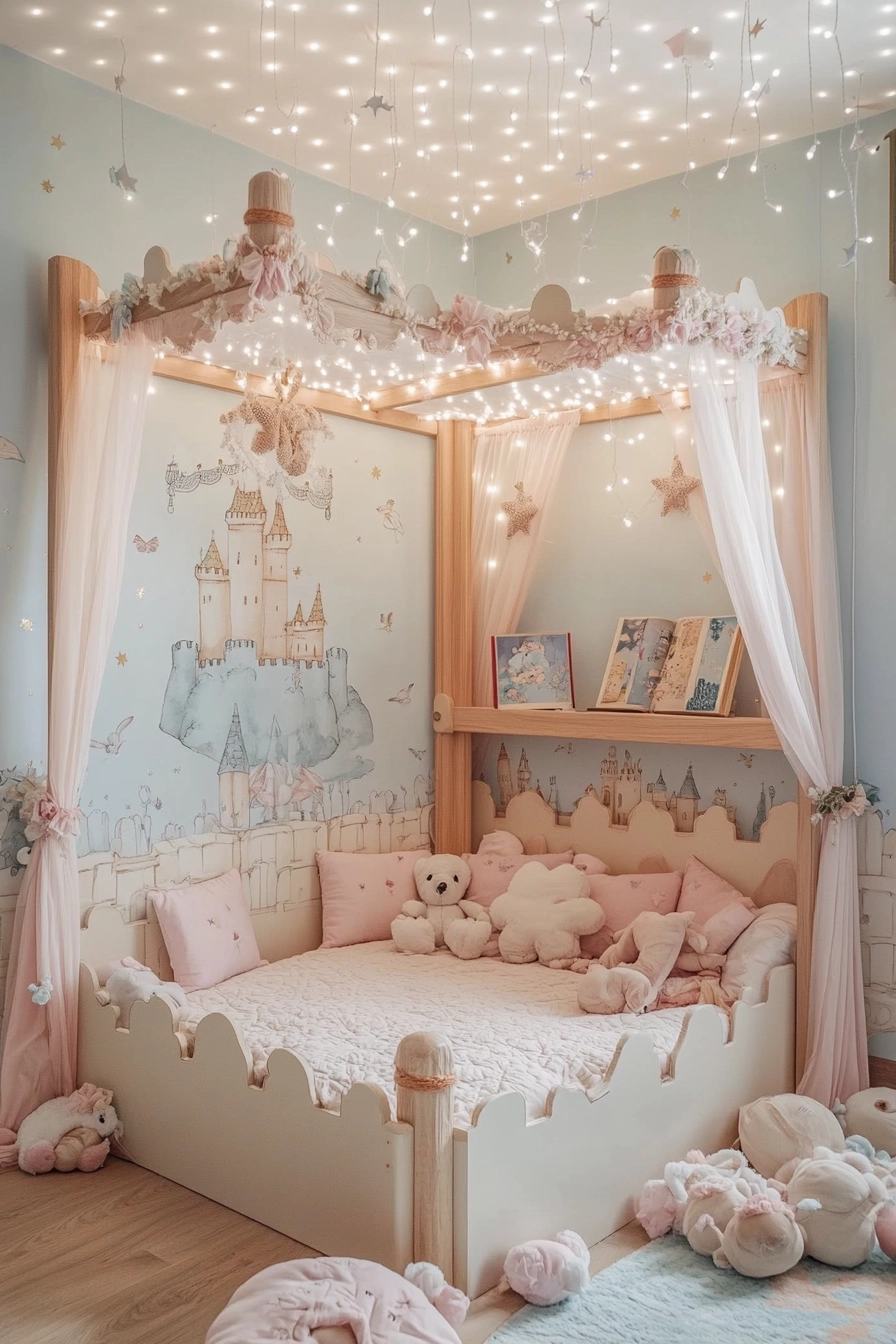
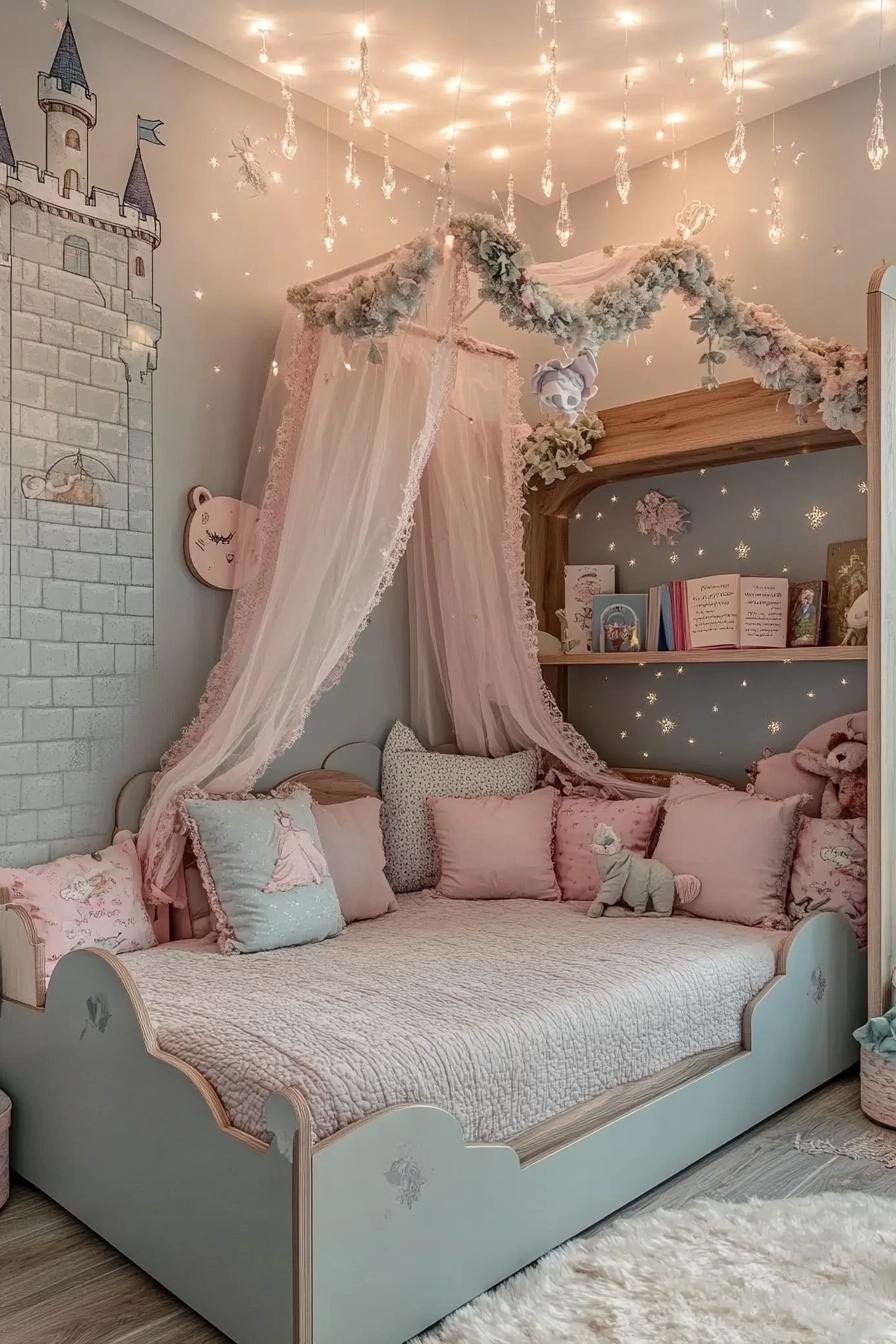
15. Minimalist Zen Room
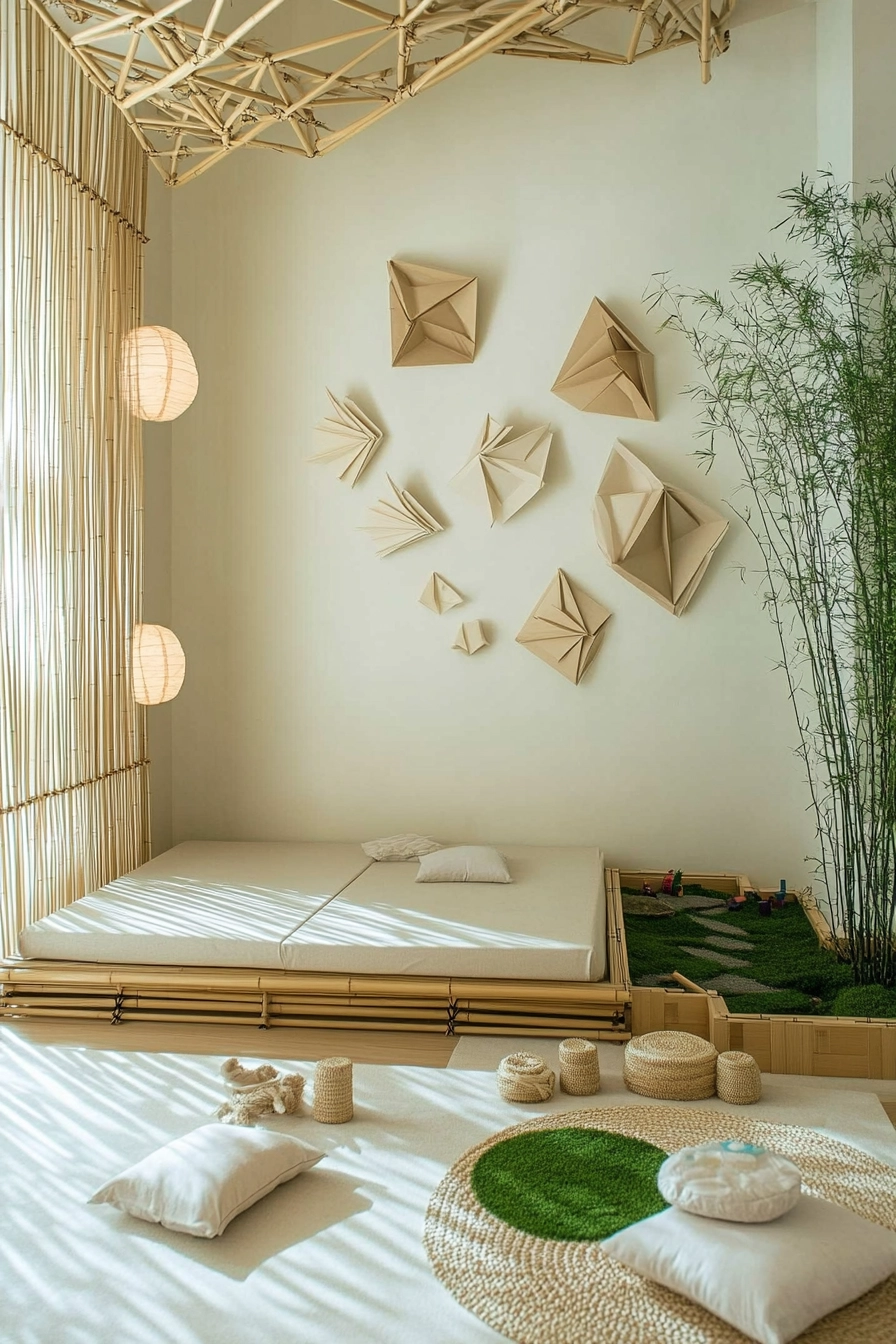
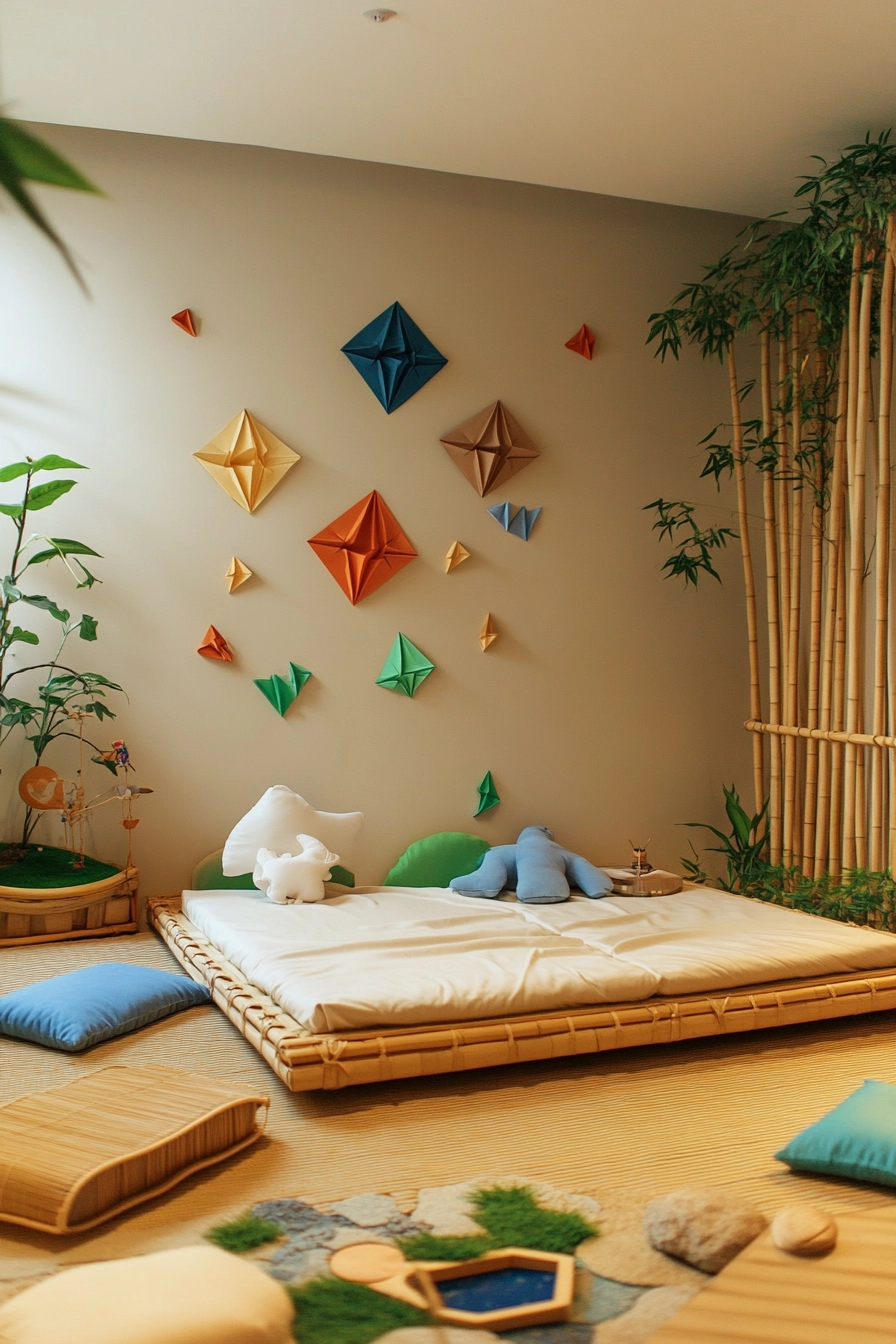
This minimalist zen room promotes tranquility and focus. A neutral color palette creates a calming environment, while a low-profile tatami-style bed invites relaxation.
Origami-inspired wall art adds a unique touch, enhancing the overall aesthetic.
An indoor zen garden play area encourages mindfulness and creativity, while natural bamboo accessories bring warmth to the space. Soft meditation cushions provide comfort for quiet moments, creating a balanced atmosphere.
This design encourages children to find peace and inspiration in their surroundings.
- Use neutral colors for a calming effect.
- Incorporate natural materials for warmth.
- Design play areas that promote mindfulness.
- Include soft seating for comfort.
- Create a balance of decor and open space.
Pro Design Tip: Add elements of nature, such as stones or plants, to foster a connection with the outdoors.
Budget Consideration: Use inexpensive materials for DIY decor to achieve a zen aesthetic without high costs.
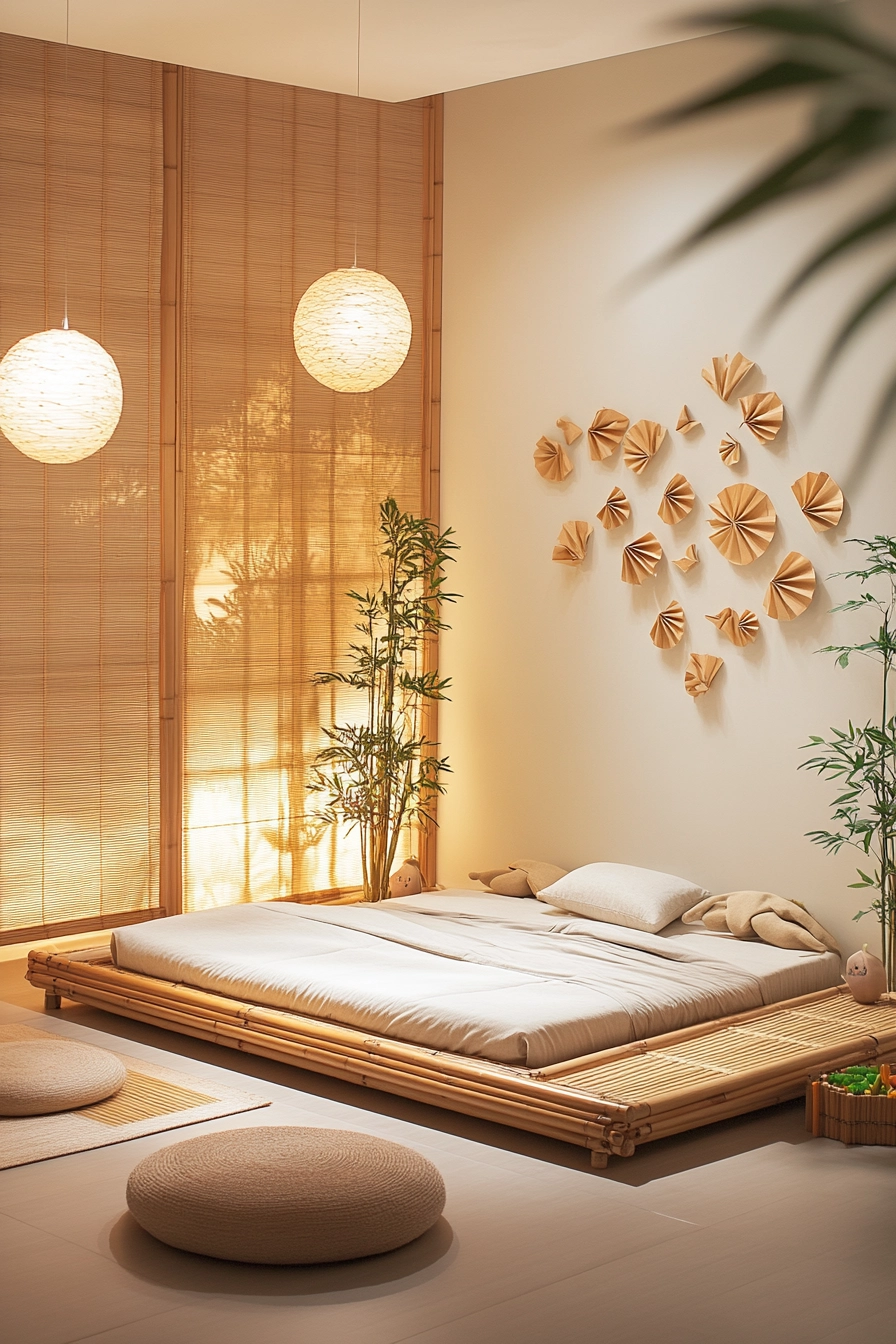
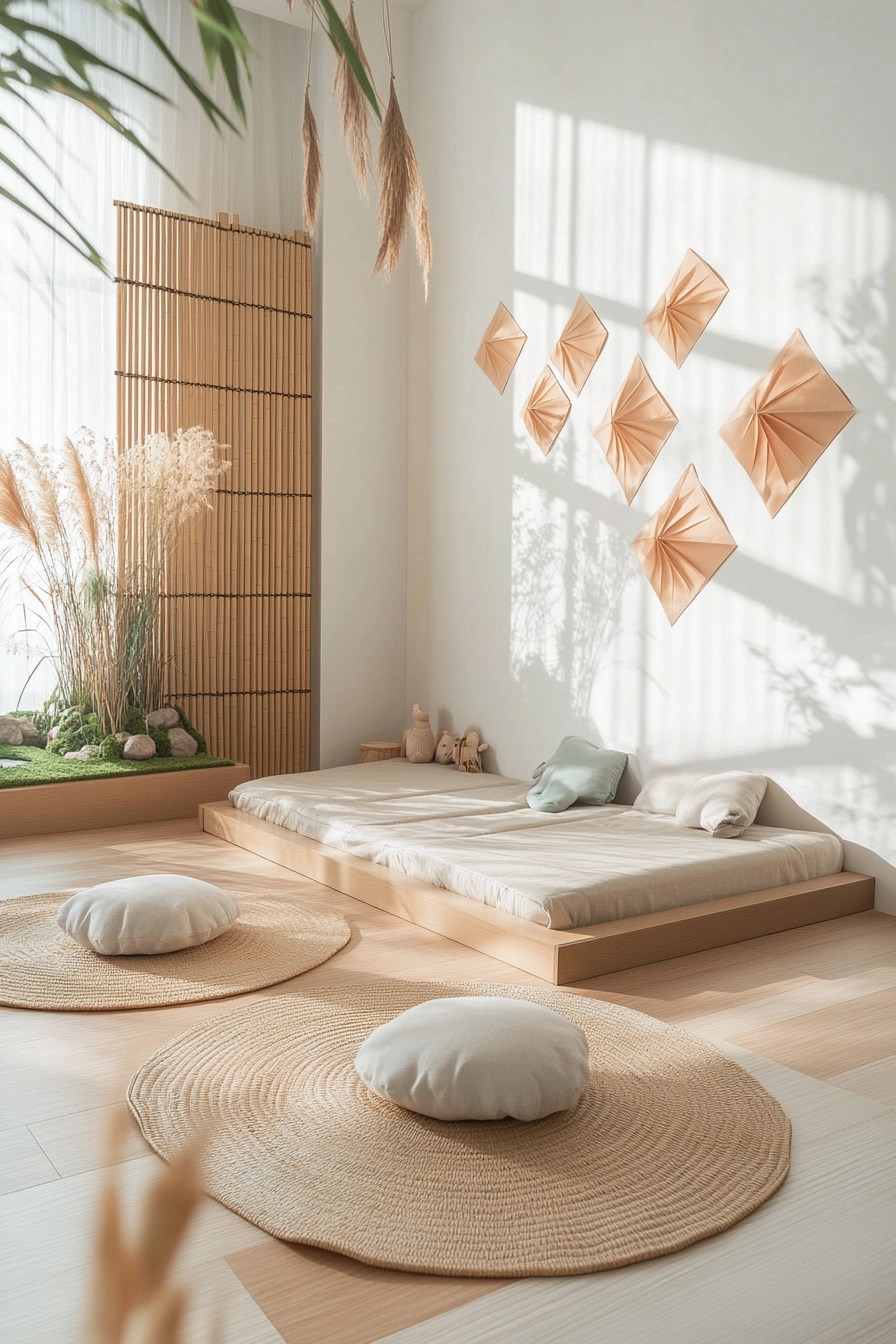
16. Circus Adventure Room
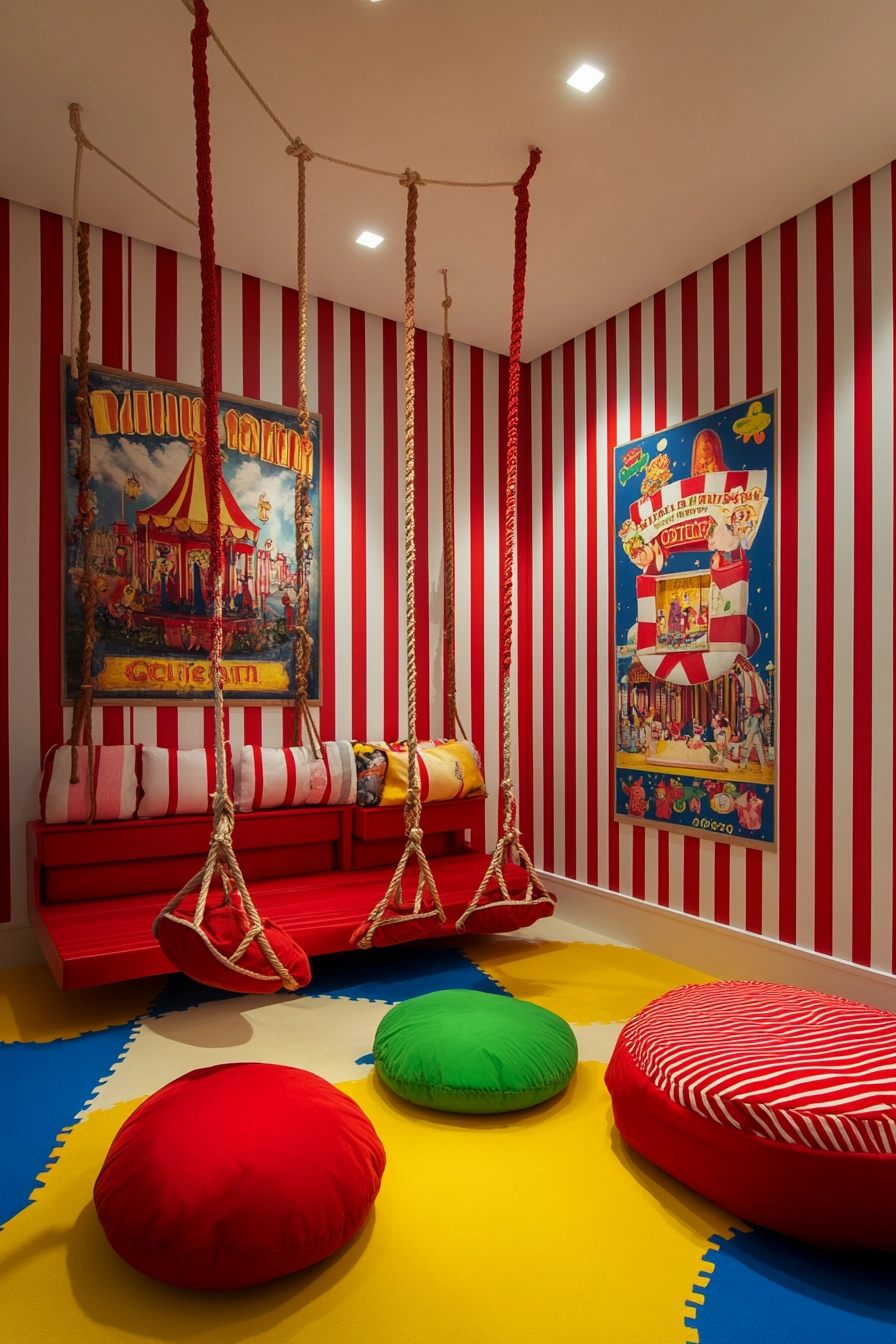
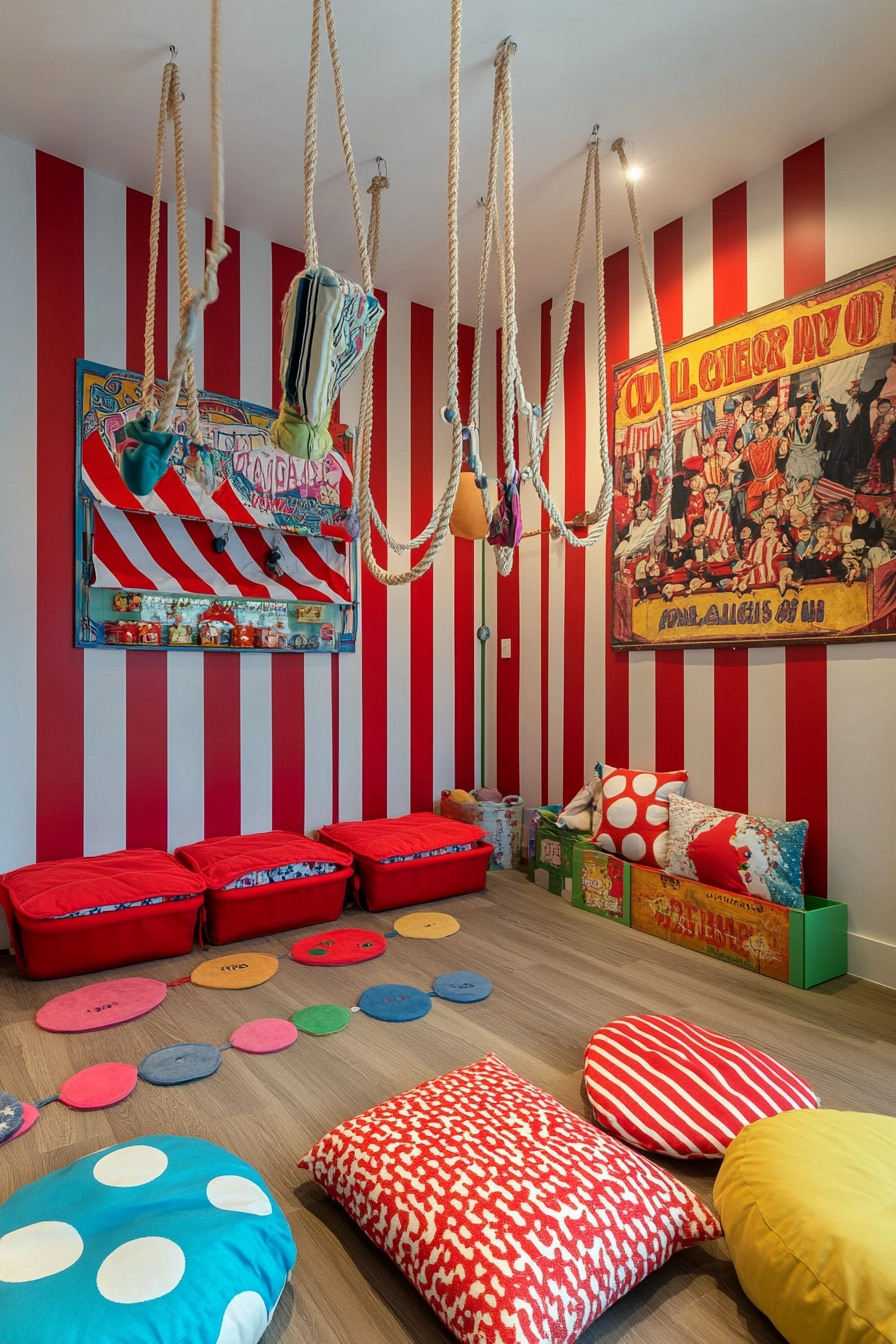
Step right up to this circus adventure room filled with excitement and fun! A red and white striped accent wall sets the stage for a playful atmosphere.
Trapeze-style hanging storage adds a whimsical touch, while colorful floor cushions create a comfortable area for play and relaxation.
A performance stage play area invites children to showcase their talents, while vintage circus posters provide nostalgic decor that sparks the imagination. This design encourages creativity and expression, making it a vibrant space for children to play and learn.
- Incorporate bold colors for a lively atmosphere.
- Use whimsical storage solutions for fun.
- Design performance areas for creativity.
- Add vintage decor for a nostalgic touch.
- Include interactive elements to enhance play.
Pro Design Tip: Create a calendar of events for themed activities that children can participate in throughout the year.
Budget Consideration: Use DIY decor ideas to create circus-themed accents without high costs.
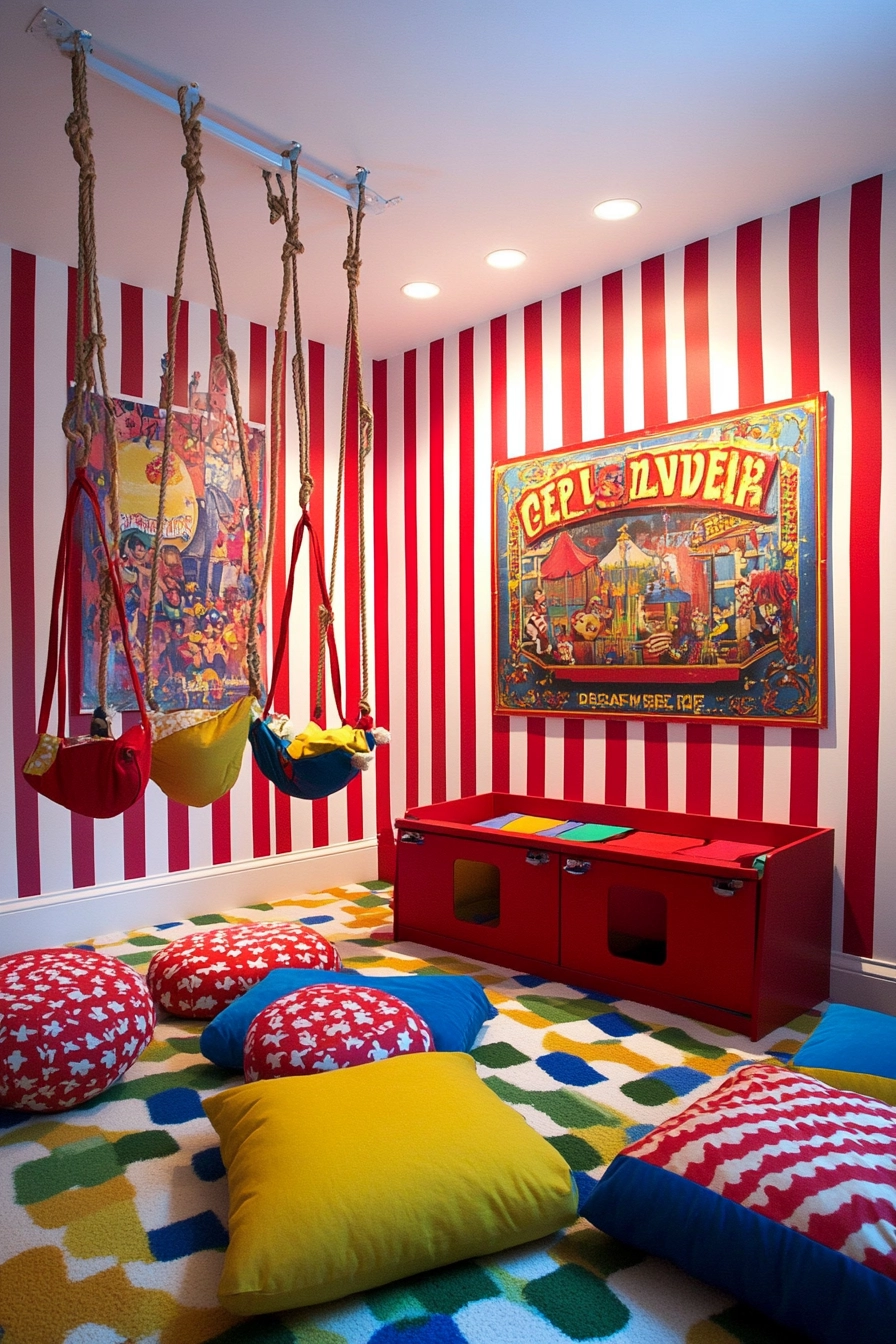
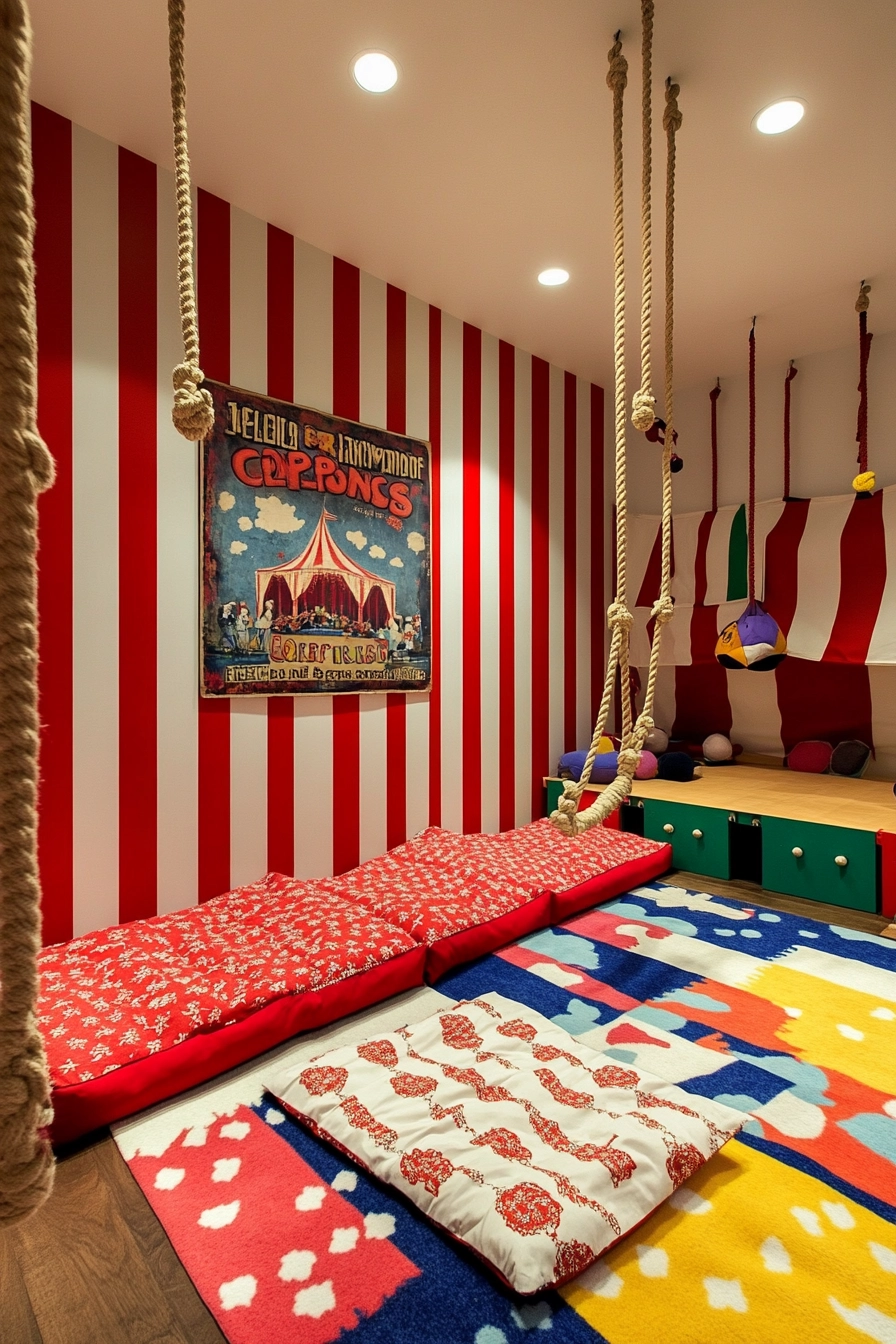
17. Sustainable Outdoor Exploration Room
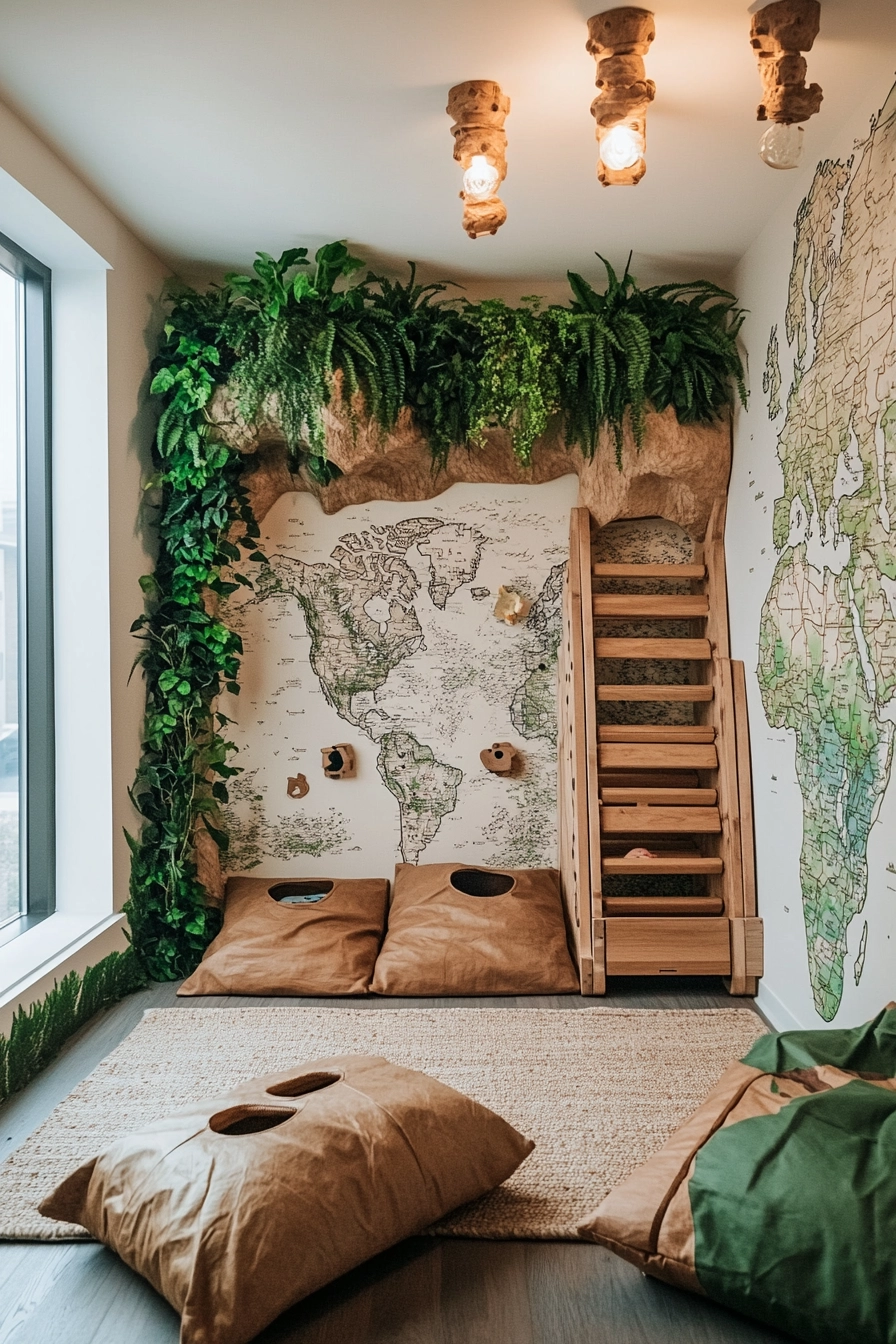
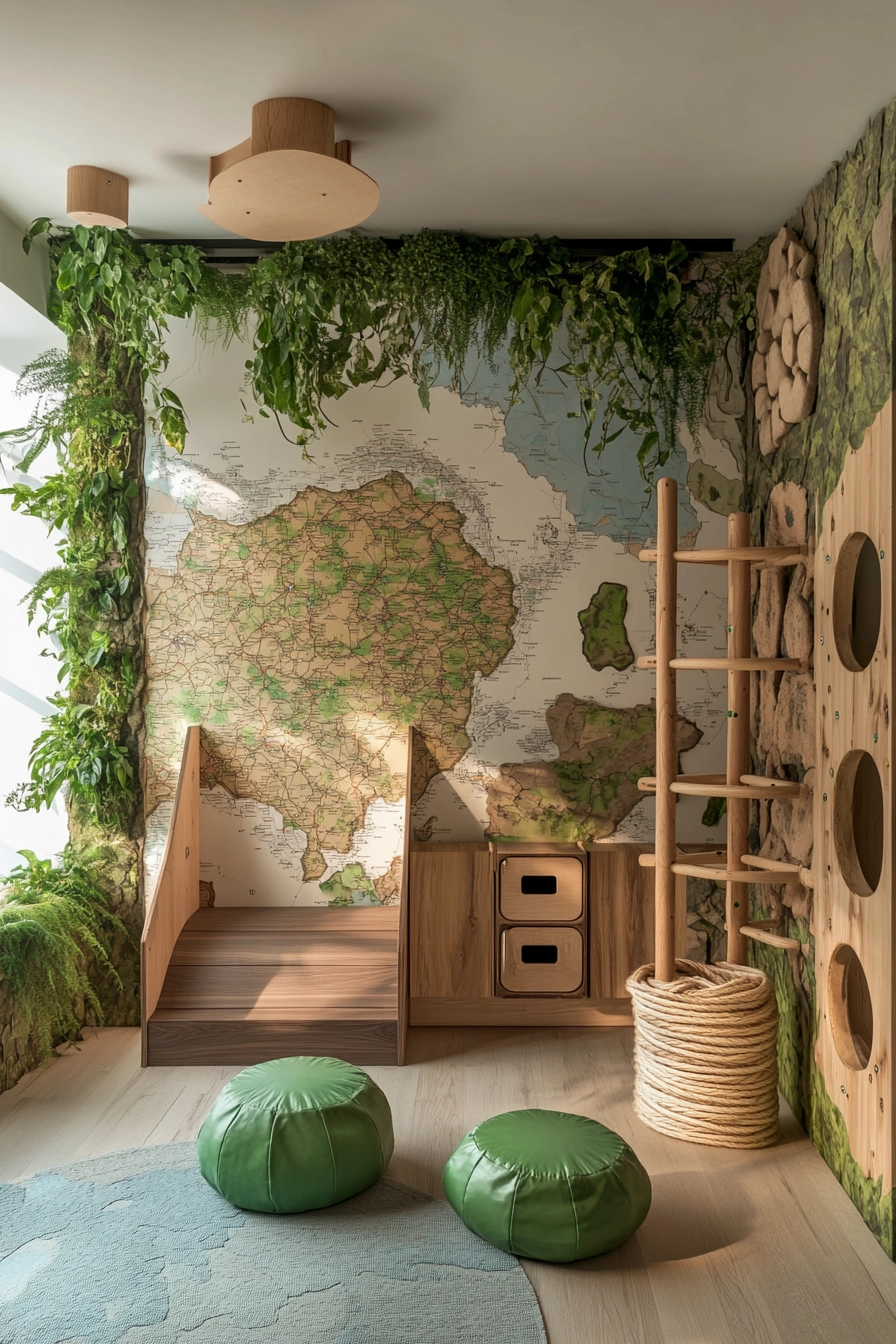
Embrace nature with this sustainable outdoor exploration room. A living plant wall brings the beauty of the outdoors inside, while nature-inspired murals create a serene backdrop.
Wooden climbing structures promote physical play, encouraging children to explore and engage with their environment.
Recycled material storage solutions provide eco-friendly organization, while a topographical wall map sparks curiosity about the natural world. The earth-tone color palette enhances the connection to nature, making it an ideal space for growth and learning.
- Incorporate plants to enhance the indoor environment.
- Use nature-inspired decor for a calming effect.
- Design play areas that promote physical activity.
- Choose eco-friendly storage solutions for organization.
- Utilize earthy colors to create a natural feel.
Pro Design Tip: Use natural materials for furniture and decor to further connect the space with the outdoors.
Budget Consideration: Seek out local resources for plants and materials to minimize costs while enhancing the design.
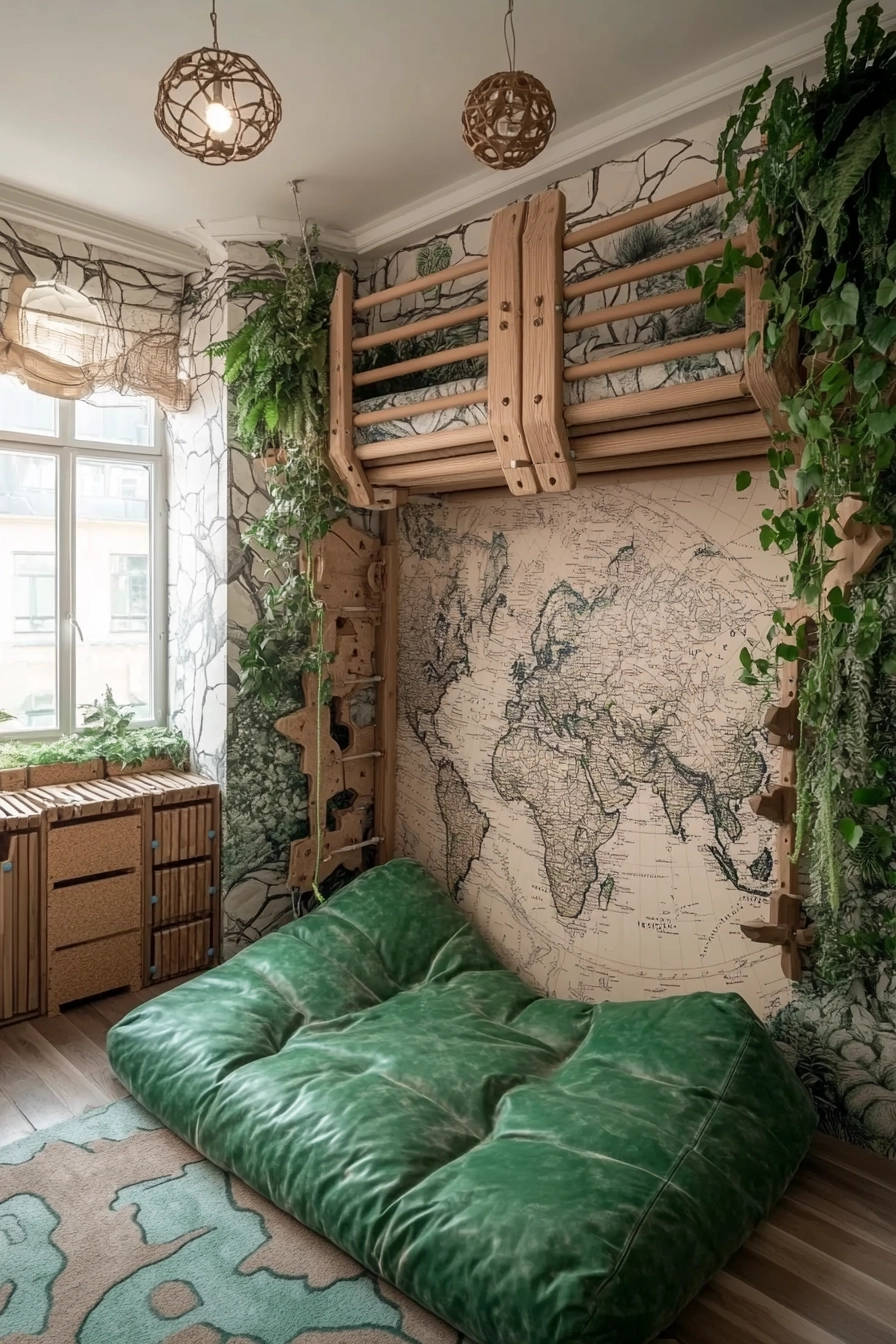
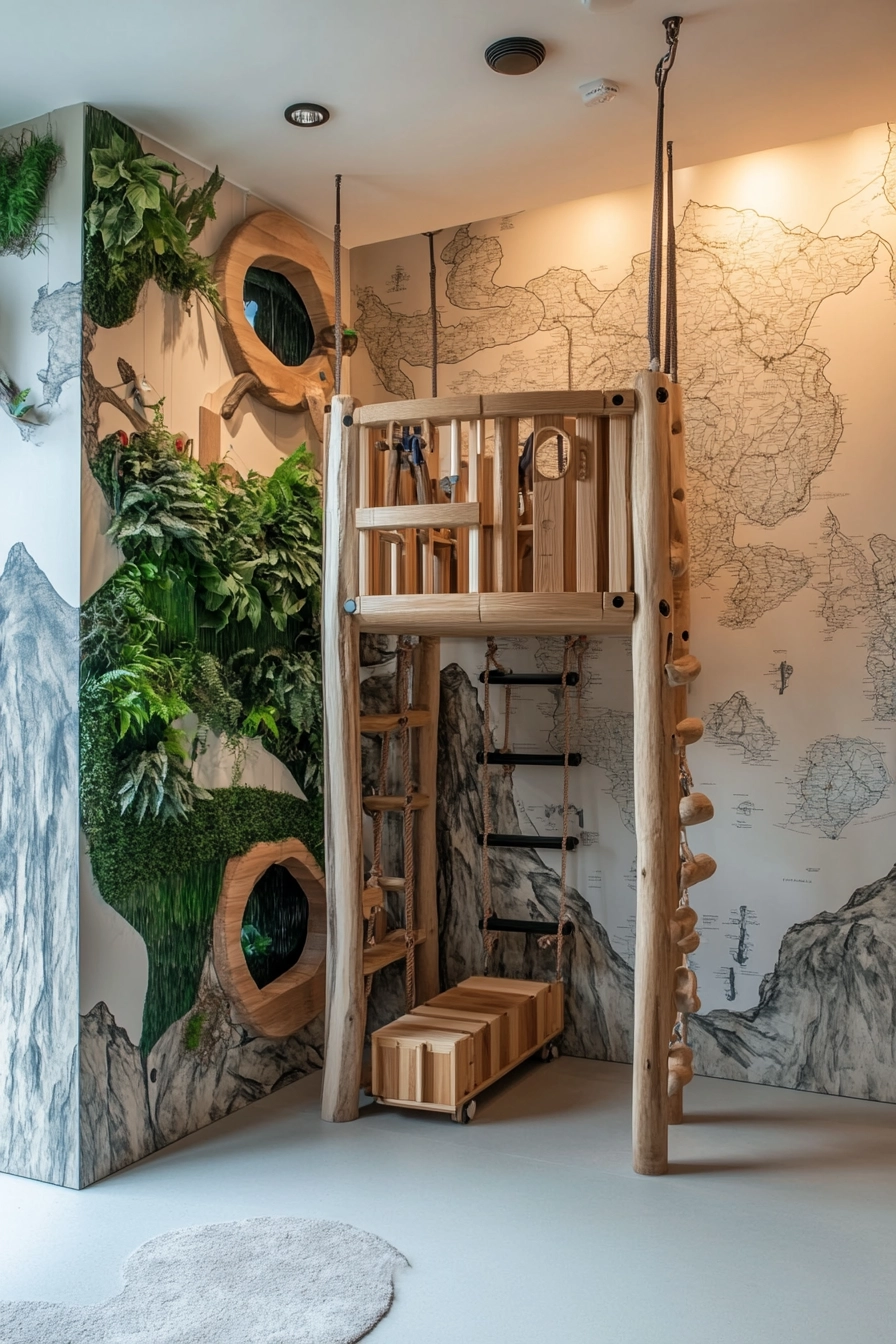
18. Digital Nomad Learning Room
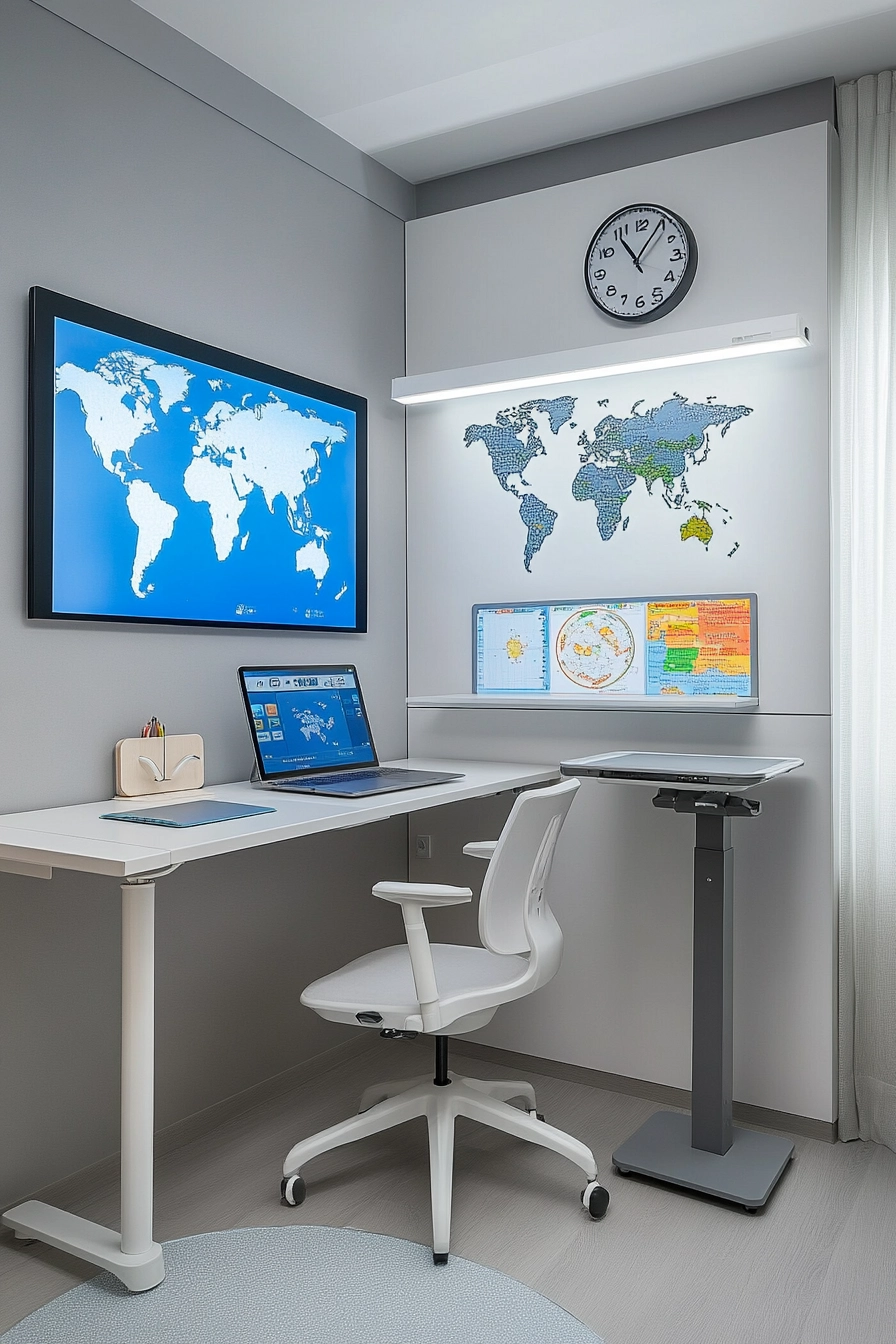

This digital nomad learning room is designed for the tech-savvy child. An integrated tech station provides a dedicated area for learning and creativity, while an adjustable standing desk accommodates various tasks.
A world time zone wall clock adds a unique touch, helping children develop an understanding of global time differences.
An interactive digital learning wall encourages exploration and engagement with technology, while ergonomic seating promotes comfort during study sessions. The minimalist white and grey color scheme creates a clean and focused atmosphere, ideal for learning and creativity.
- Incorporate tech-friendly furniture for a modern look.
- Use interactive elements to enhance learning.
- Design dedicated areas for different activities.
- Opt for ergonomic seating for comfort.
- Use a minimalist aesthetic to promote focus.
Pro Design Tip: Organize digital resources and tools into dedicated storage areas for easy access and organization.
Budget Consideration: Look for budget-friendly tech accessories and tools to create a functional learning environment without overspending.

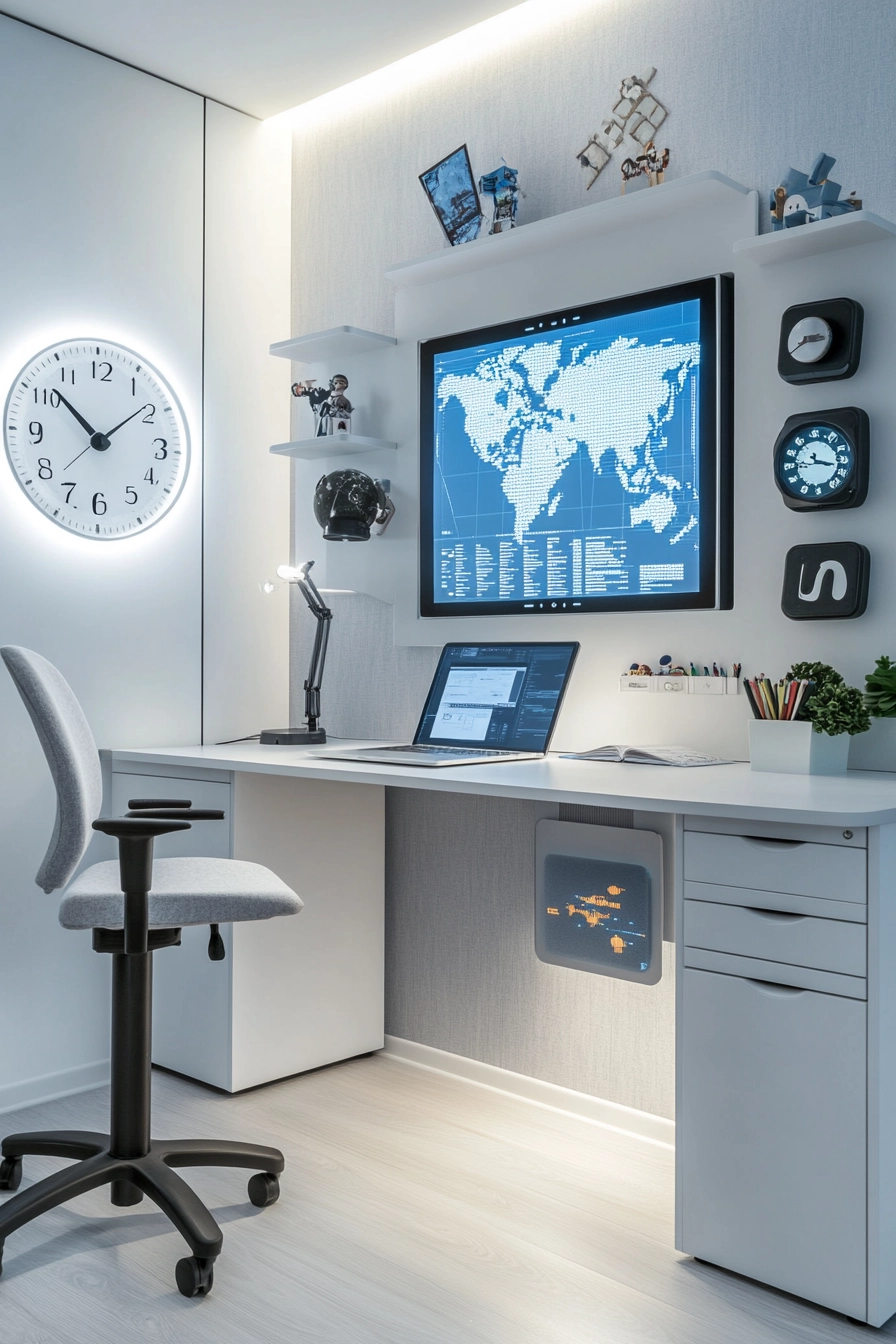
19. Cultural Heritage Room
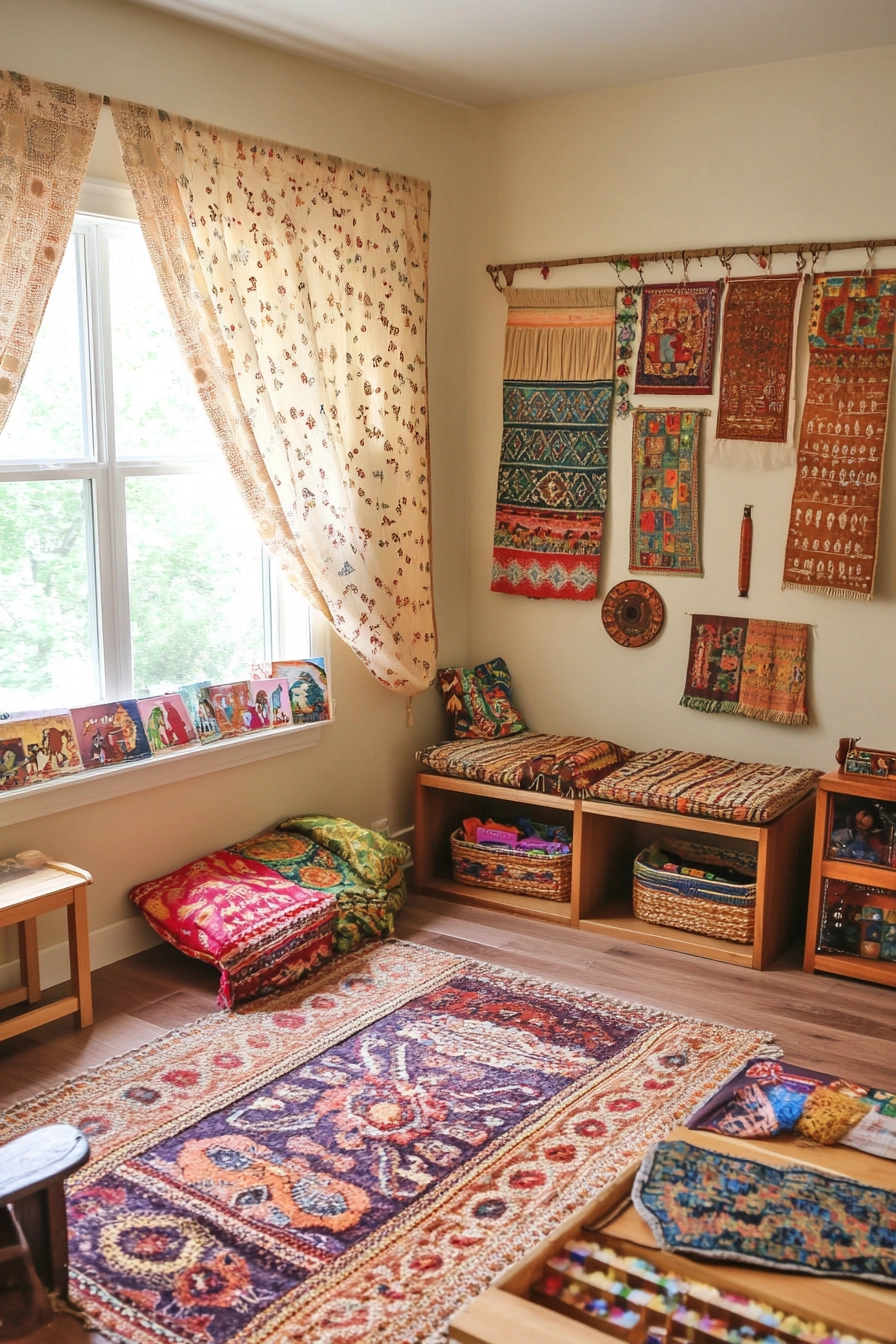
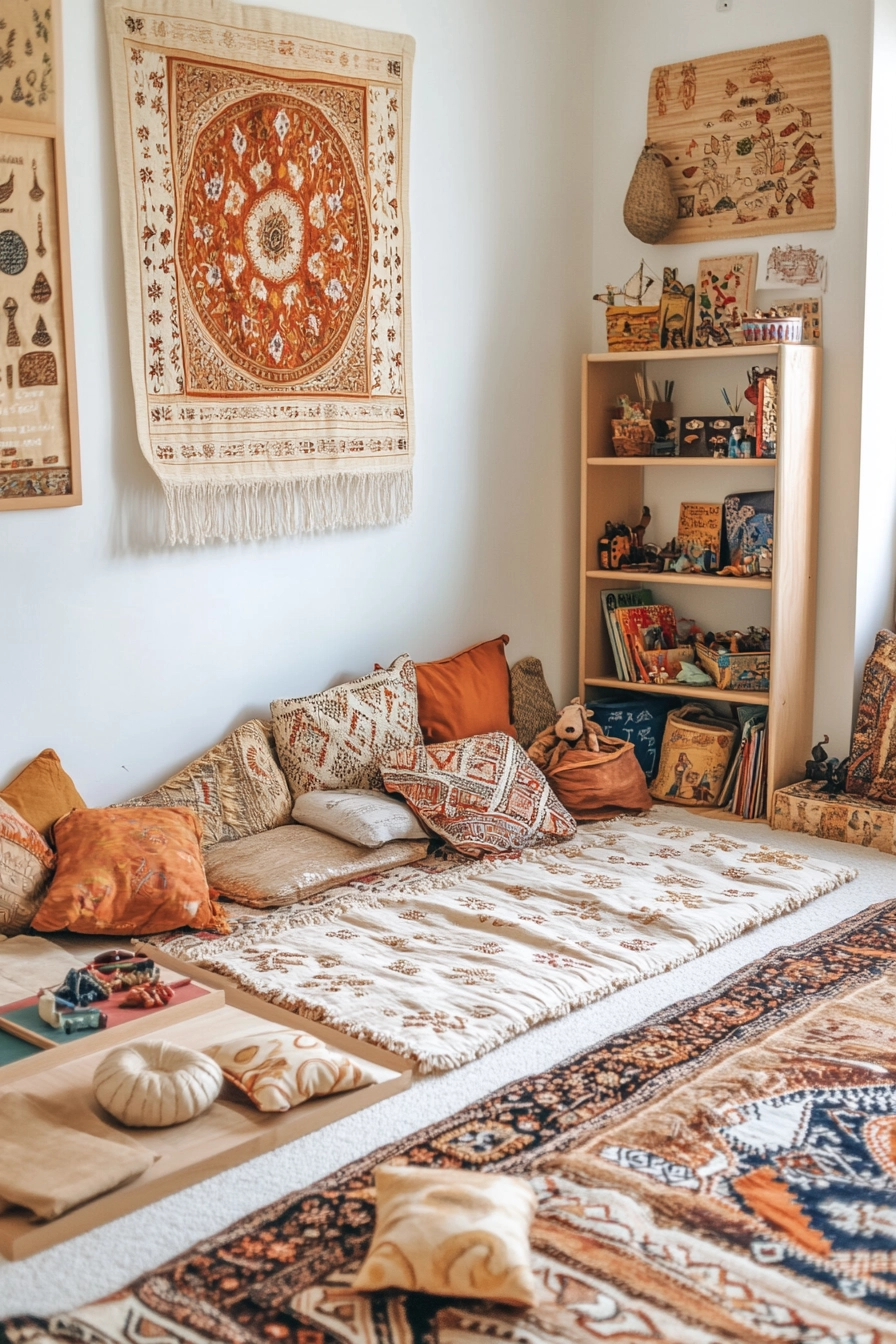
This cultural heritage room celebrates tradition and diversity through design. Traditional textile wall hangings provide a rich visual backdrop, while handcrafted furniture adds authenticity and character to the space.
Language learning resources promote education and curiosity about different cultures.
An ancestral artifact display showcases family history, sparking conversations and connections with the past. The soft earth-tone color palette creates a warm and inviting atmosphere, making it an ideal space for storytelling and learning.
- Incorporate traditional textiles for a cultural feel.
- Use handcrafted furniture for authenticity.
- Include educational resources for learning opportunities.
- Design display areas for family history and artifacts.
- Choose warm colors for comfort and connection.
Pro Design Tip: Rotate the displayed artifacts to keep the space dynamic and engaging.
Budget Consideration: Visit local markets or thrift stores for unique items that add character without high costs.
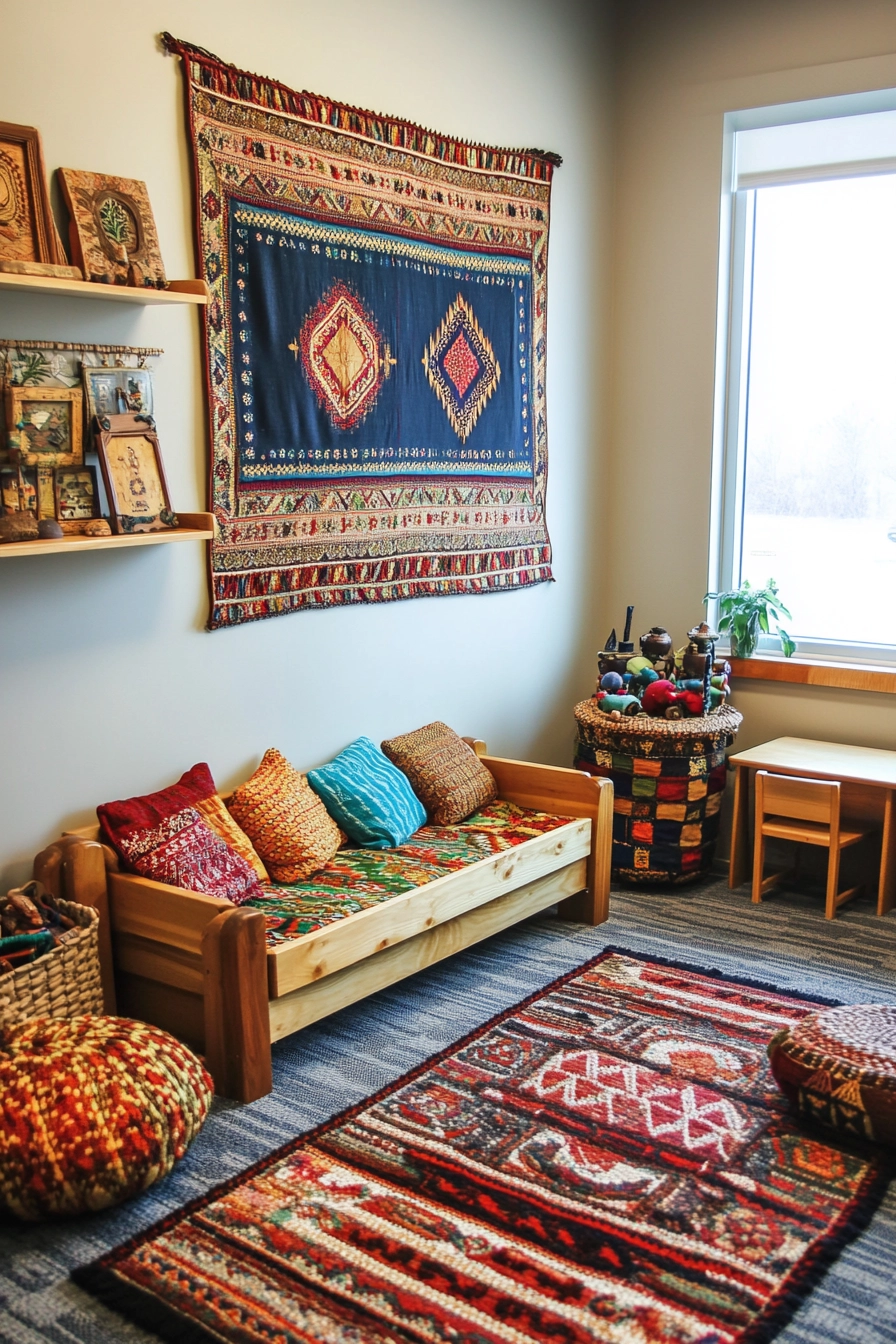
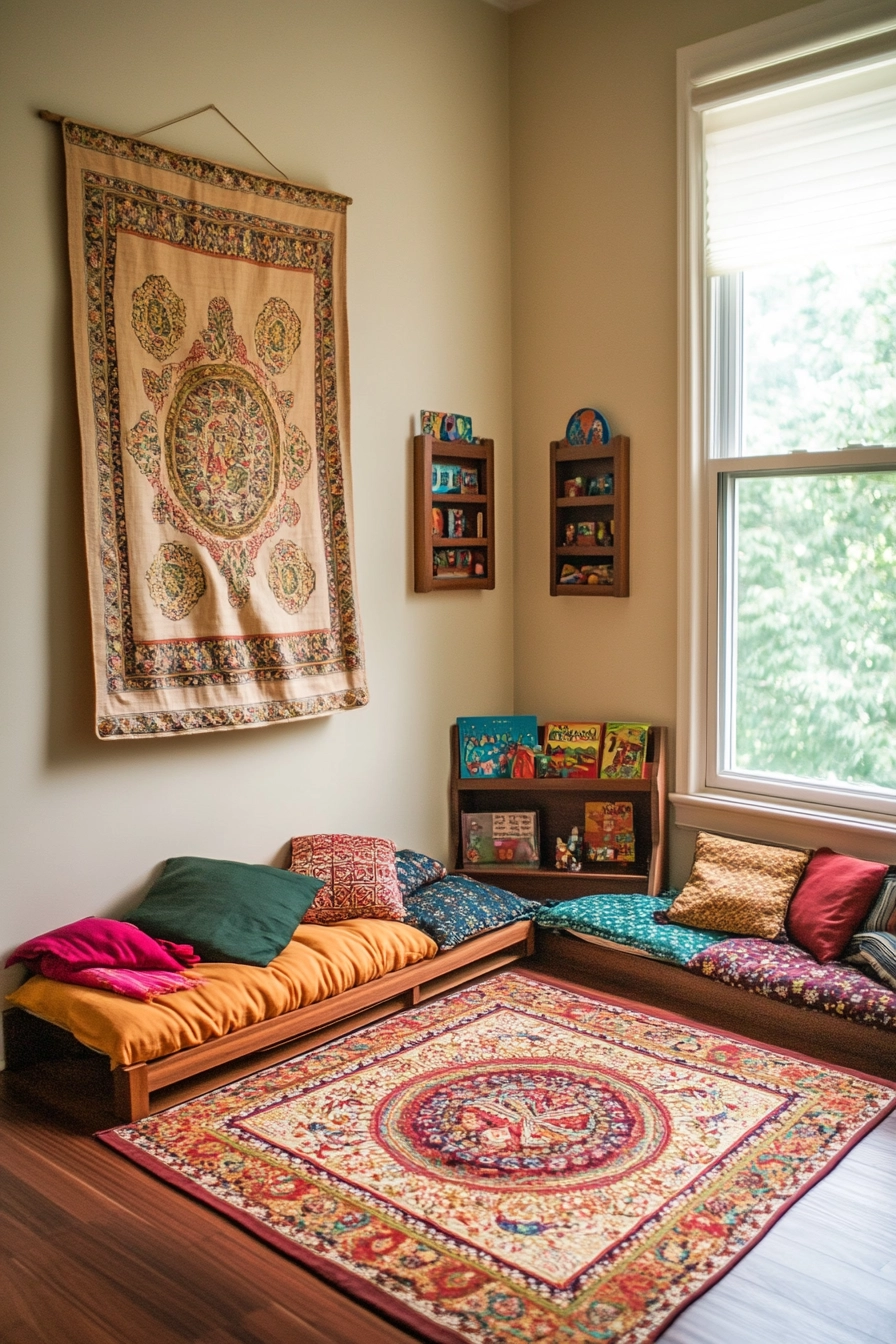
20. Adaptive Mobility Room
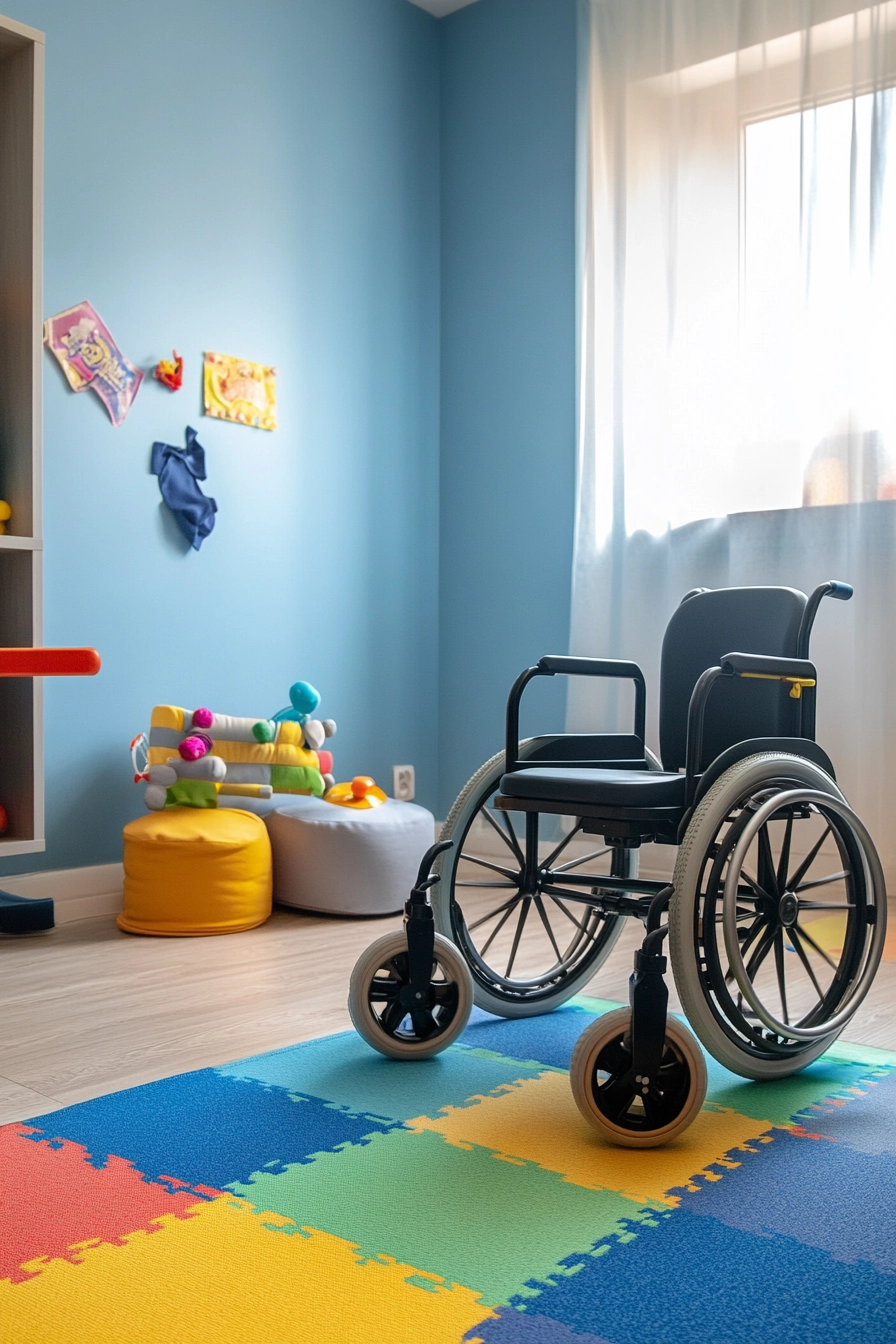
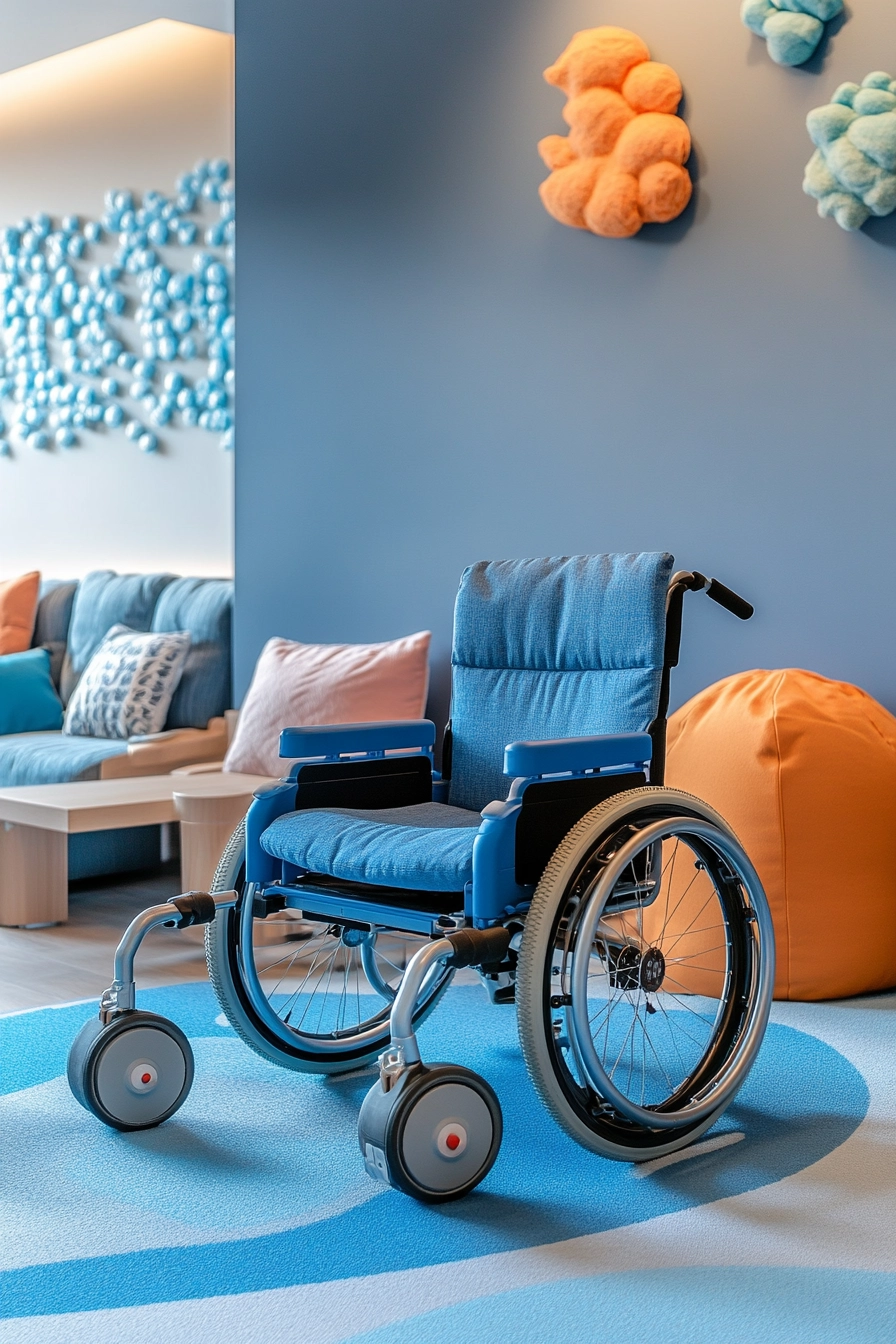
This adaptive mobility room is designed with inclusivity in mind. Wheelchair-accessible furniture ensures that all children can navigate the space comfortably.
Sensory-friendly textures create a calming environment, while adjustable height surfaces accommodate various needs and activities.
Inclusive play stations provide opportunities for all children to engage in fun and learning, promoting social interaction and collaboration. The soft color palette enhances the welcoming atmosphere, making it a safe and nurturing environment.
- Design with accessibility in mind for all children.
- Incorporate sensory-friendly elements for comfort.
- Use adjustable furniture for flexibility and inclusivity.
- Create play areas that encourage social interaction.
- Opt for soft colors to promote a calming environment.
Pro Design Tip: Work with specialists in inclusive design to ensure that the space meets all necessary requirements for comfort and accessibility.
Budget Consideration: Look for adaptive furniture options that are both budget-friendly and high-quality to create an inclusive environment.
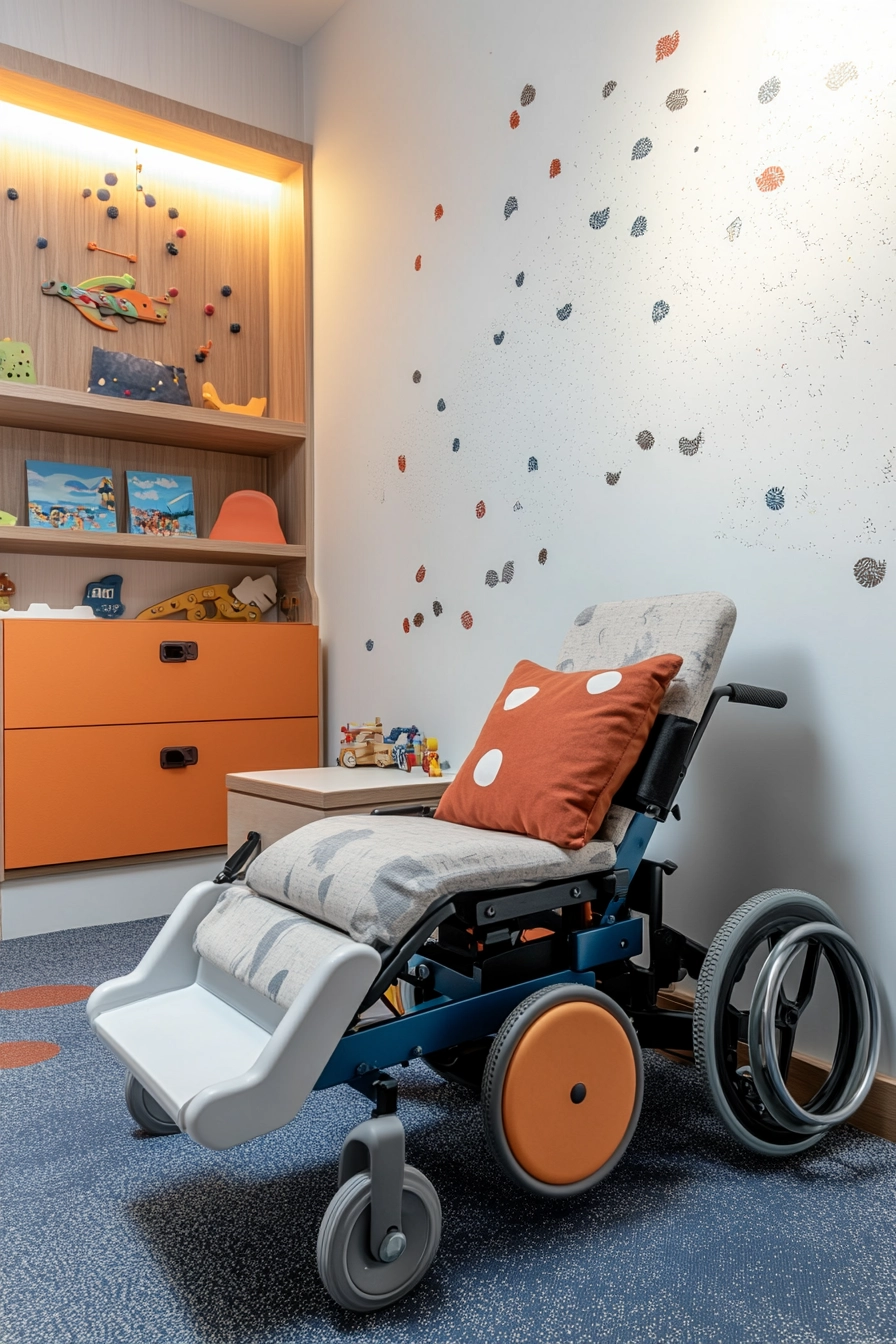
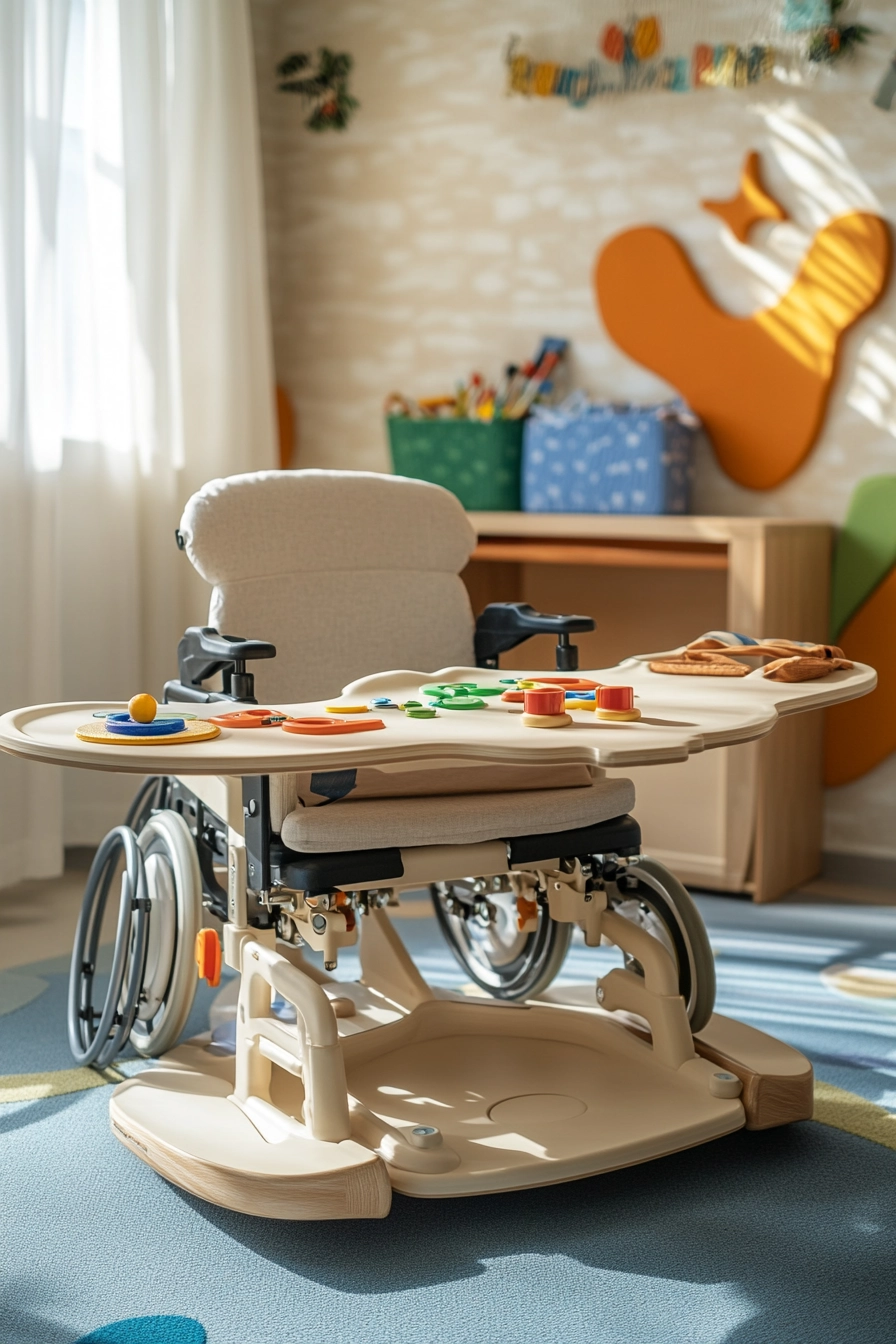
Conclusion
In conclusion, creating a small children’s room is an exciting opportunity for parents to nurture their child’s imagination, creativity, and independence. The diverse design concepts explored in this article demonstrate that there are endless possibilities for crafting a space that is both functional and inspiring.
From Montessori and Scandinavian styles to adventure-themed rooms and inclusive designs, each idea emphasizes the importance of thoughtful design in shaping a child’s environment.
By incorporating elements that resonate with your child’s personality and interests, you can create a room that not only serves as a place for rest but also fosters learning and exploration. We encourage you to experiment with these ideas, taking inspiration from the themes presented here, and transform your child’s space into a unique reflection of who they are and what they love.

